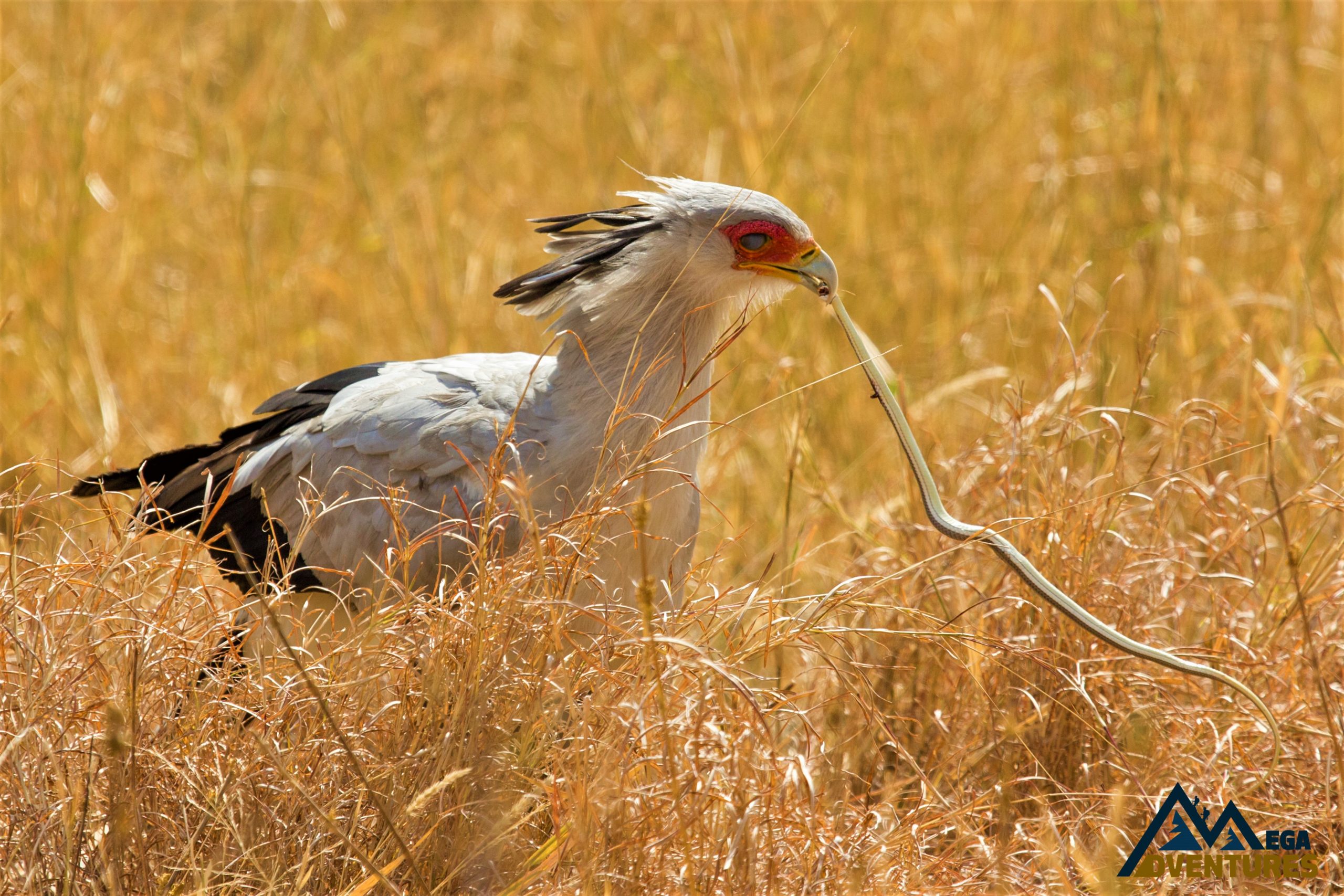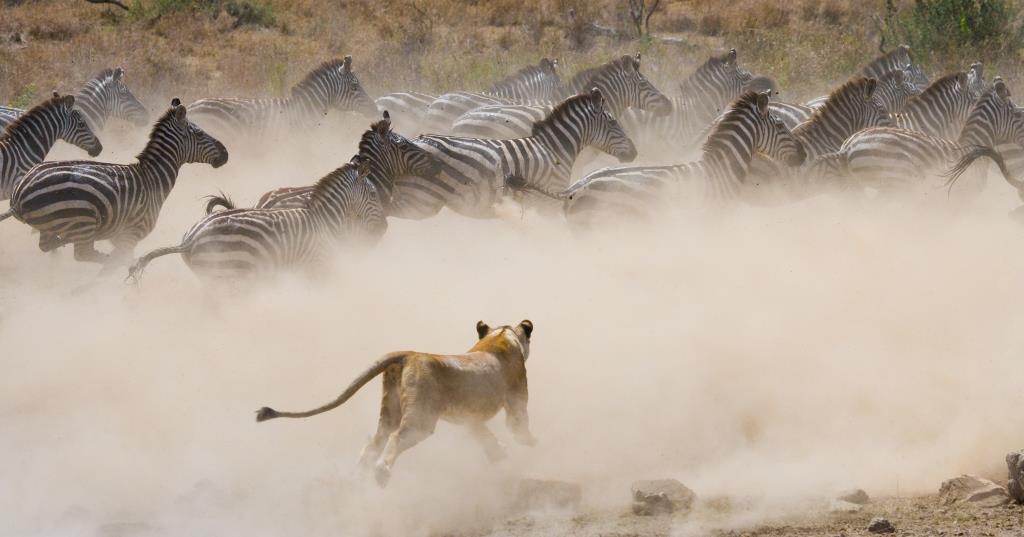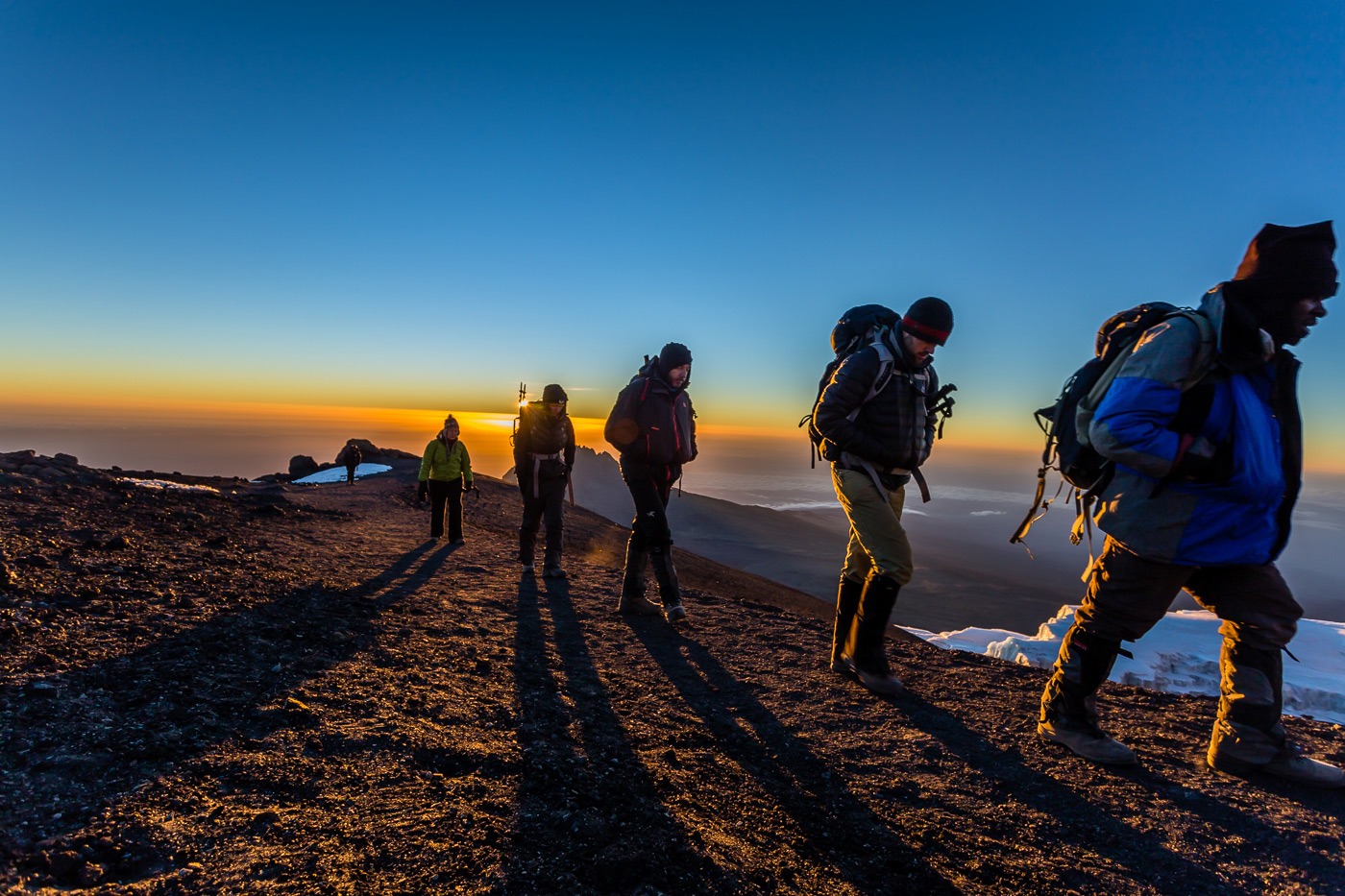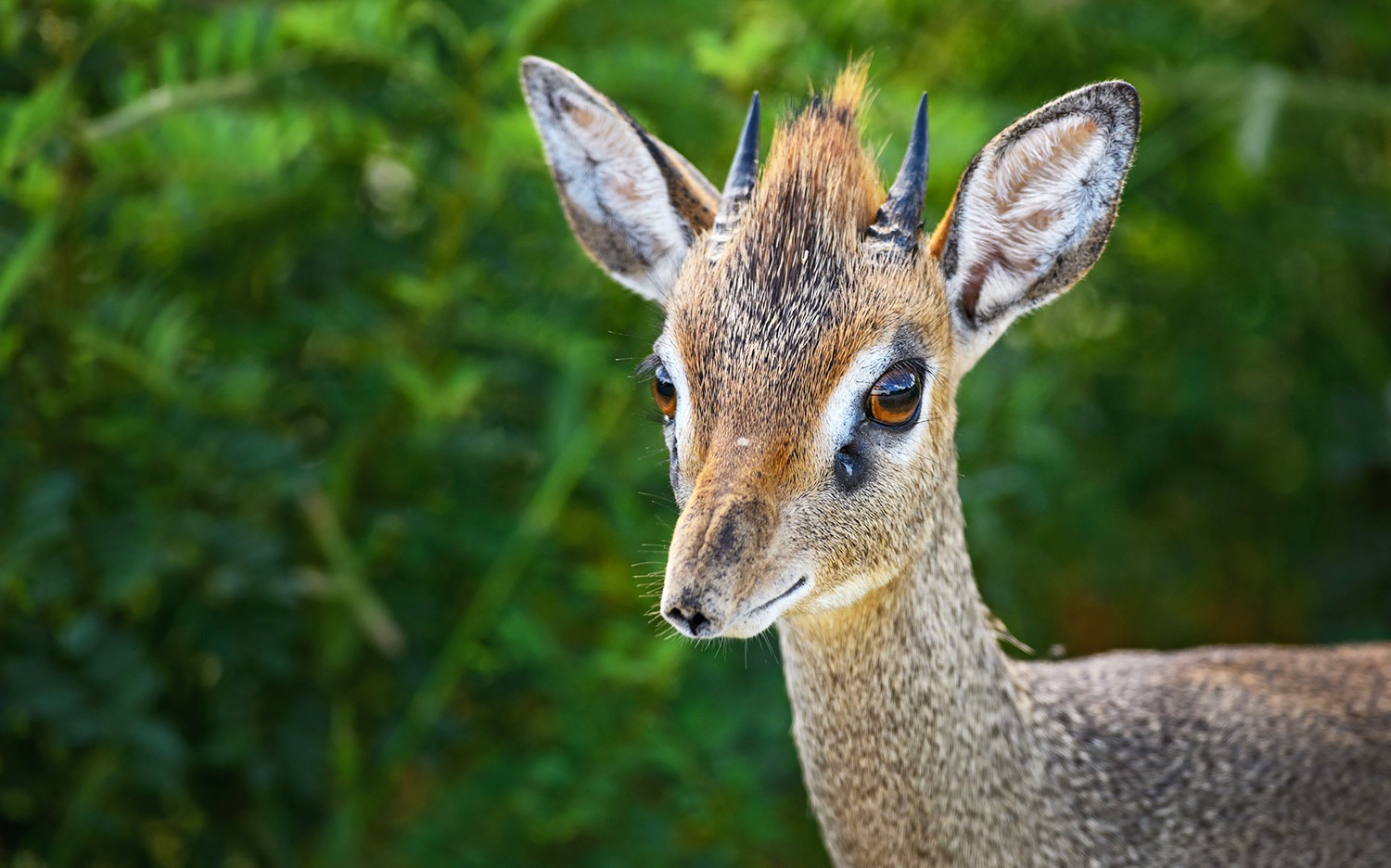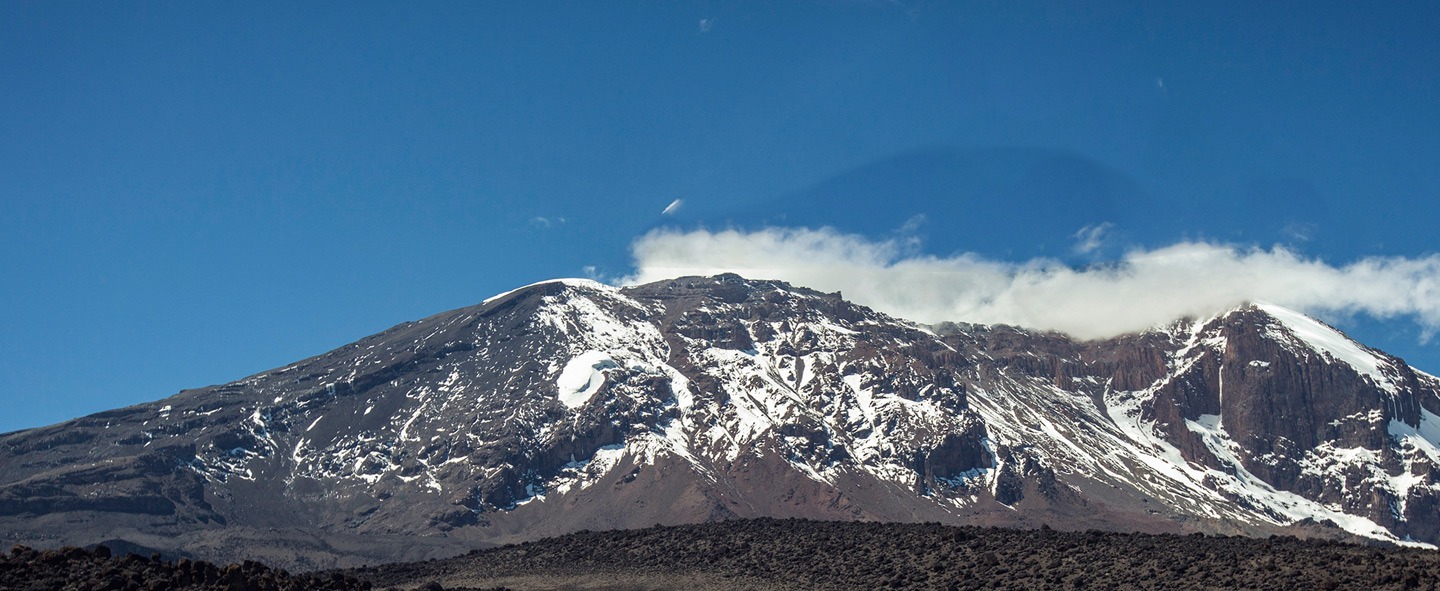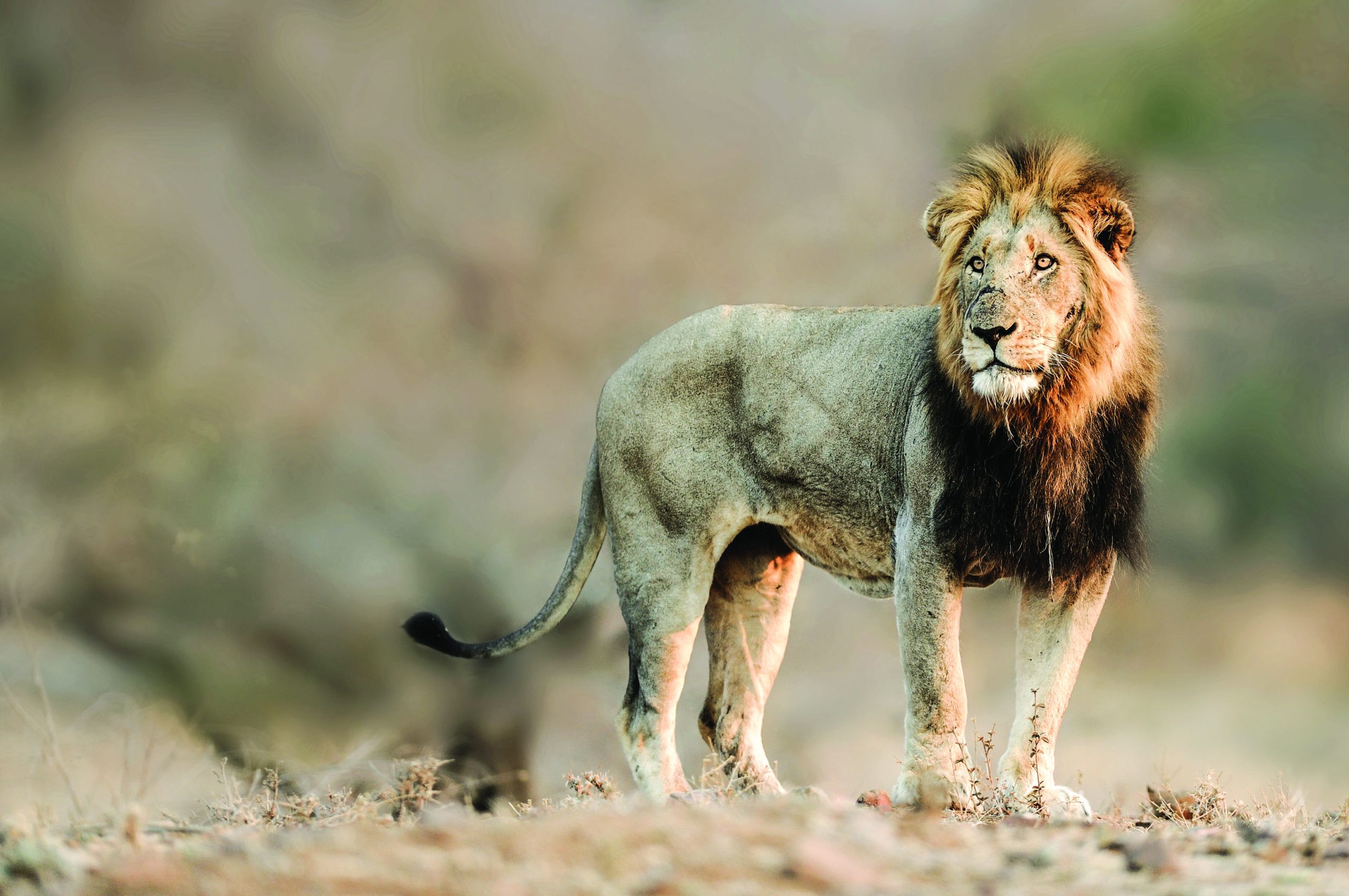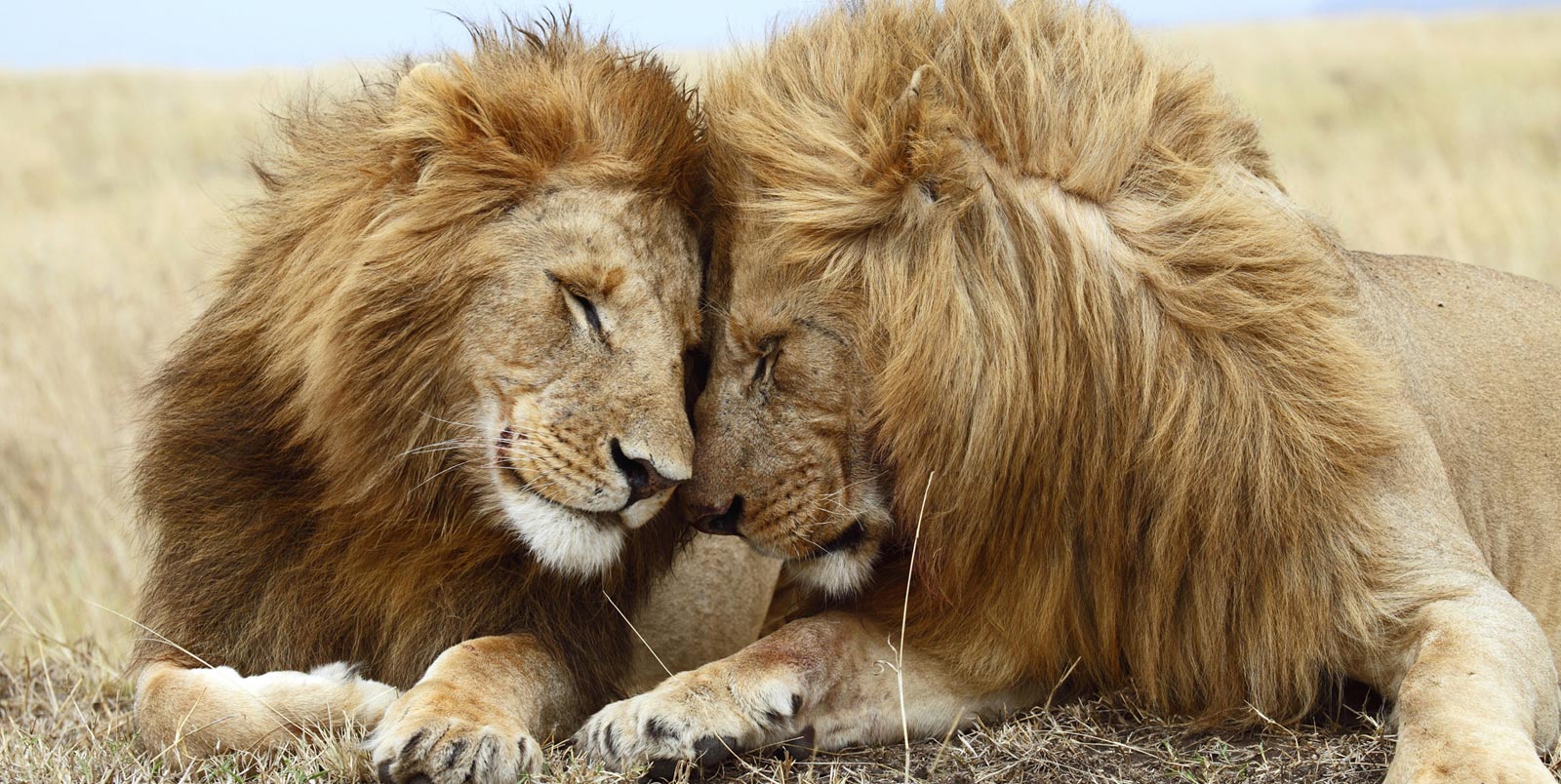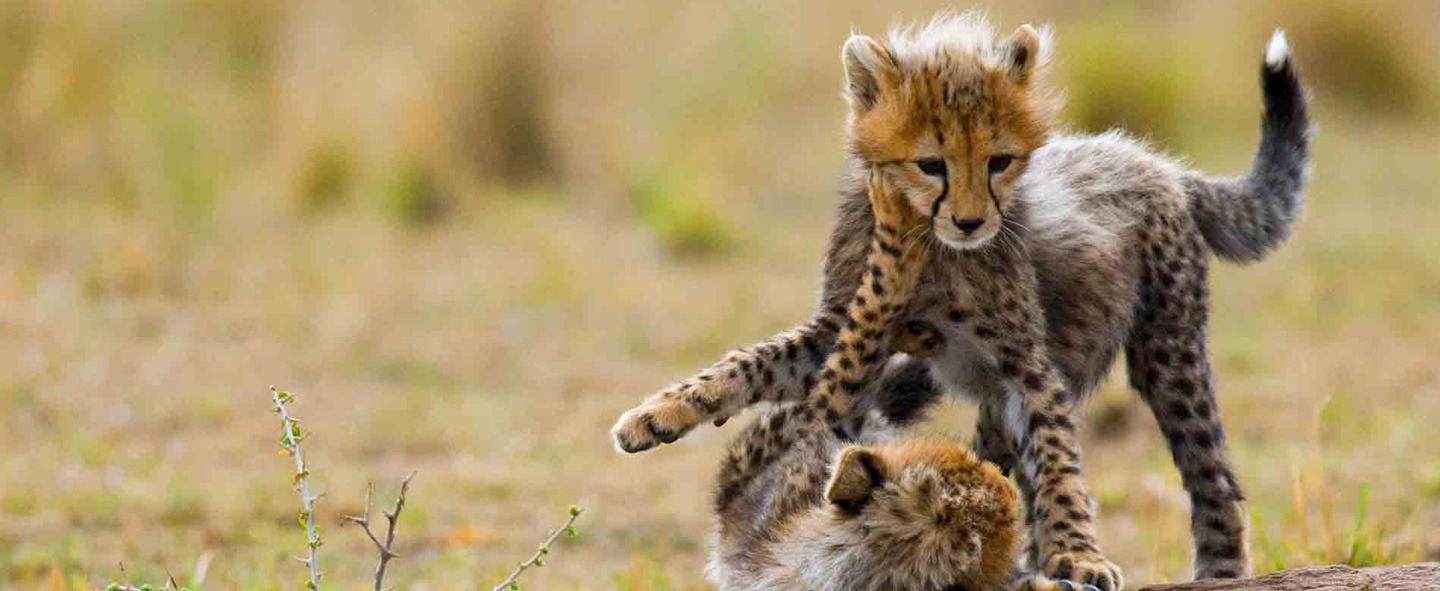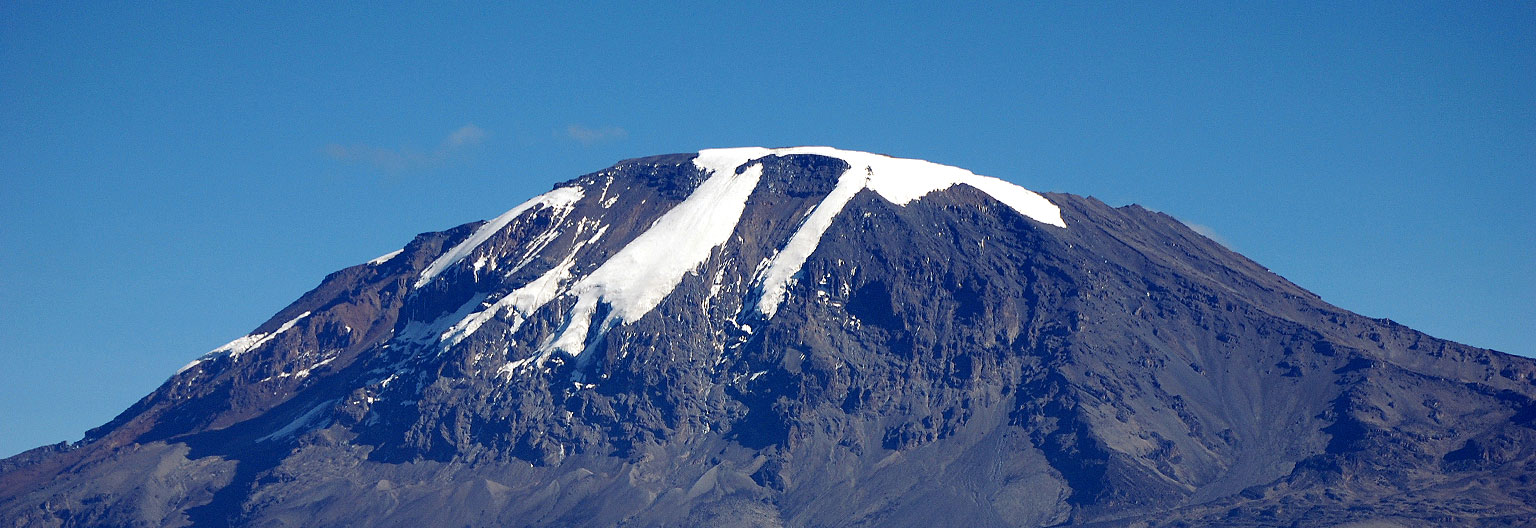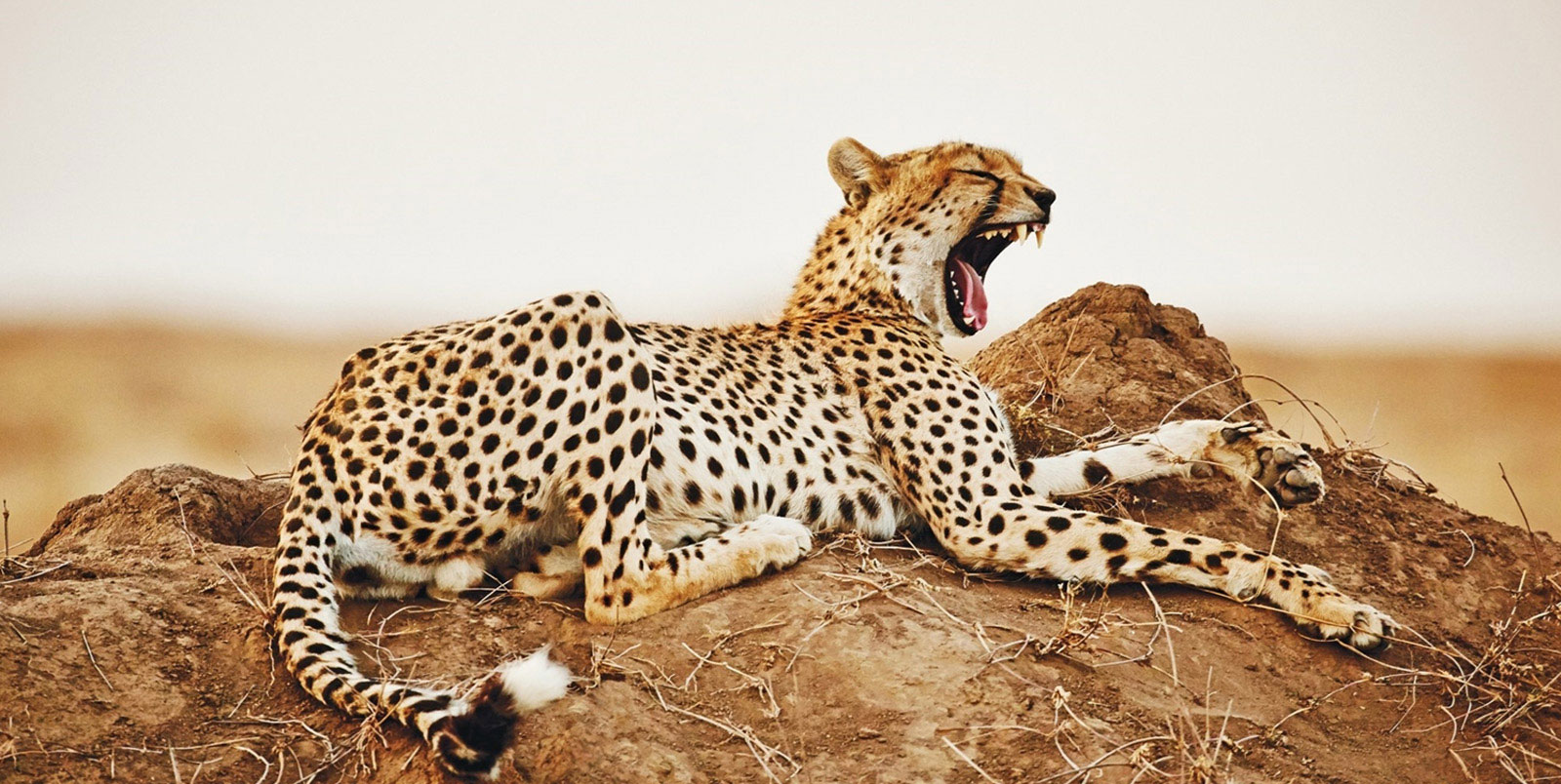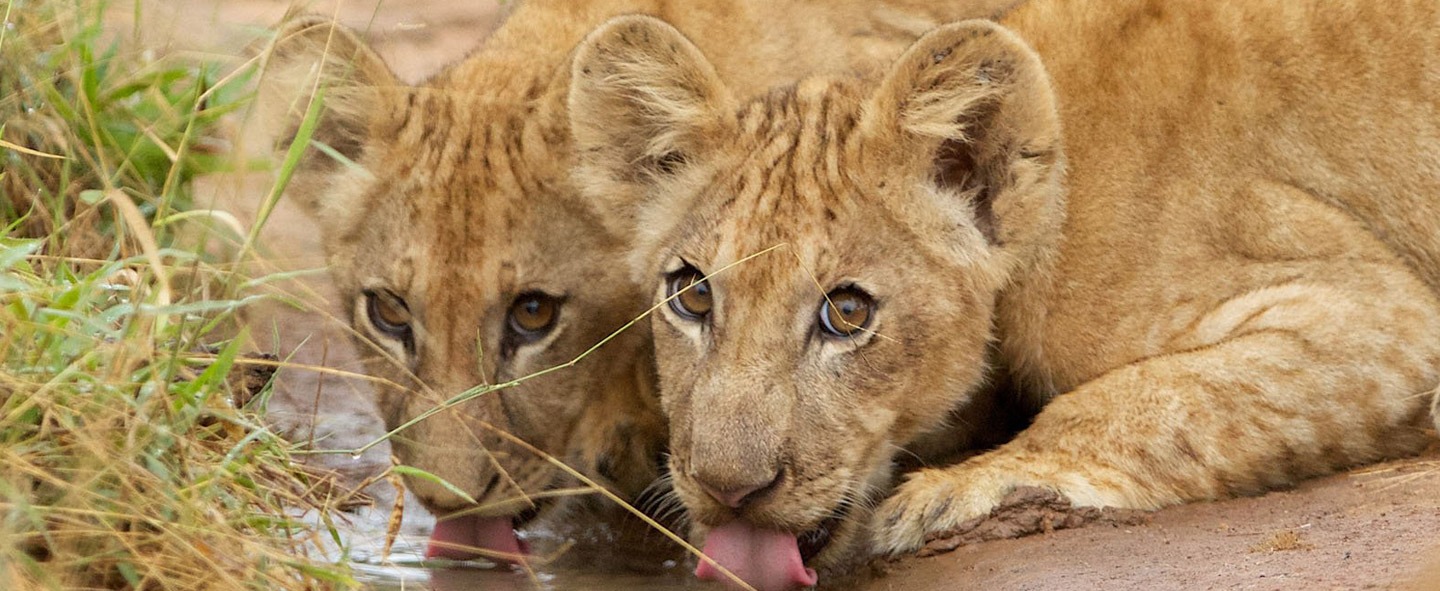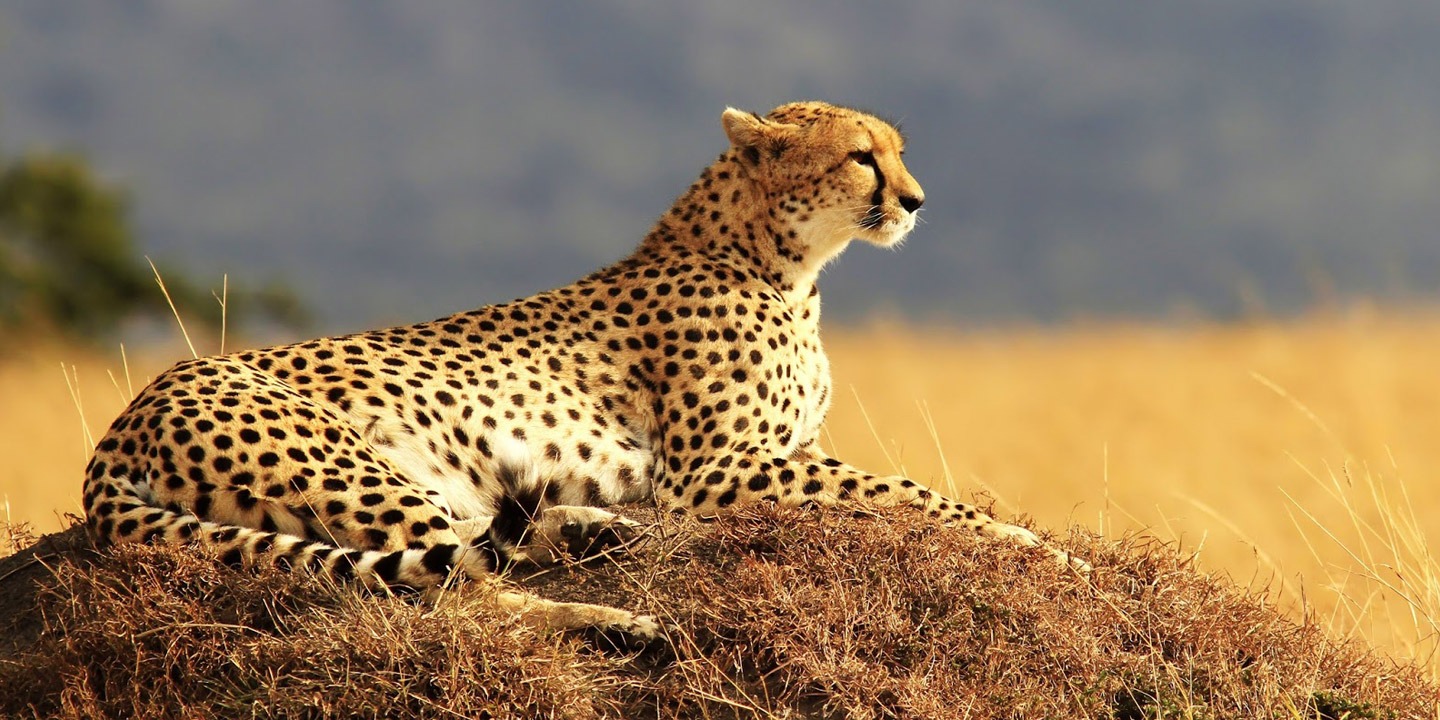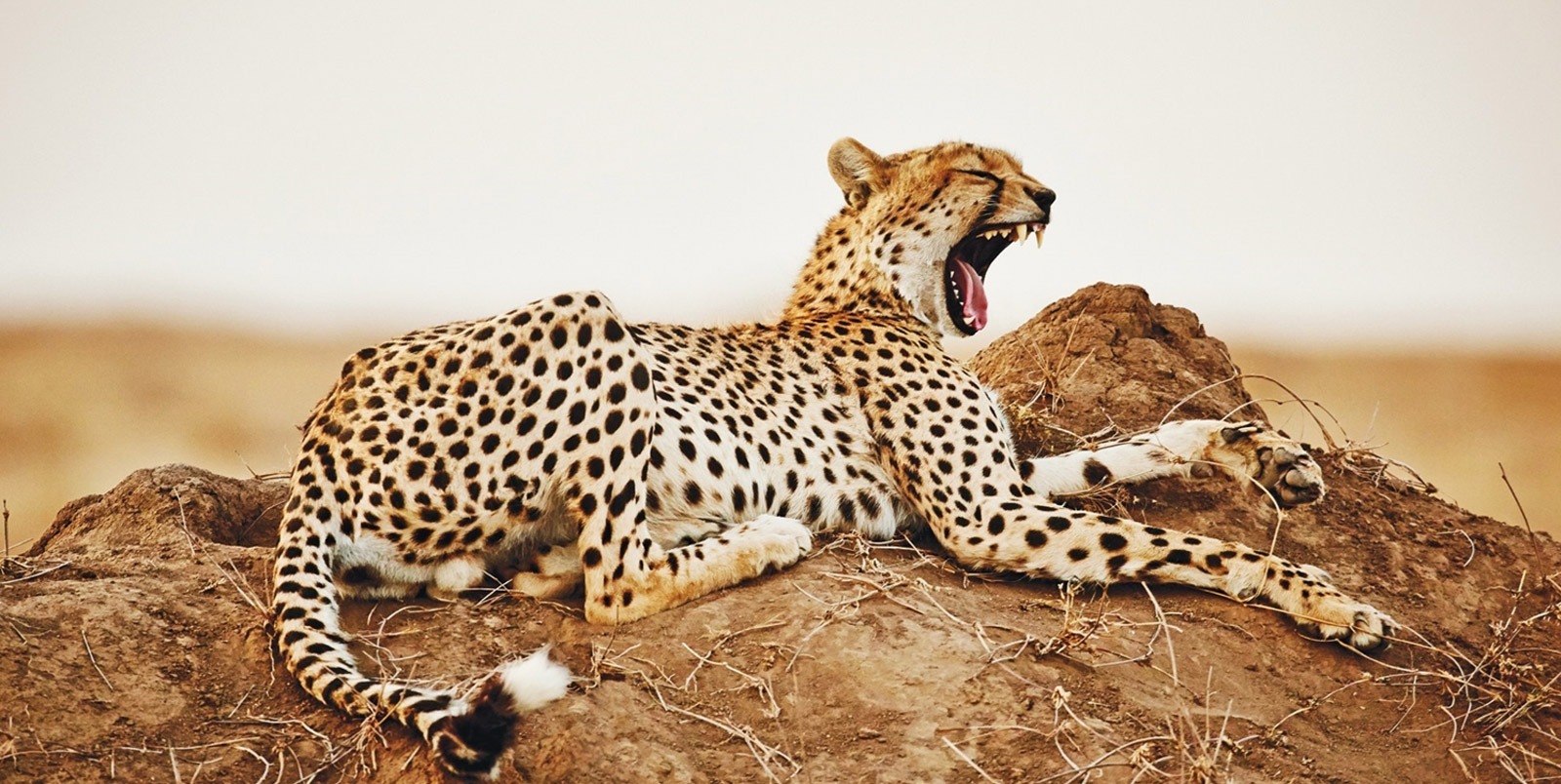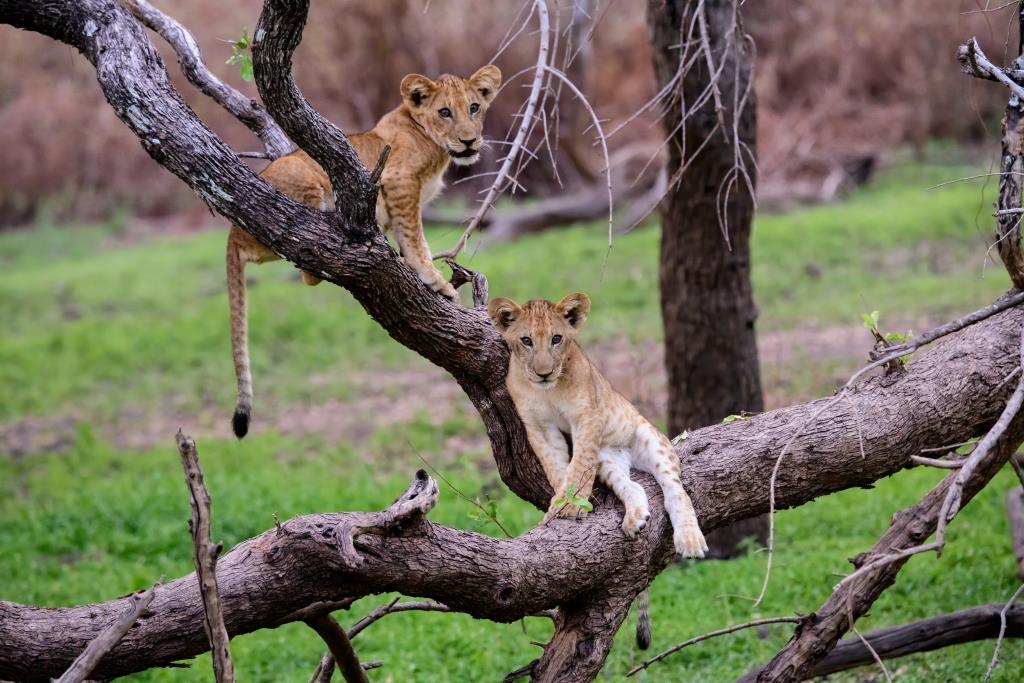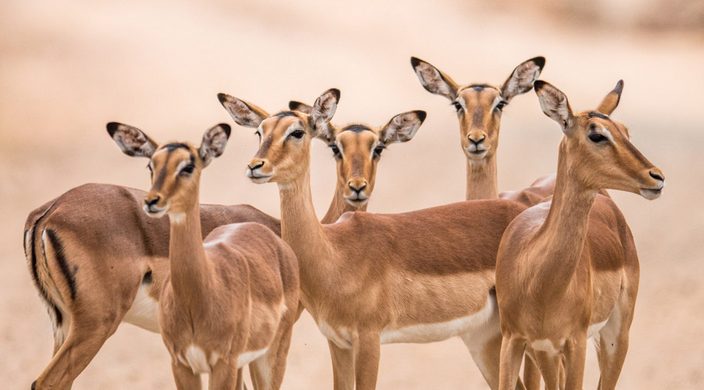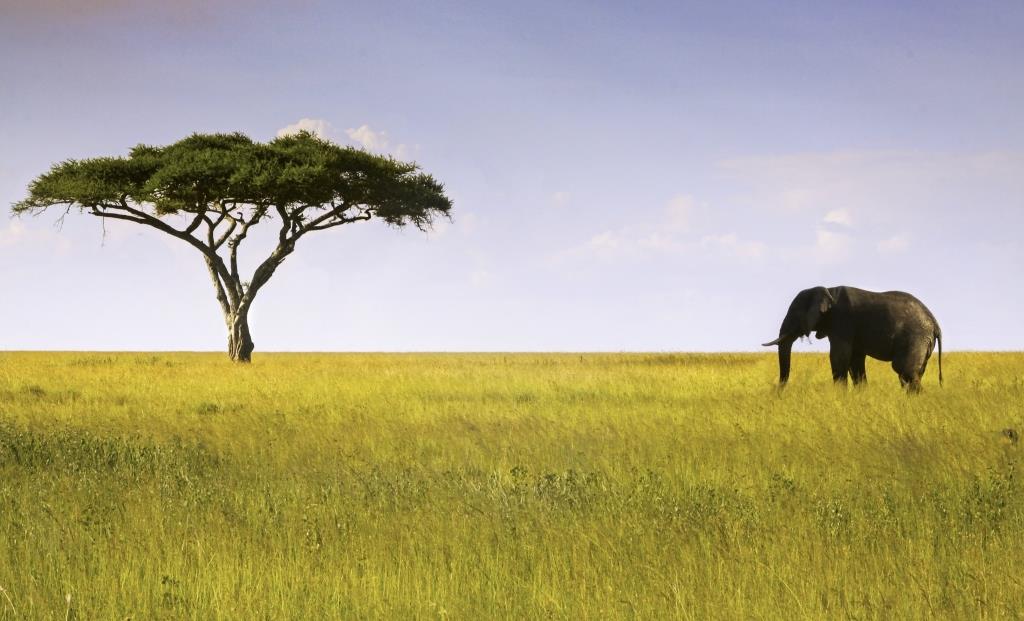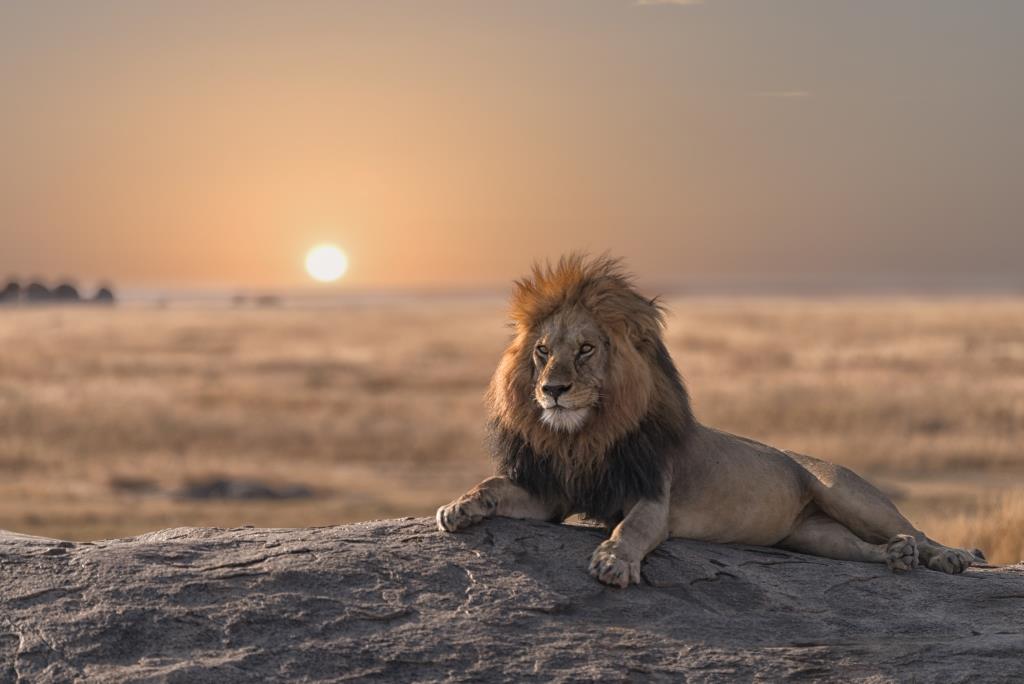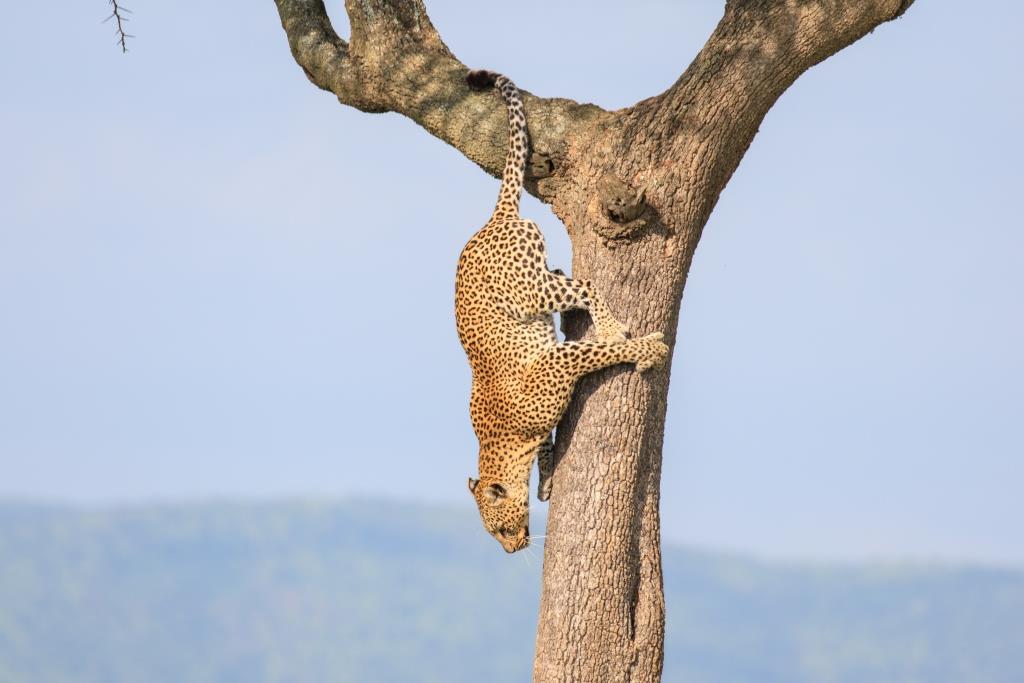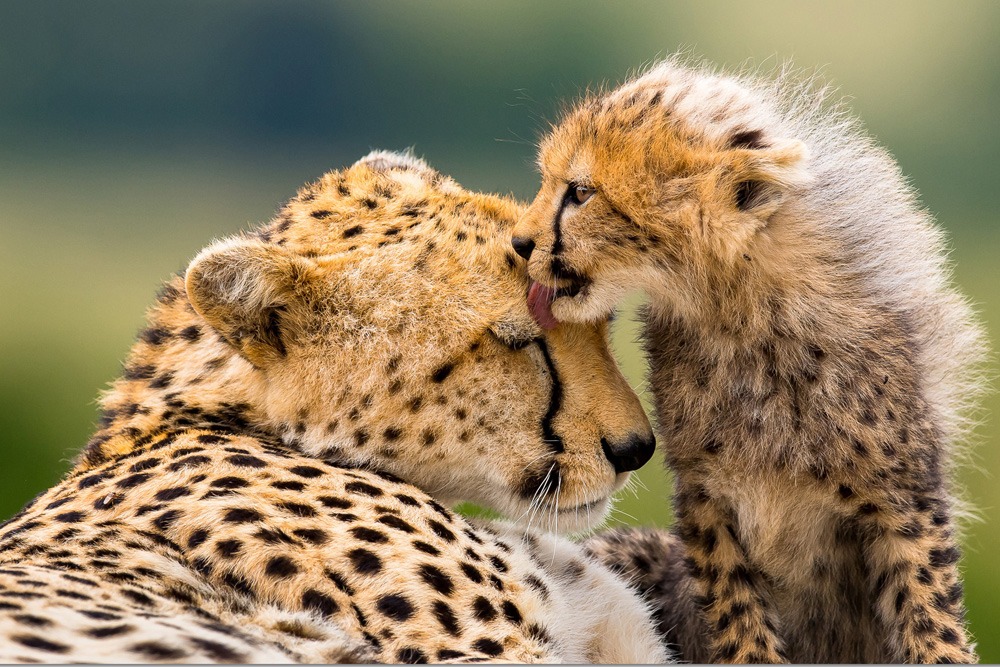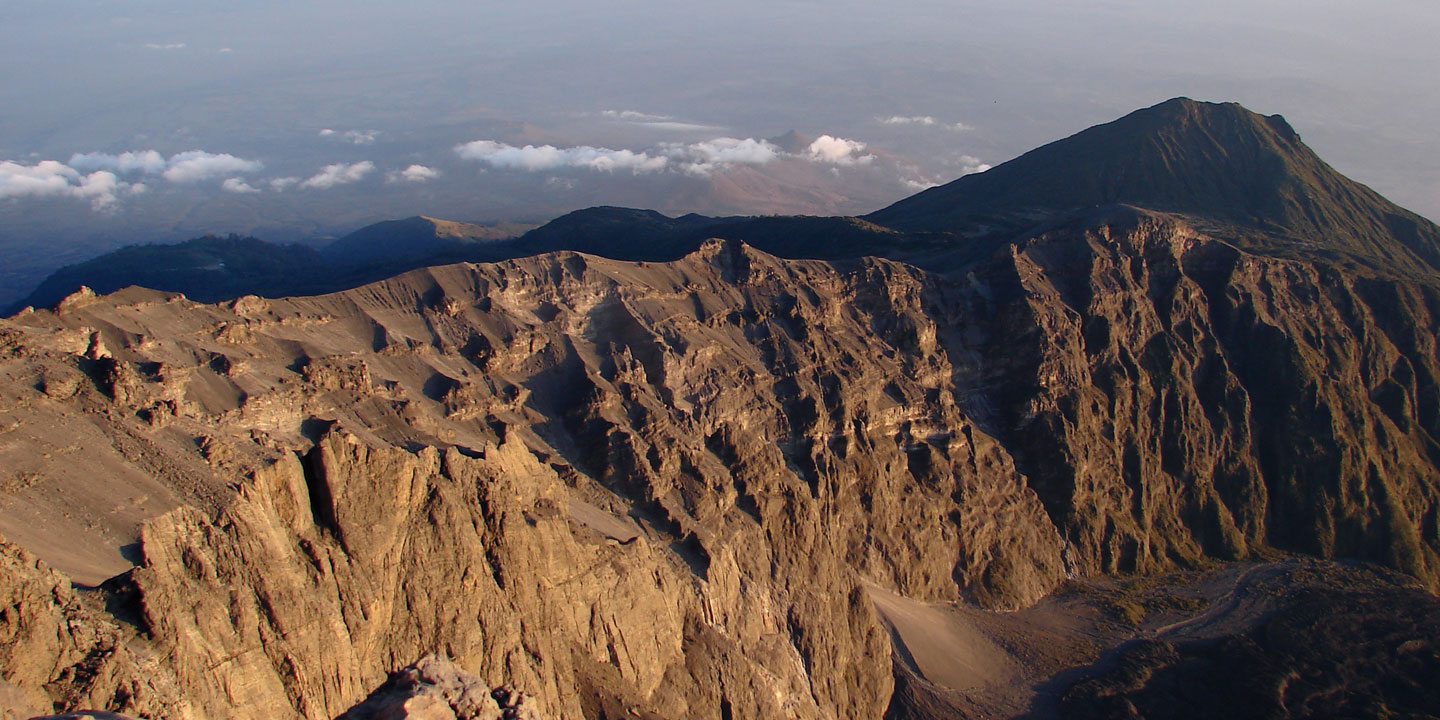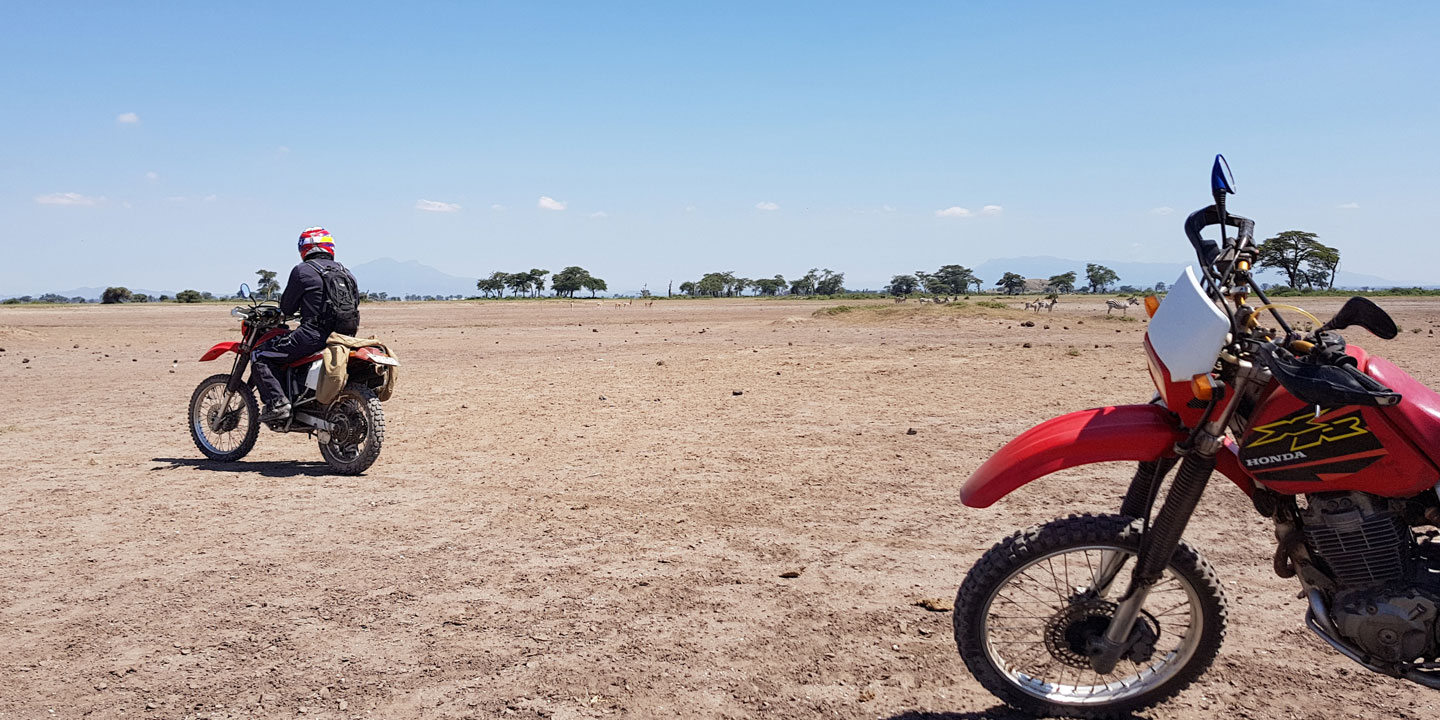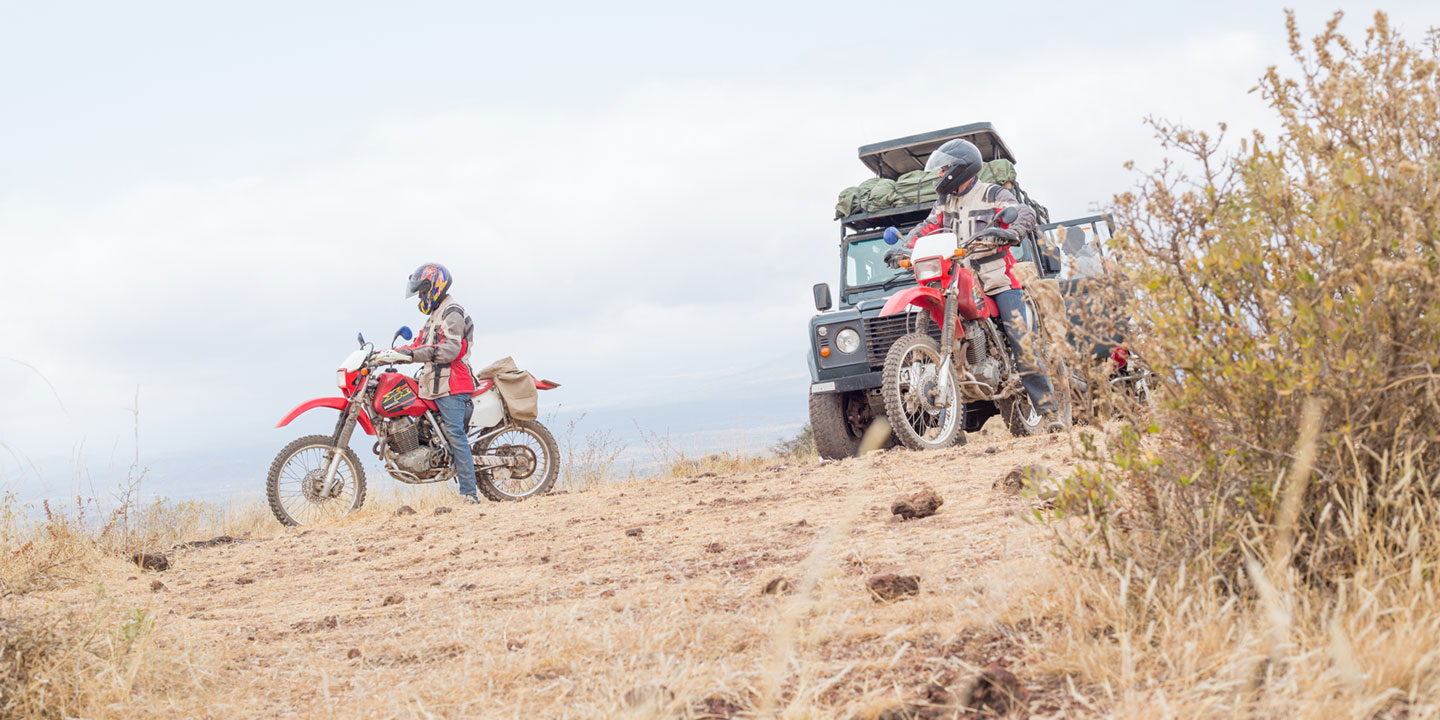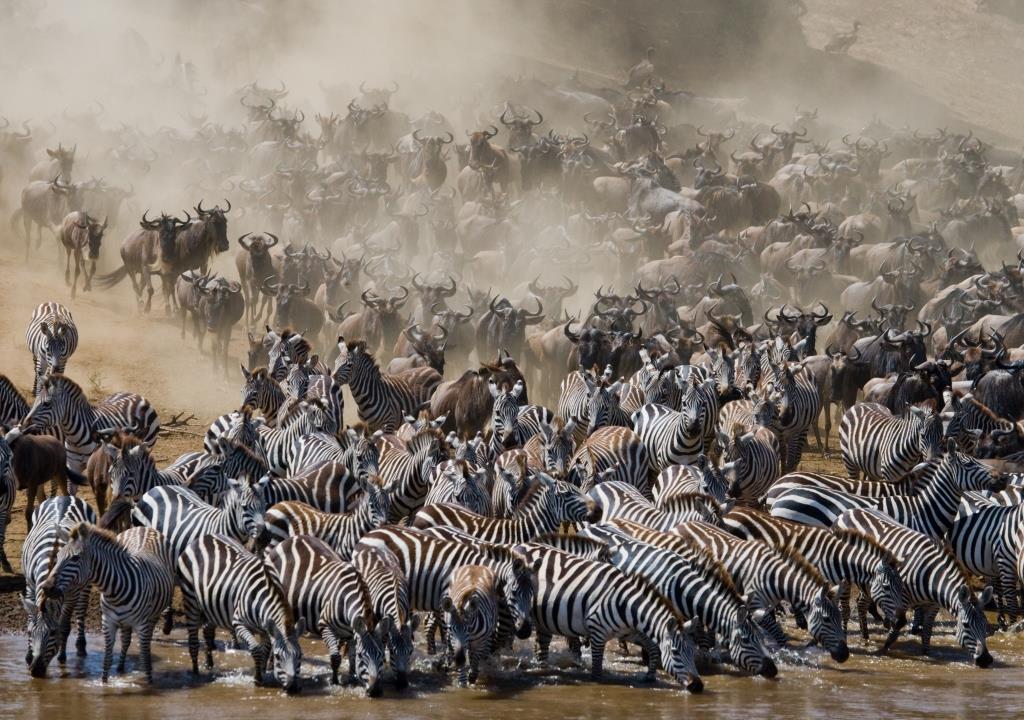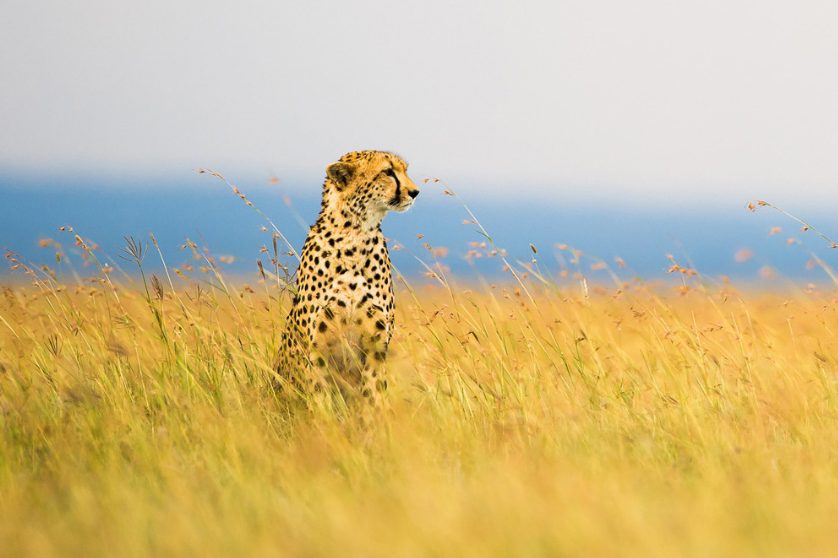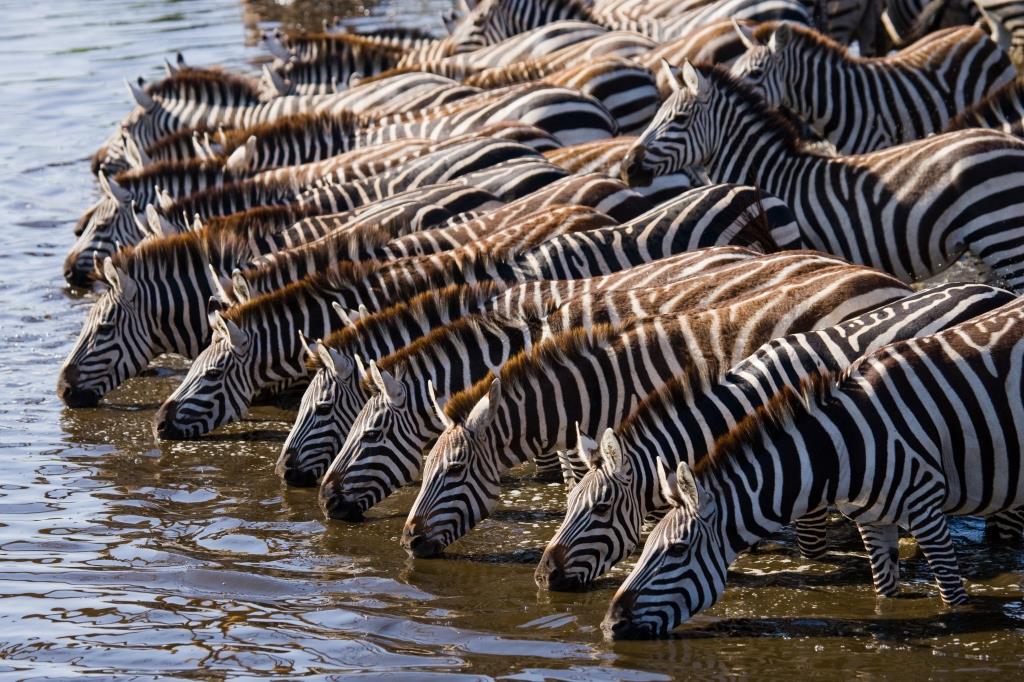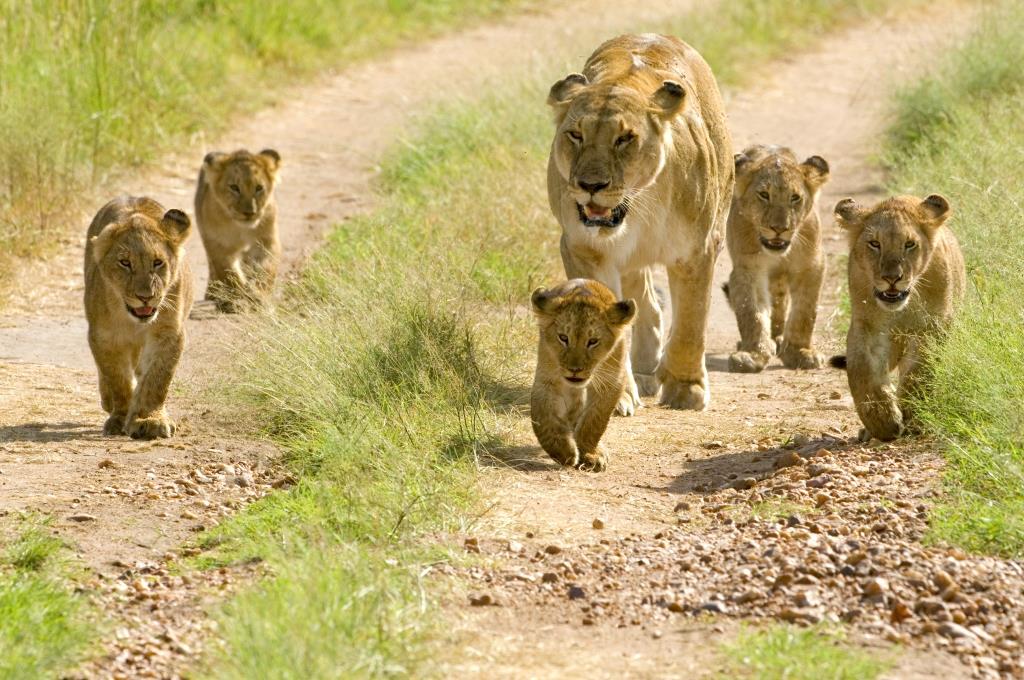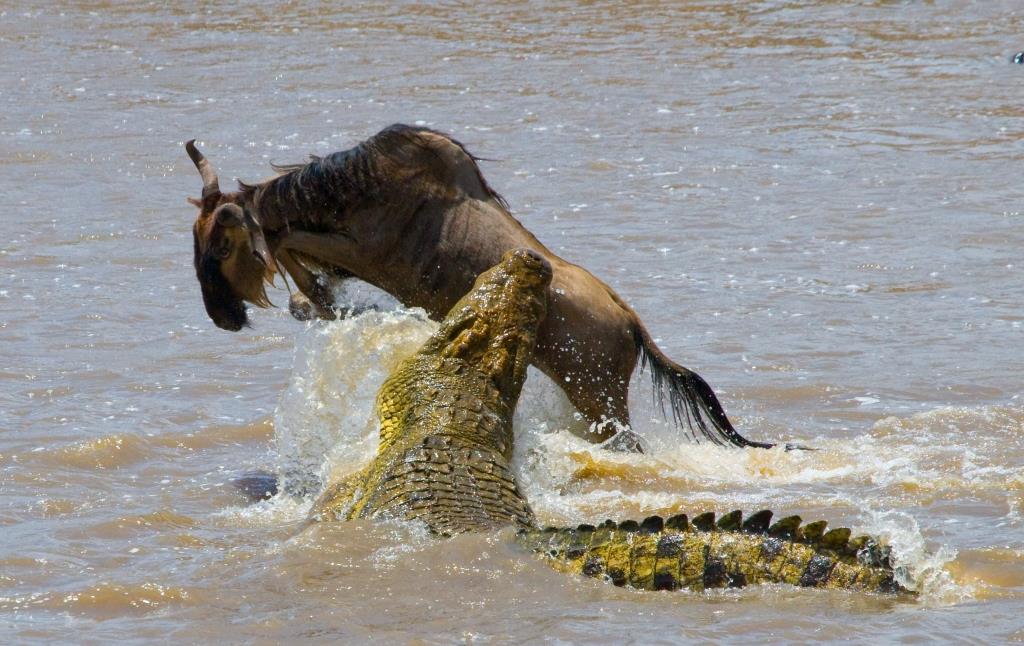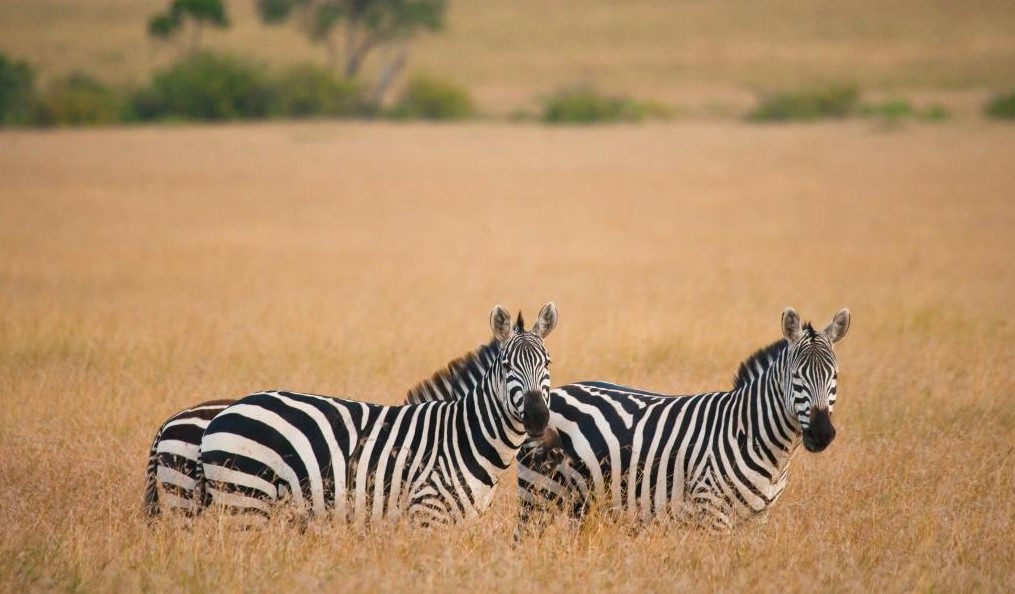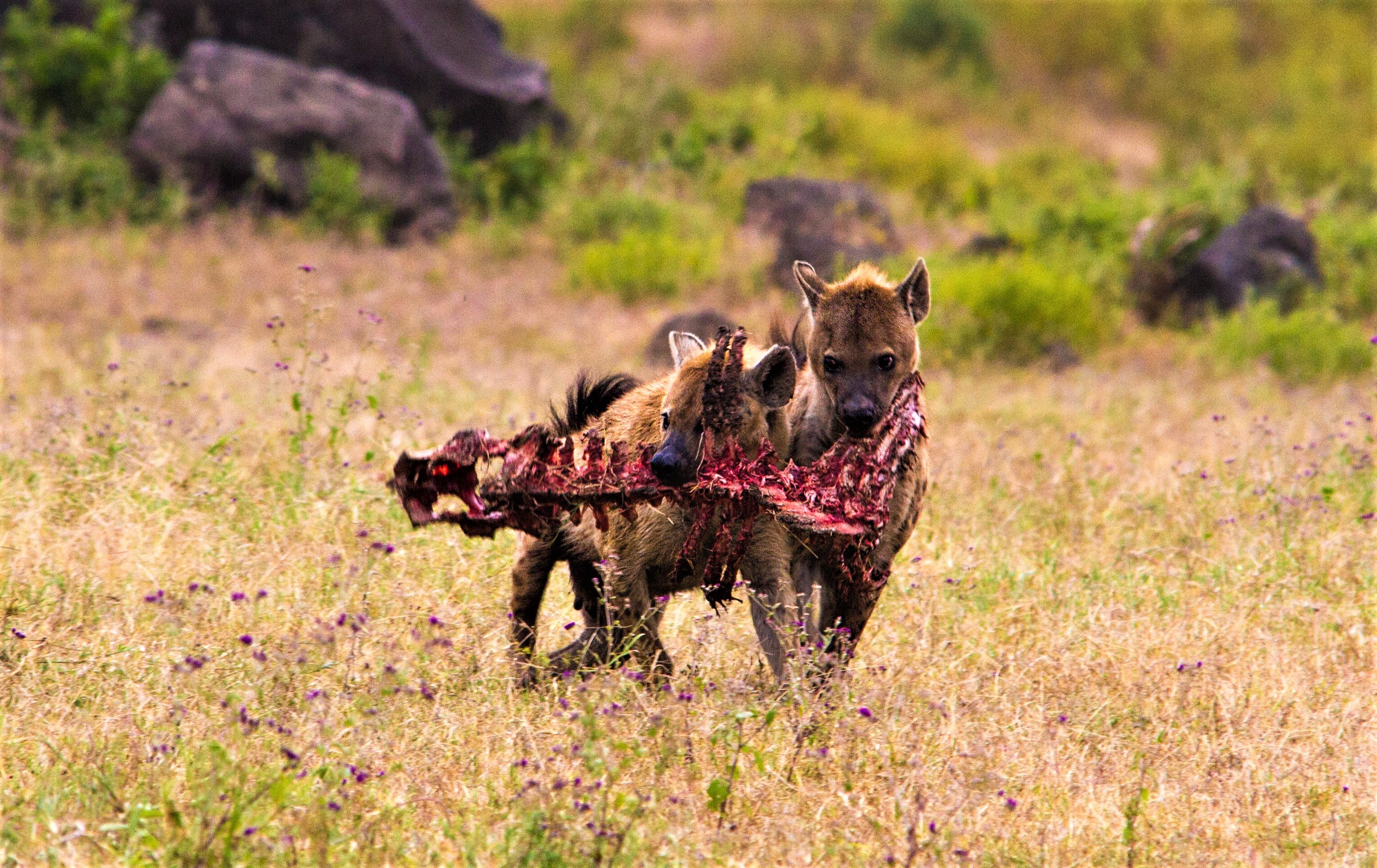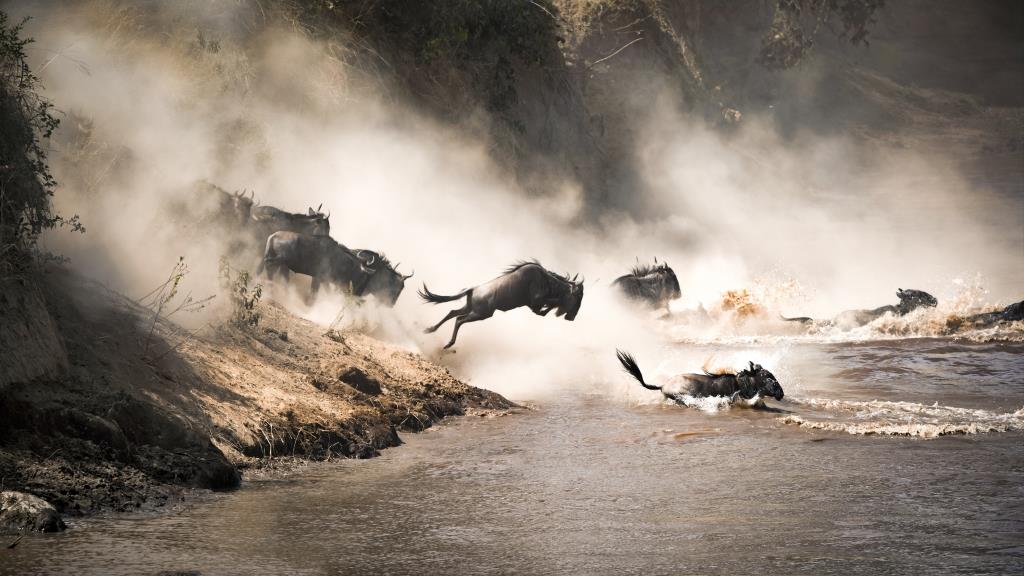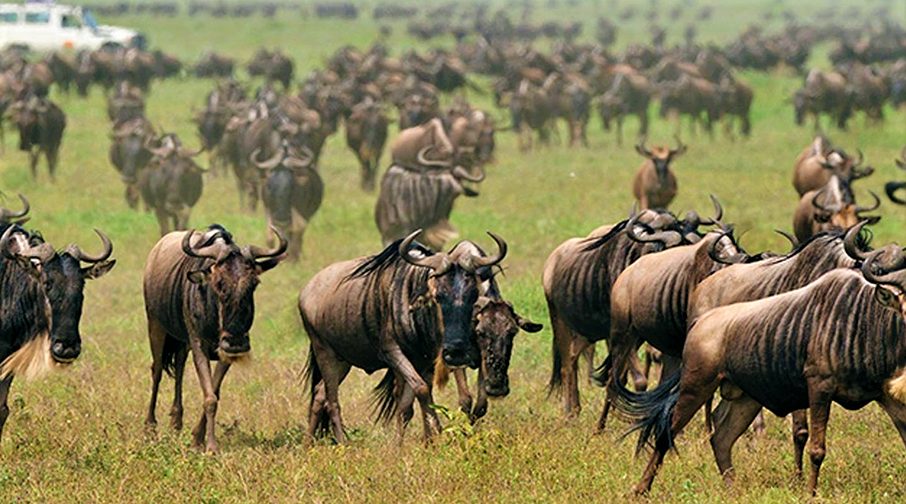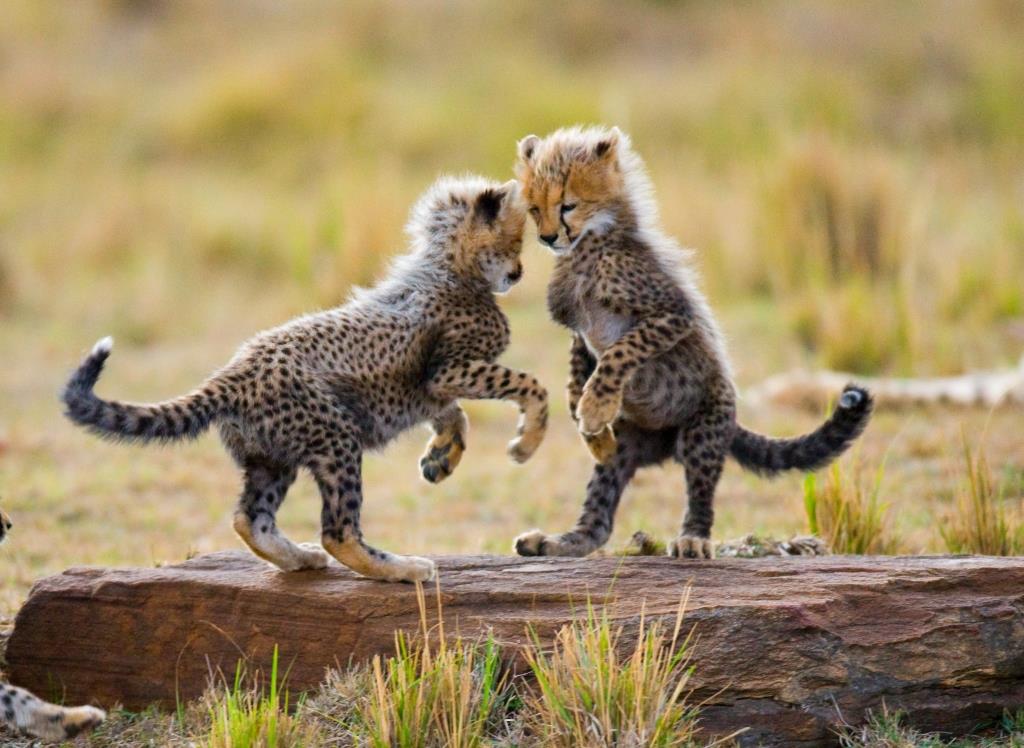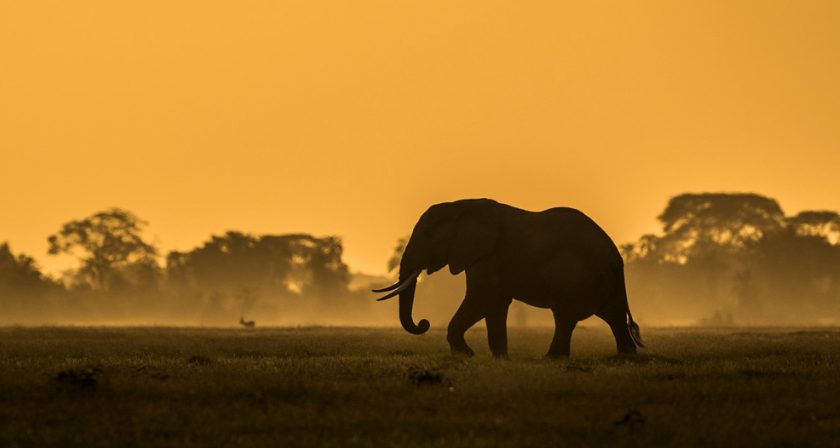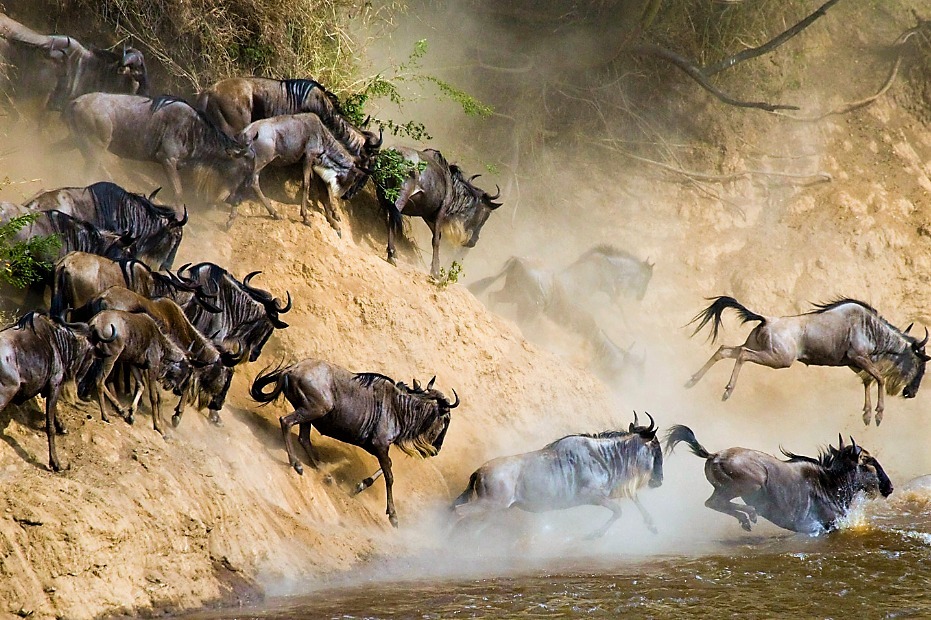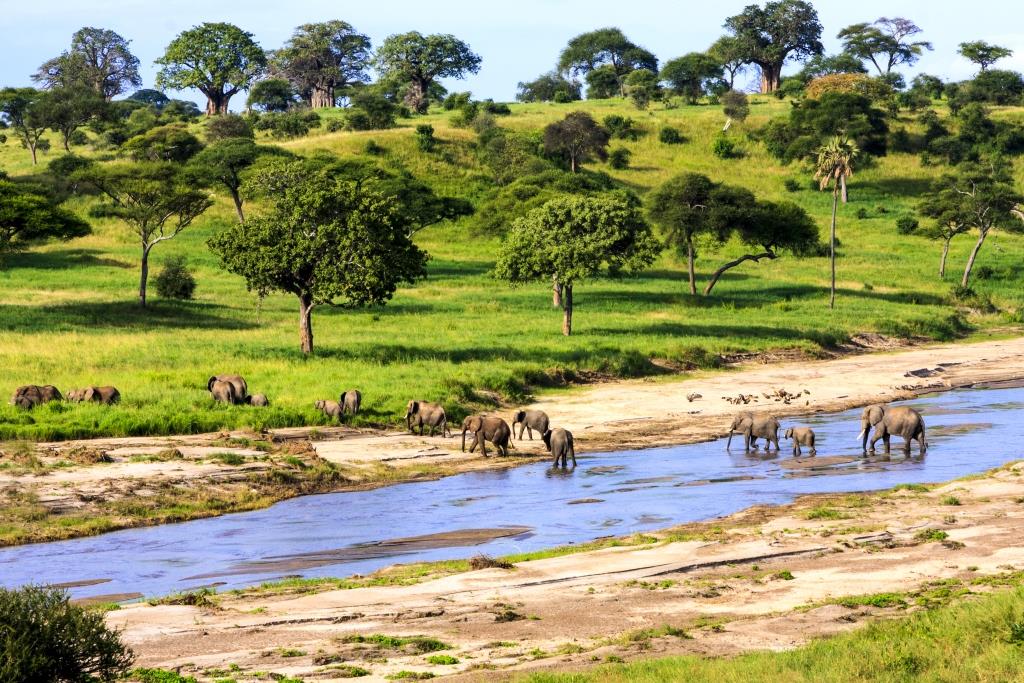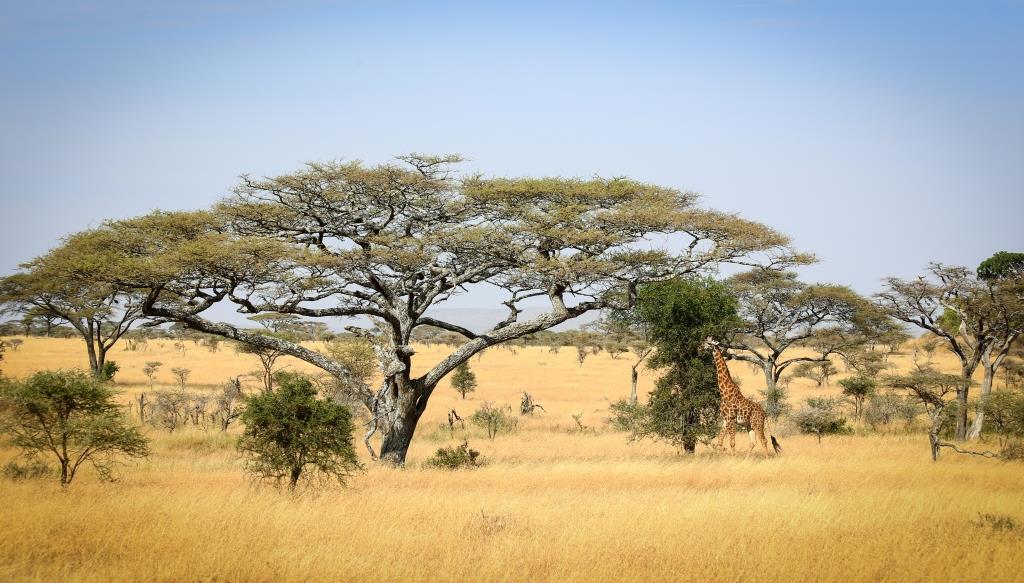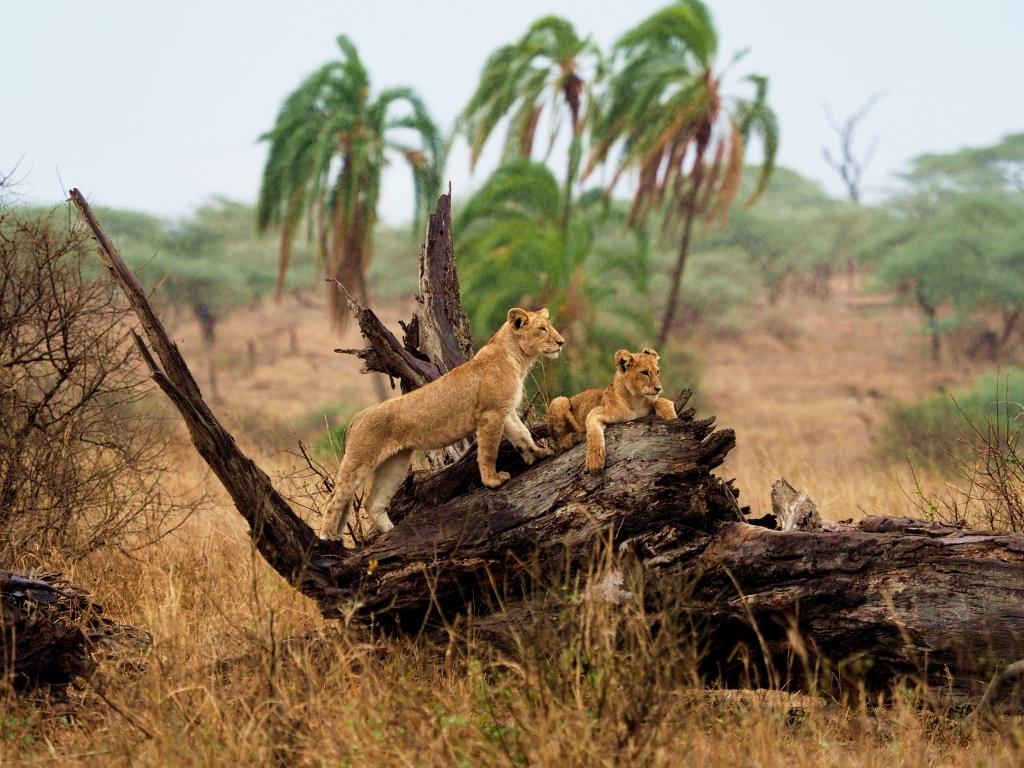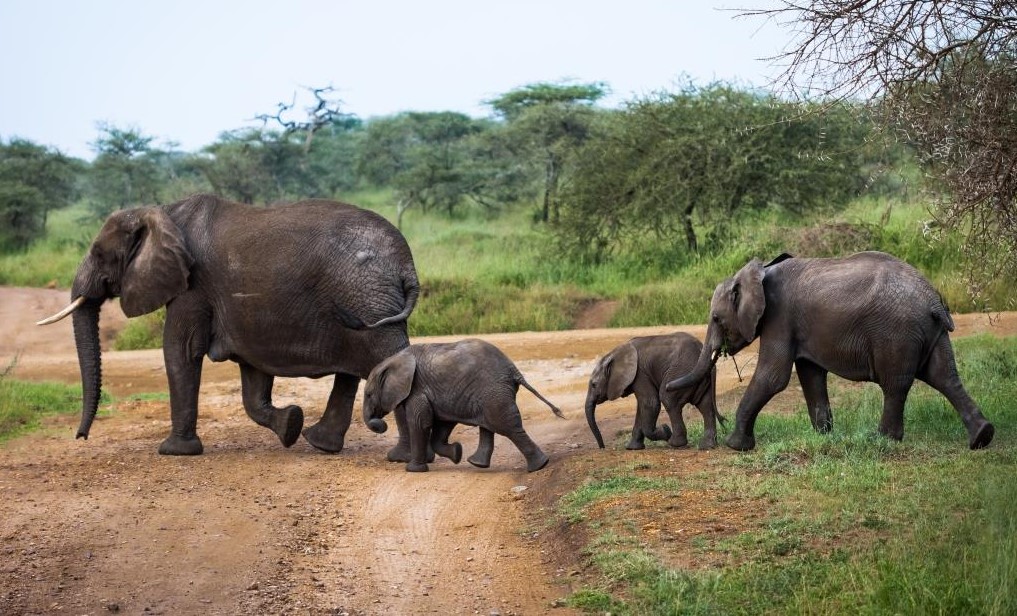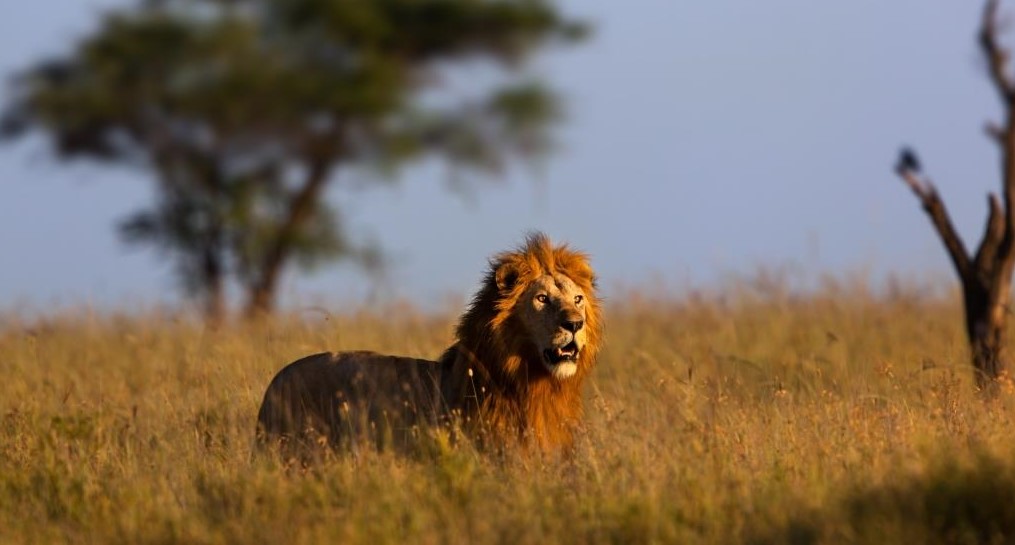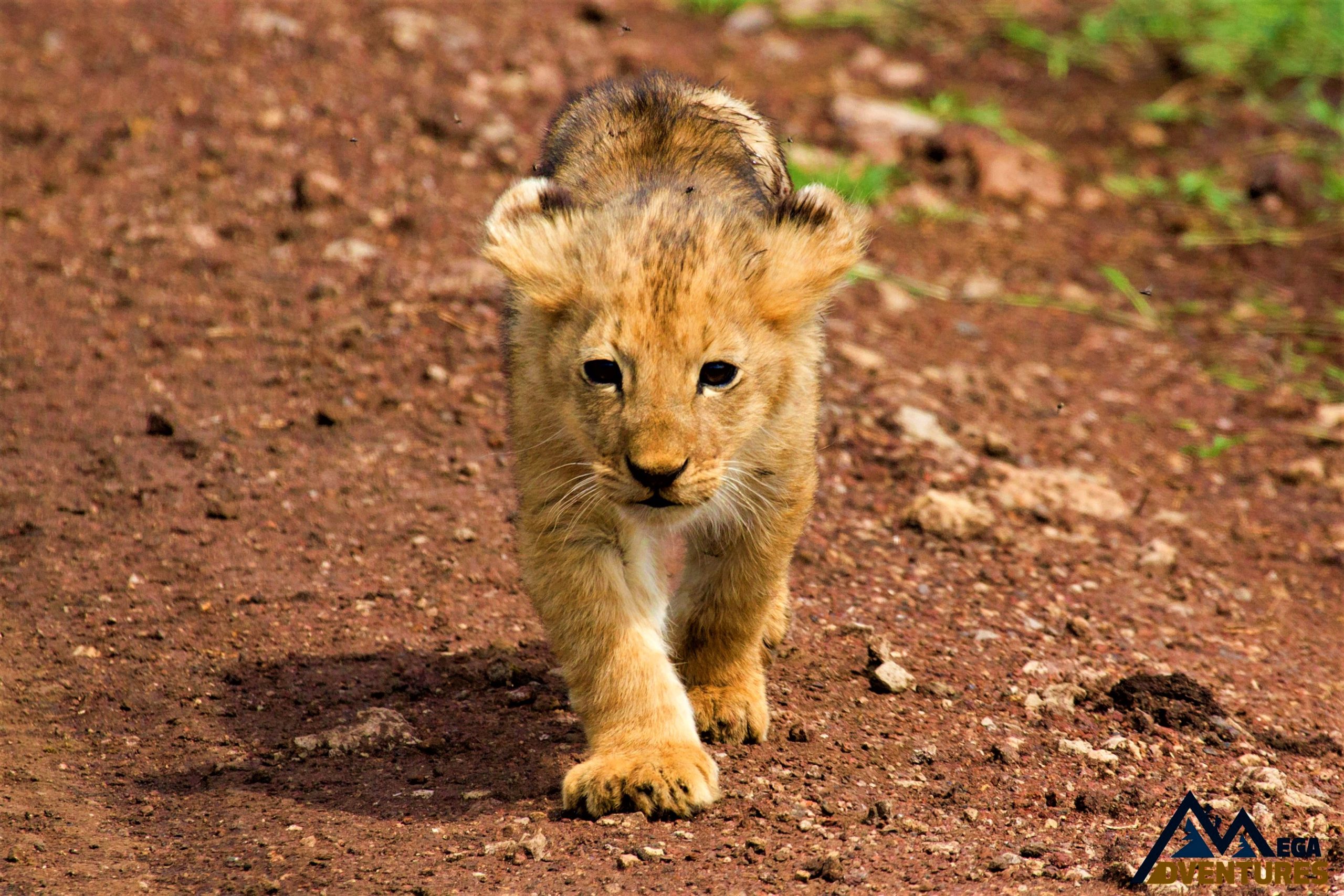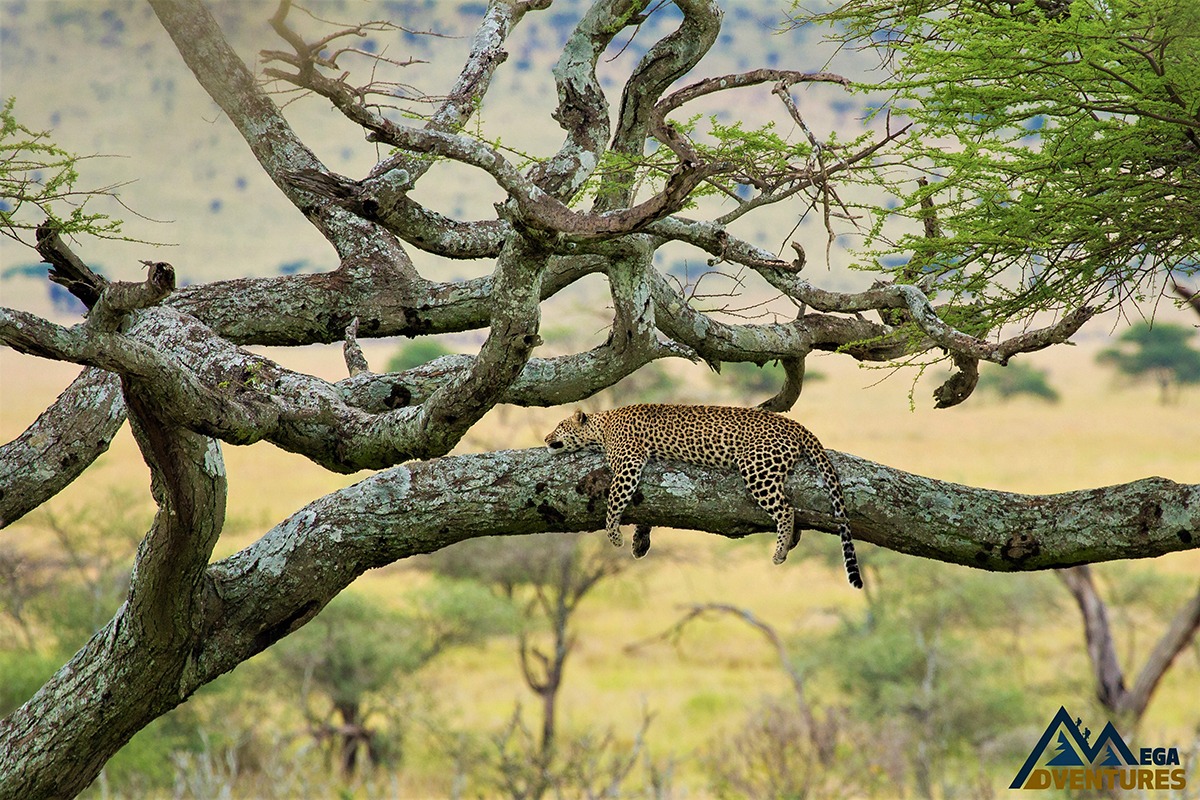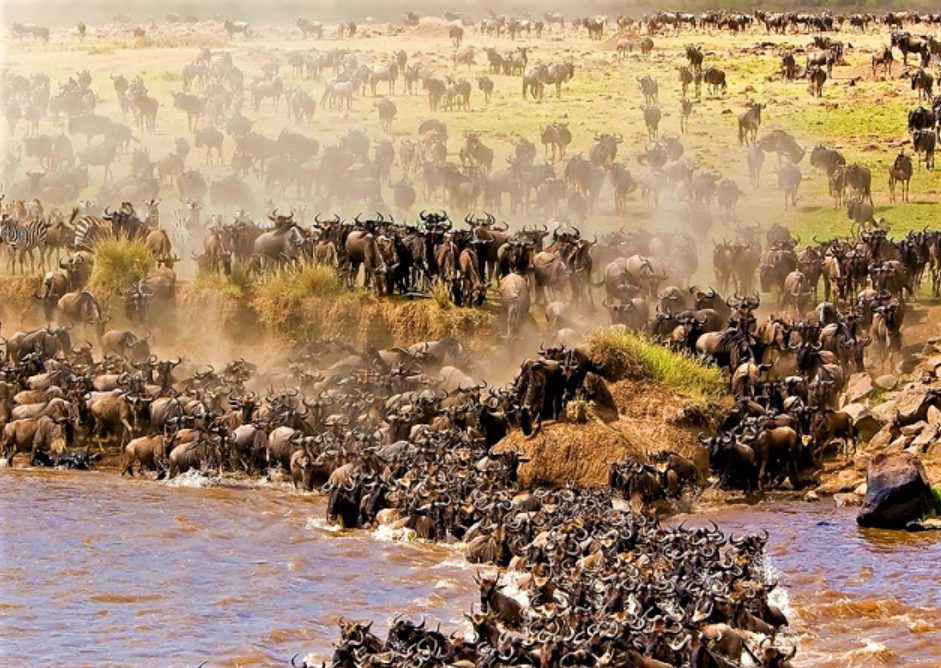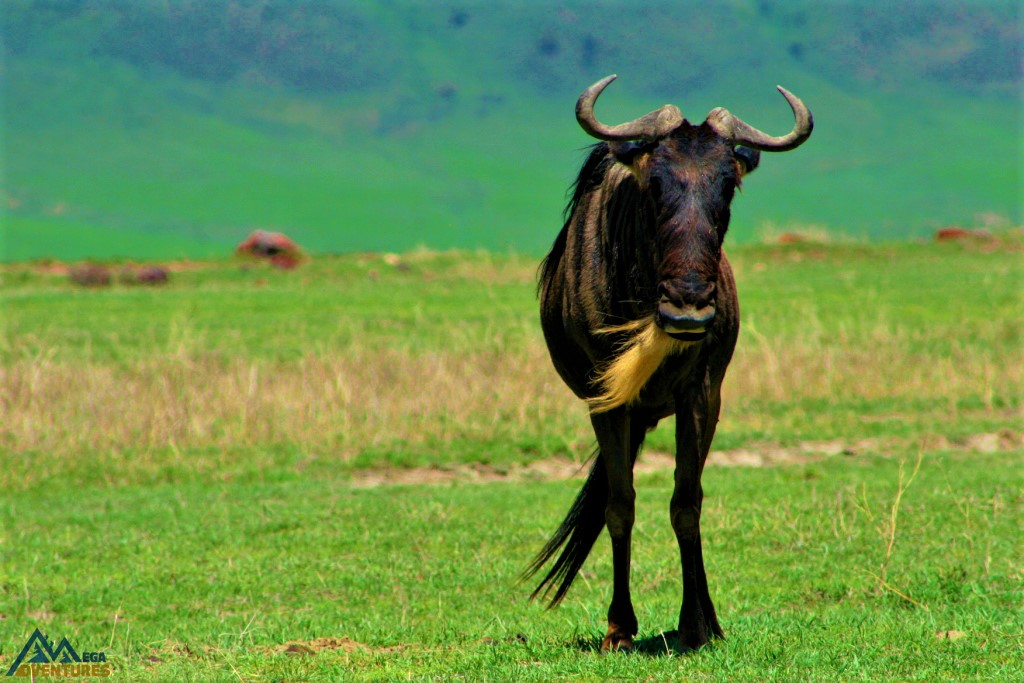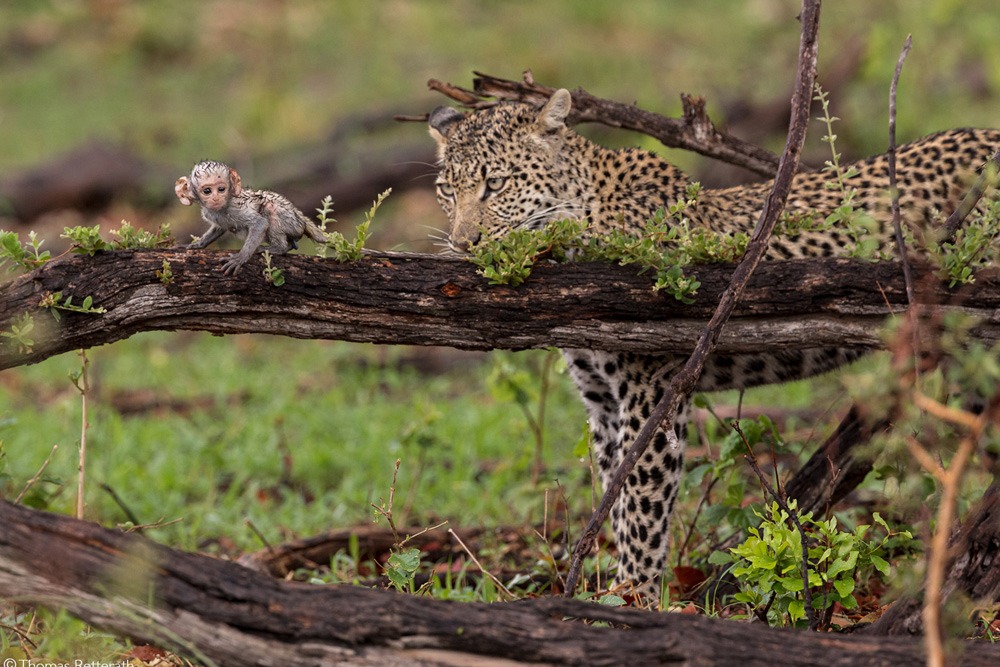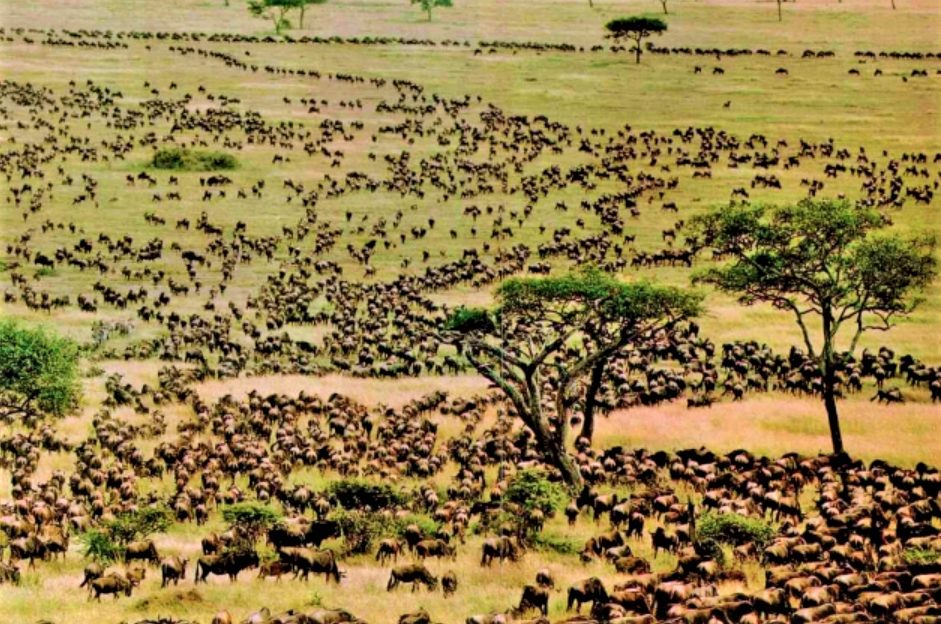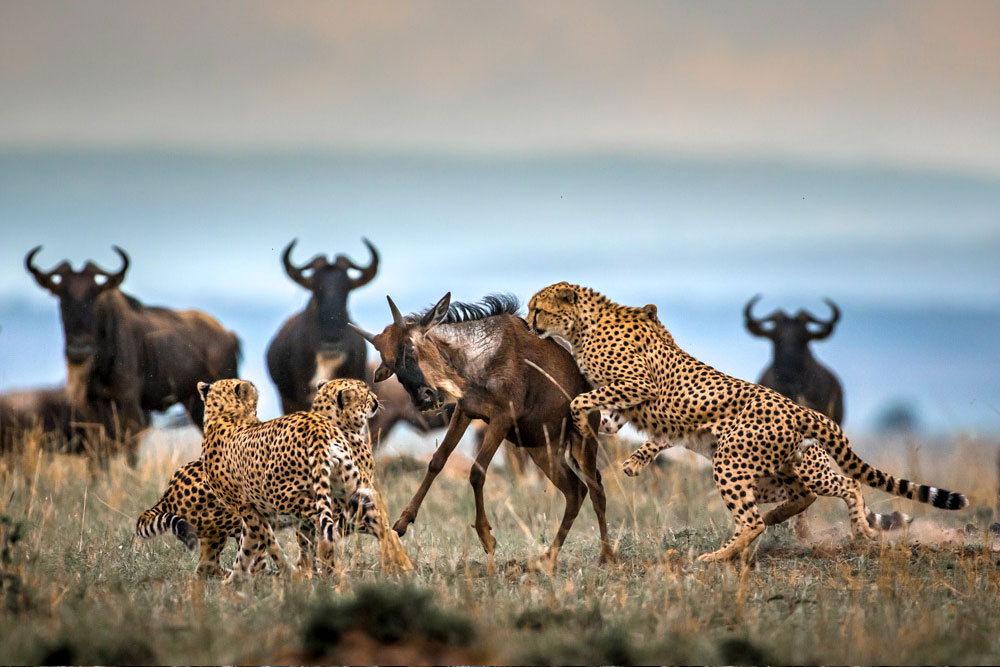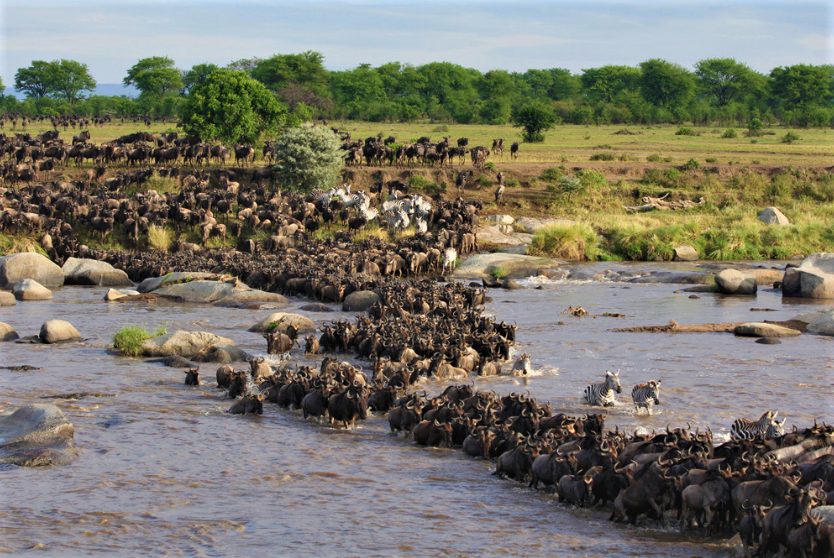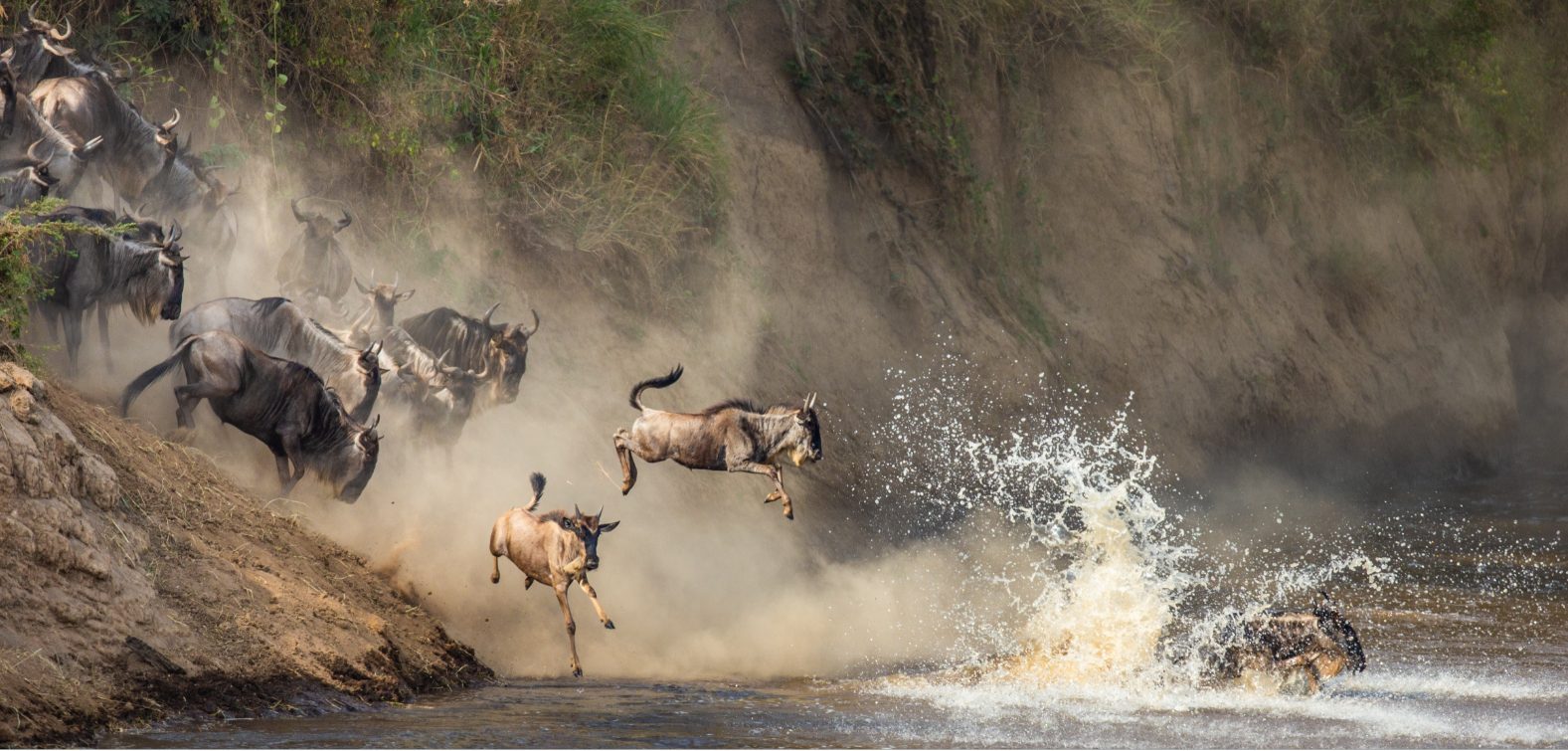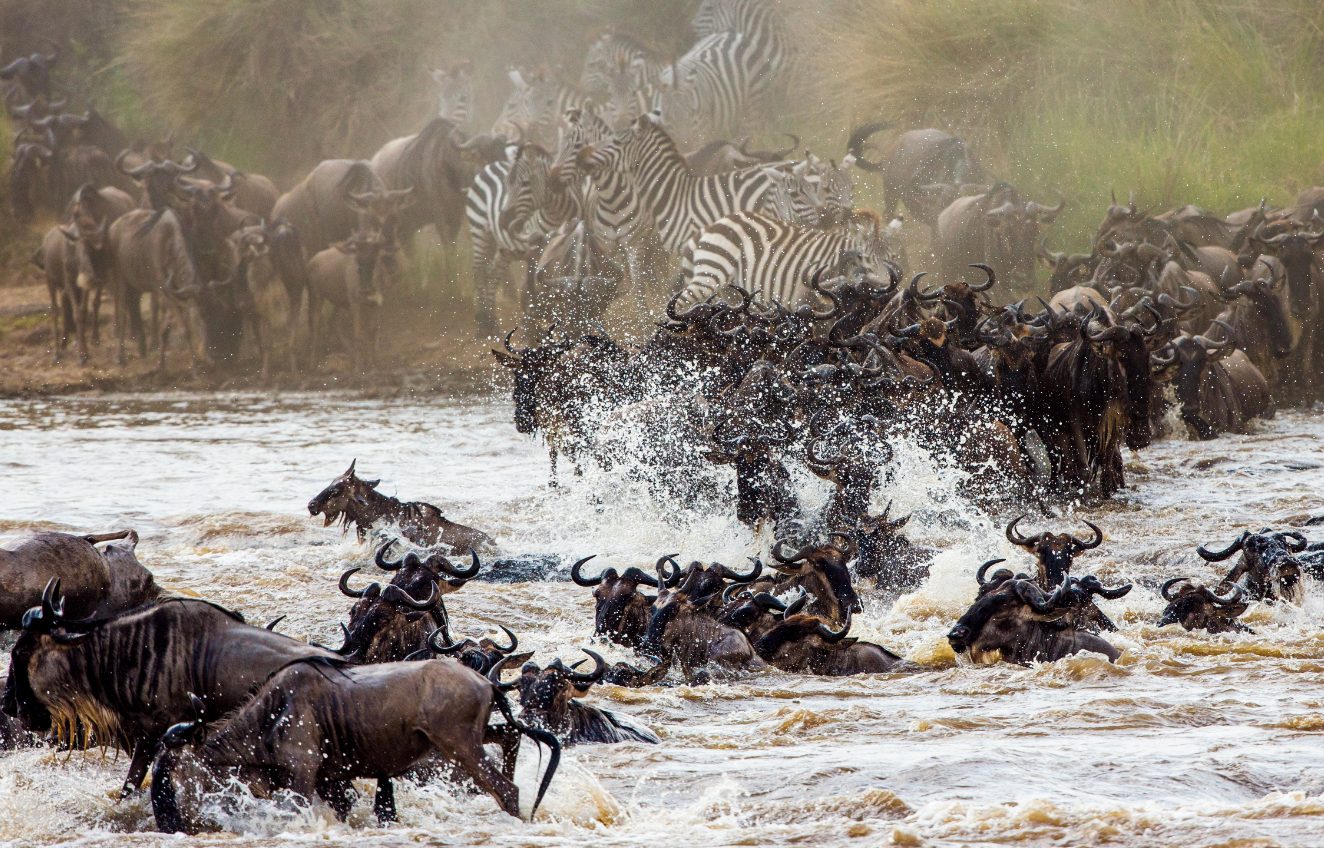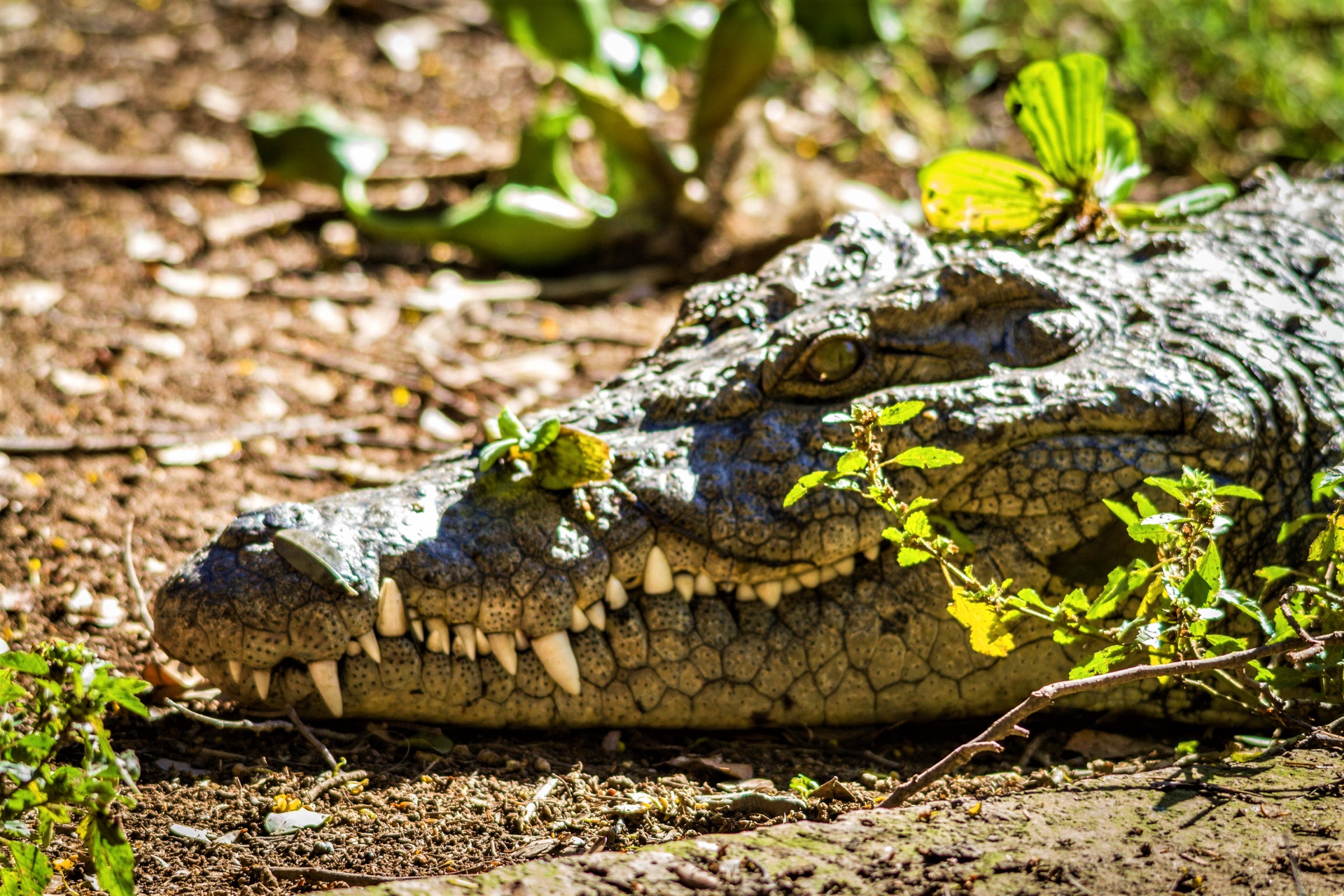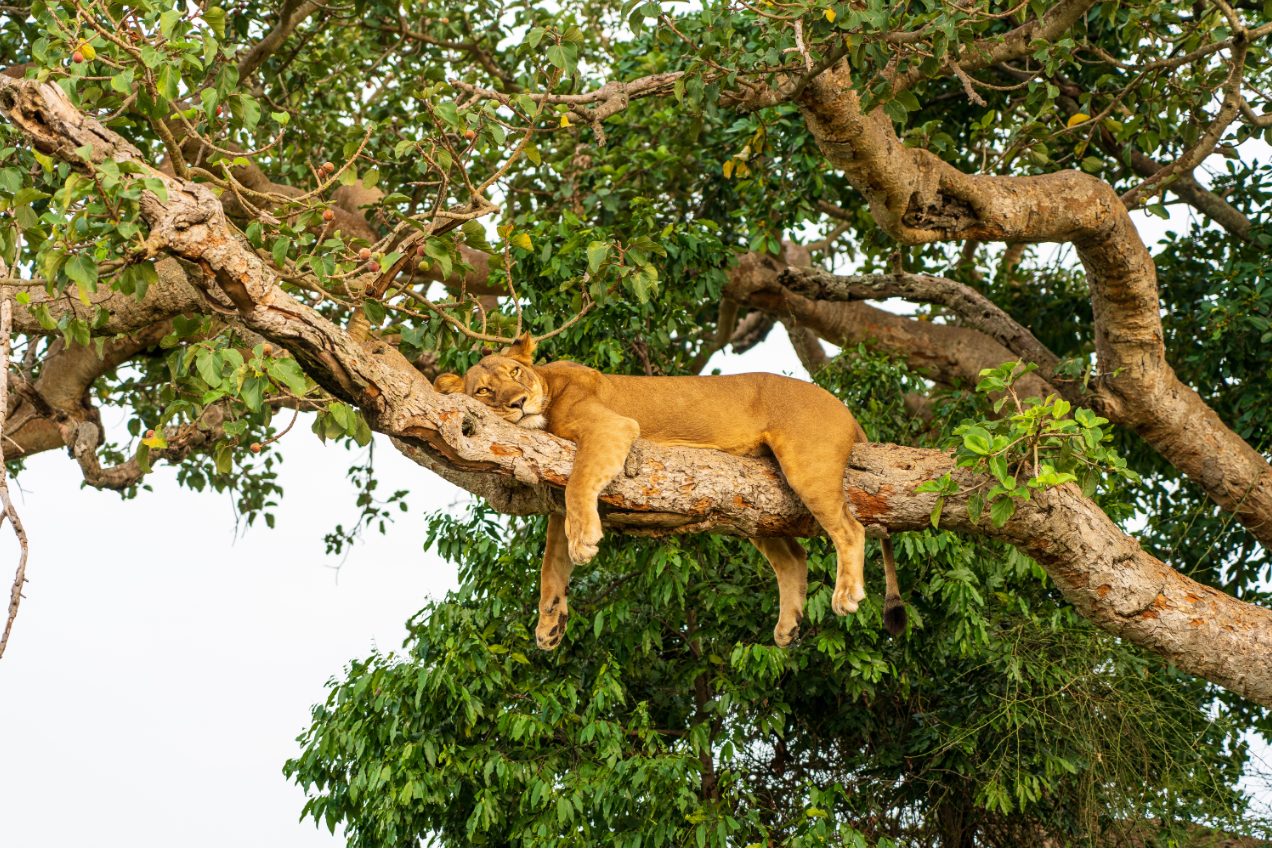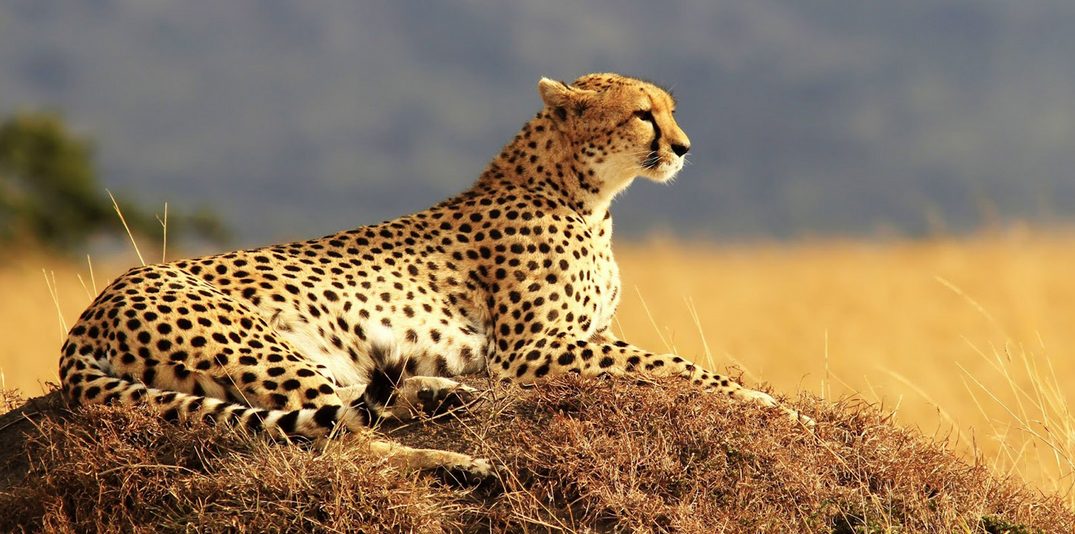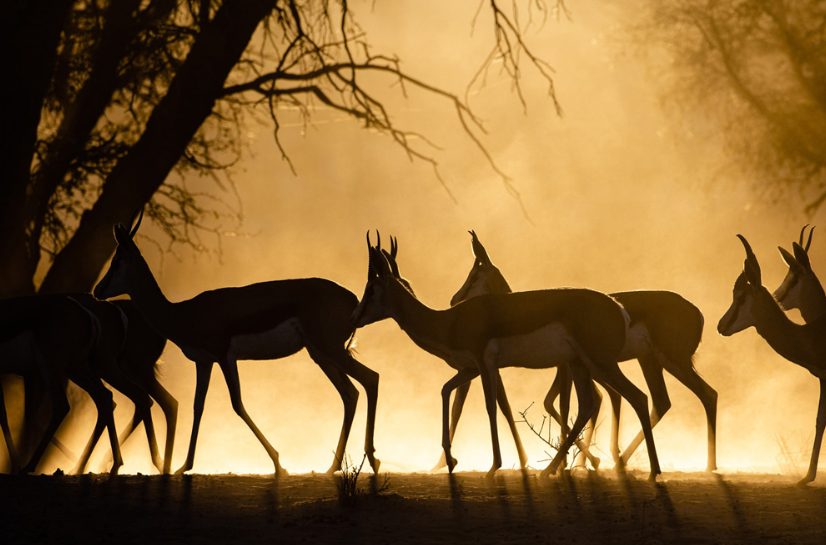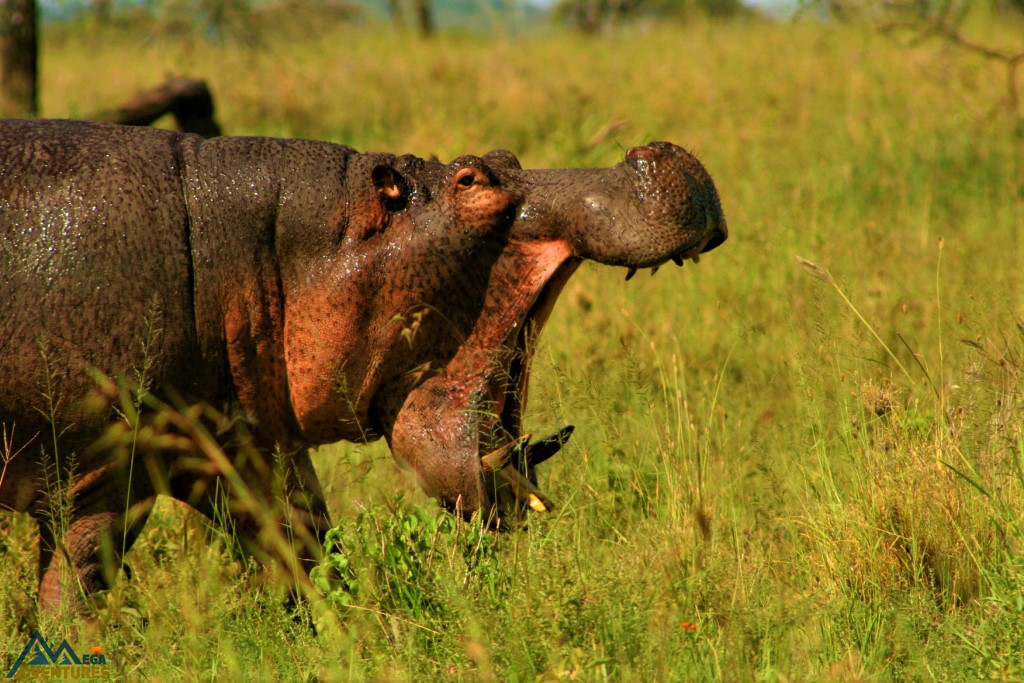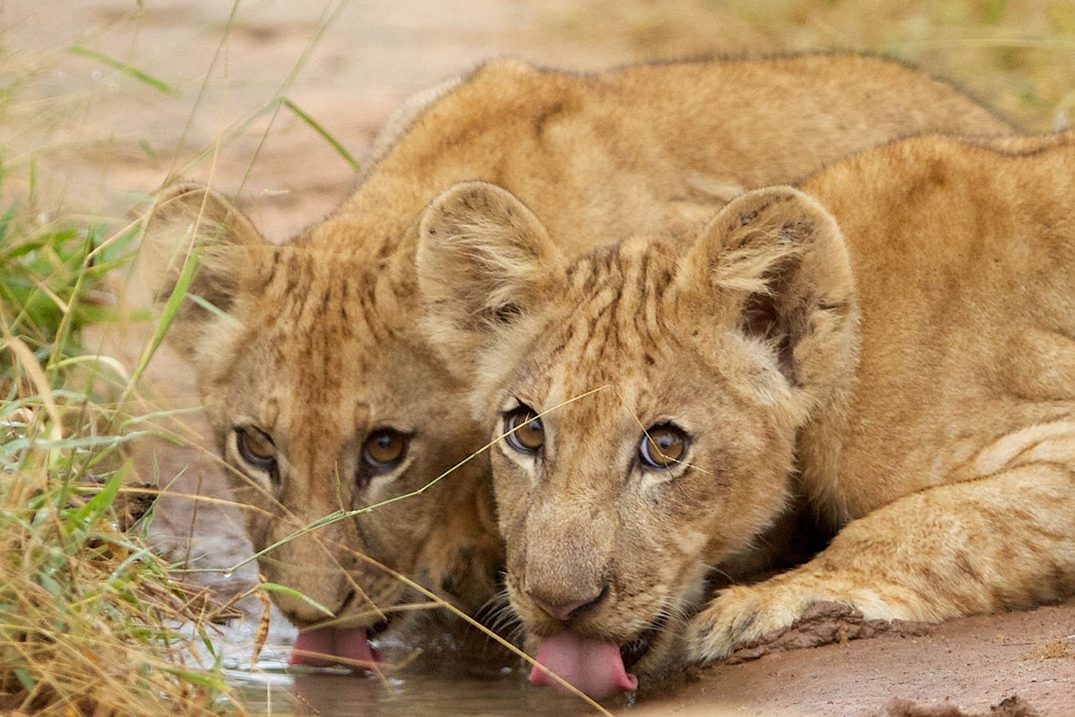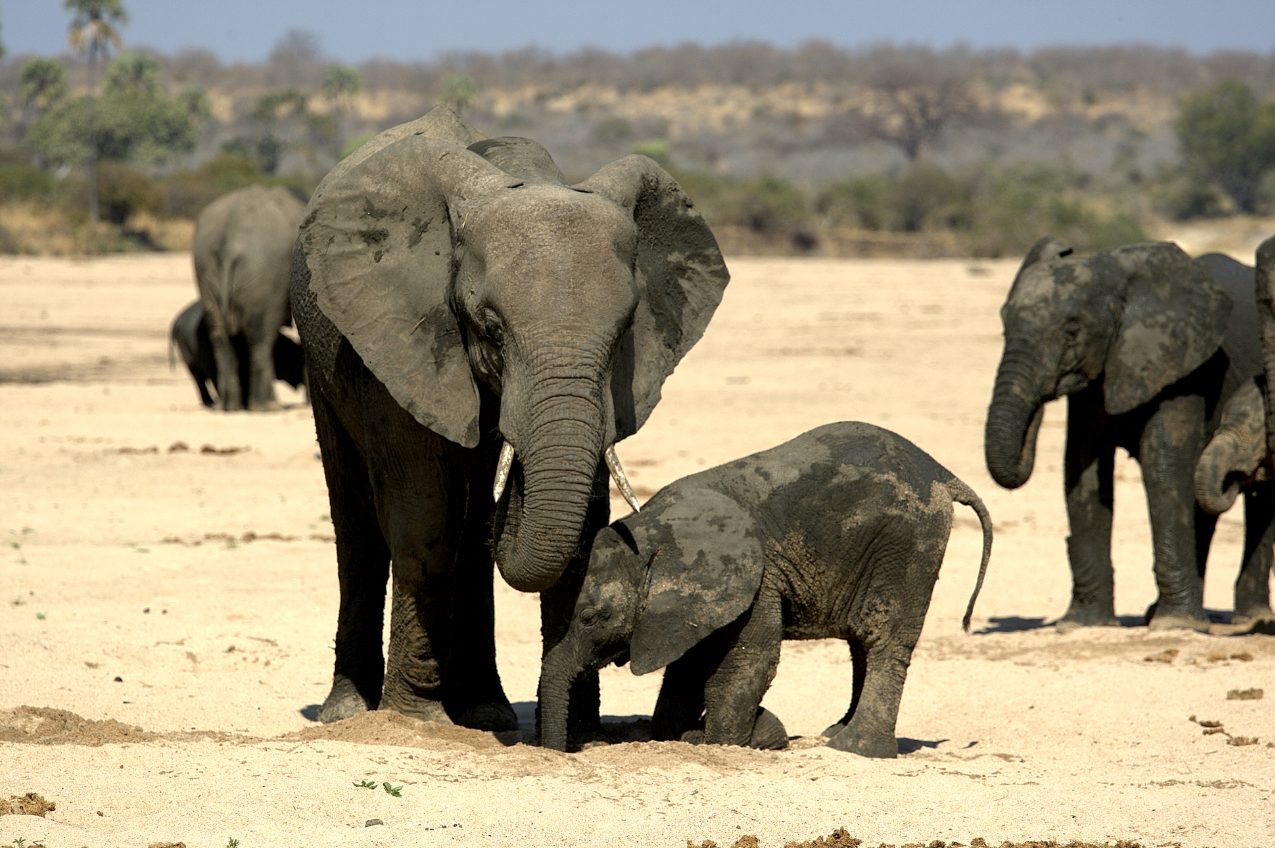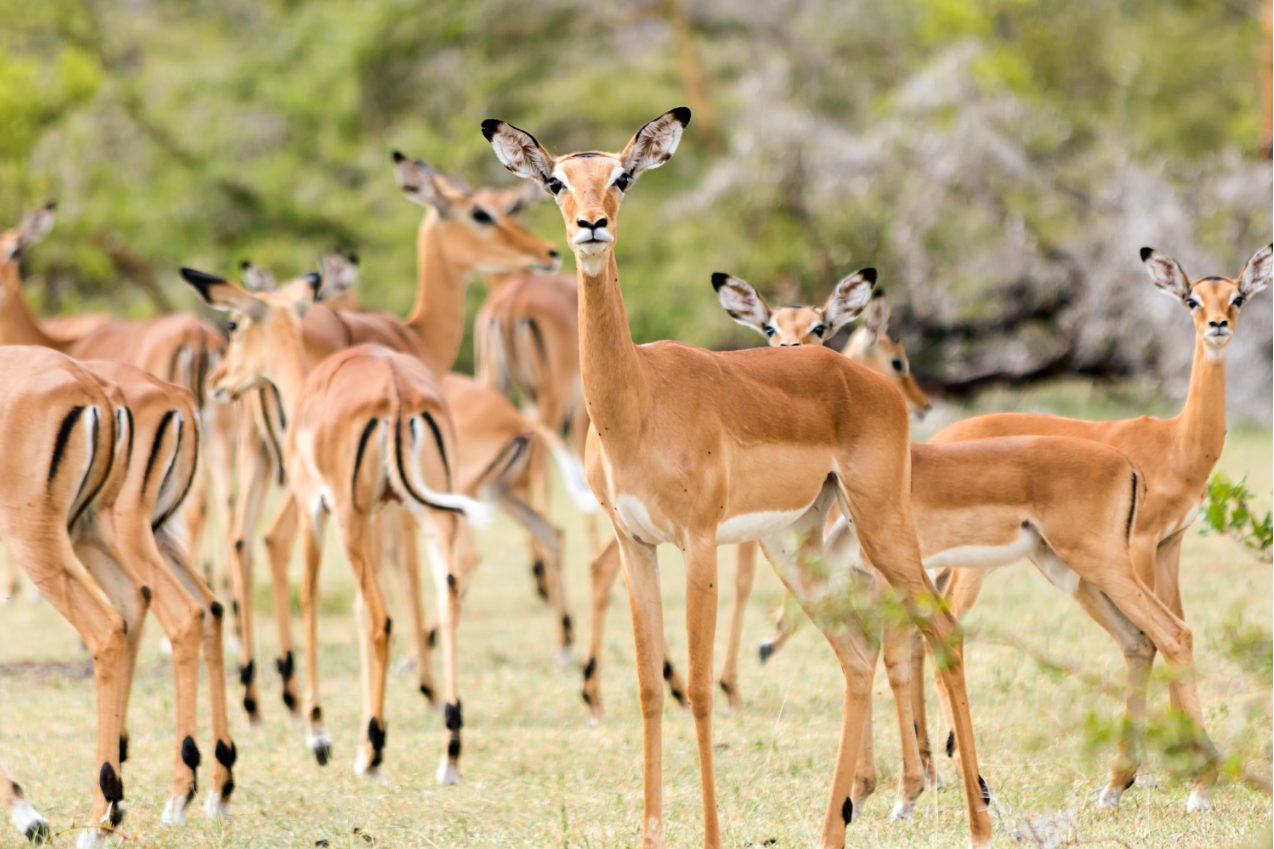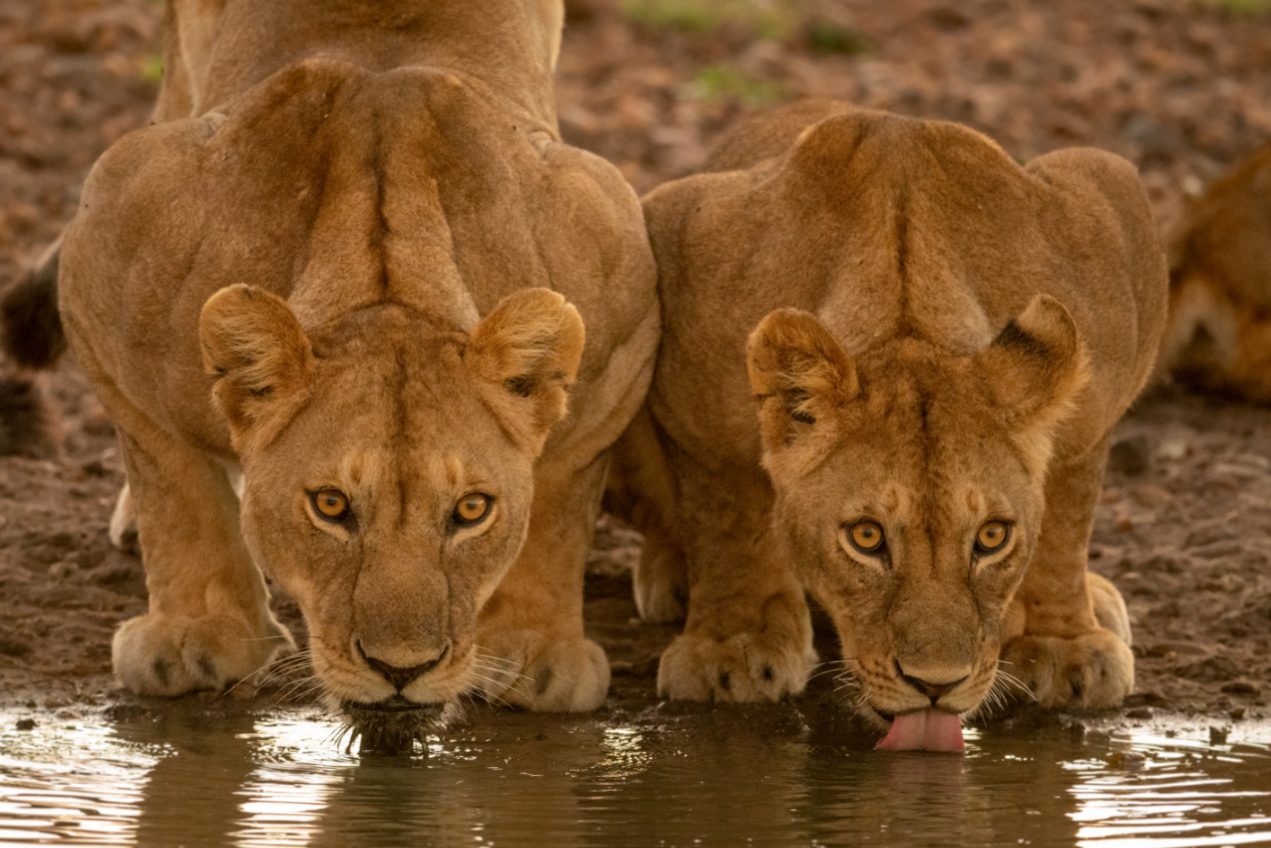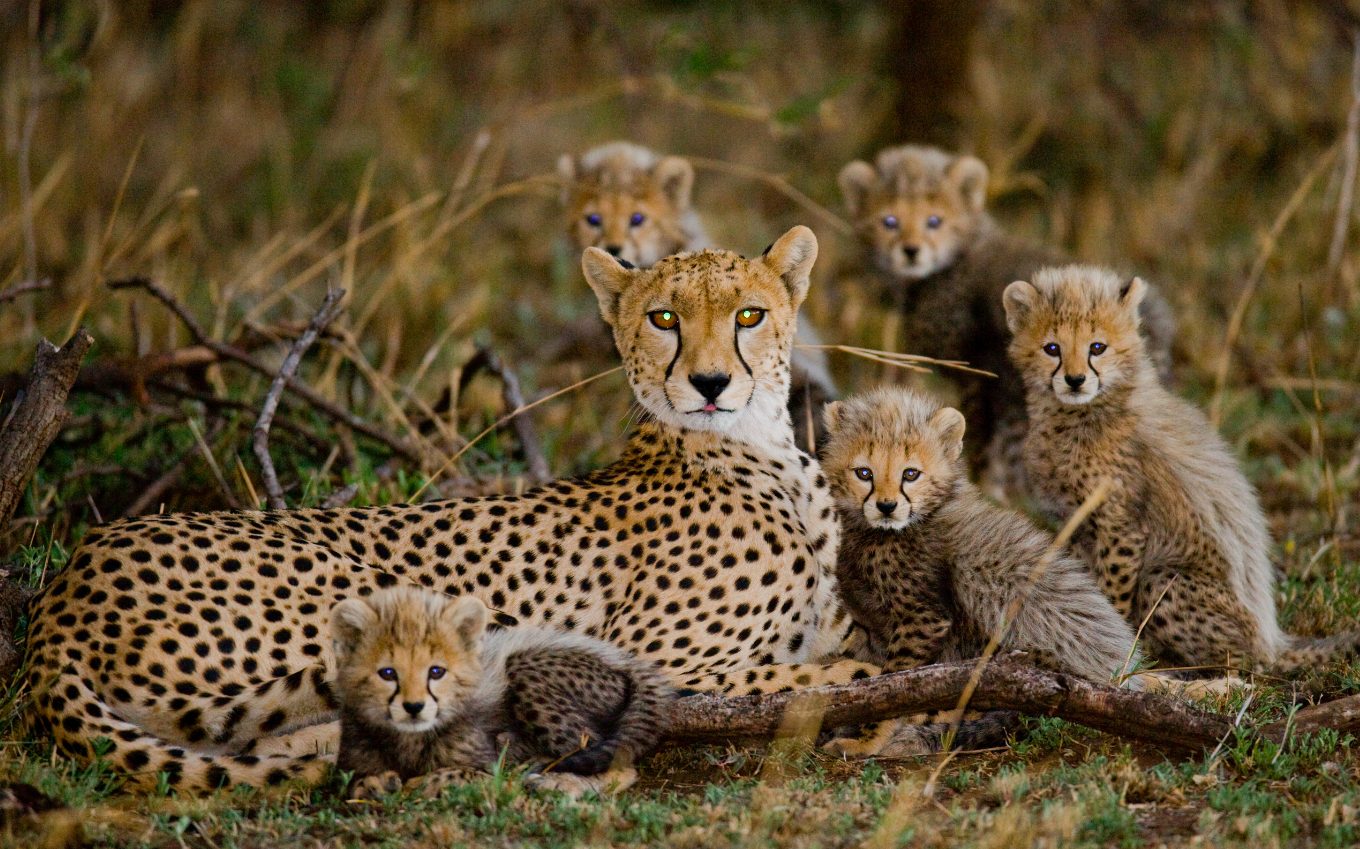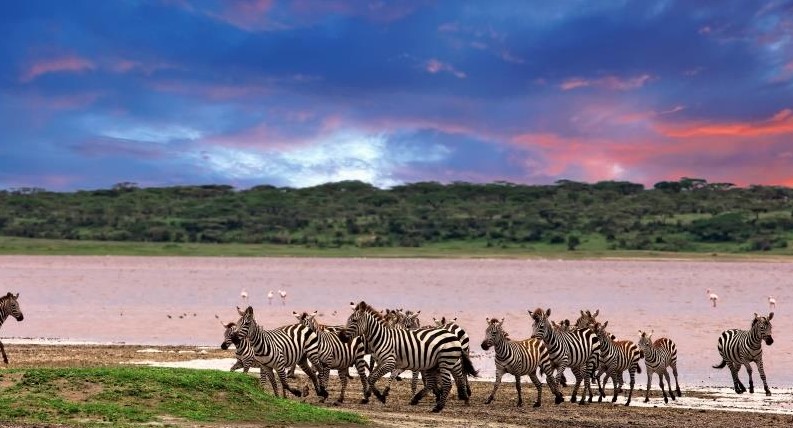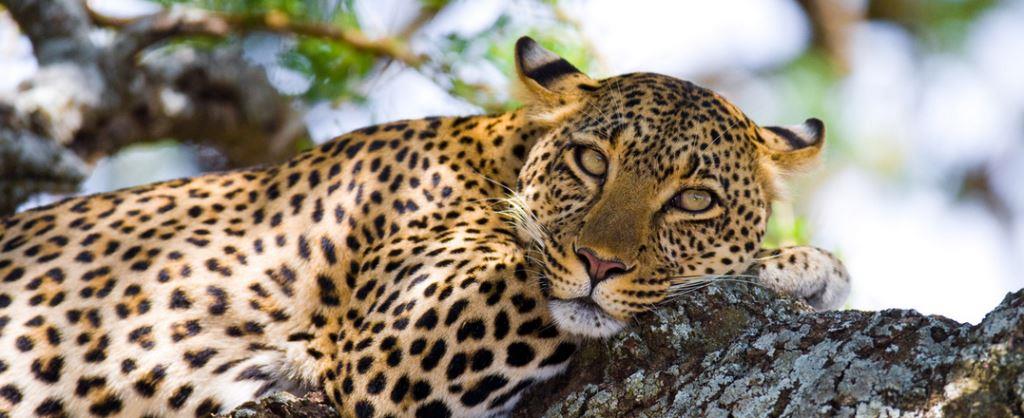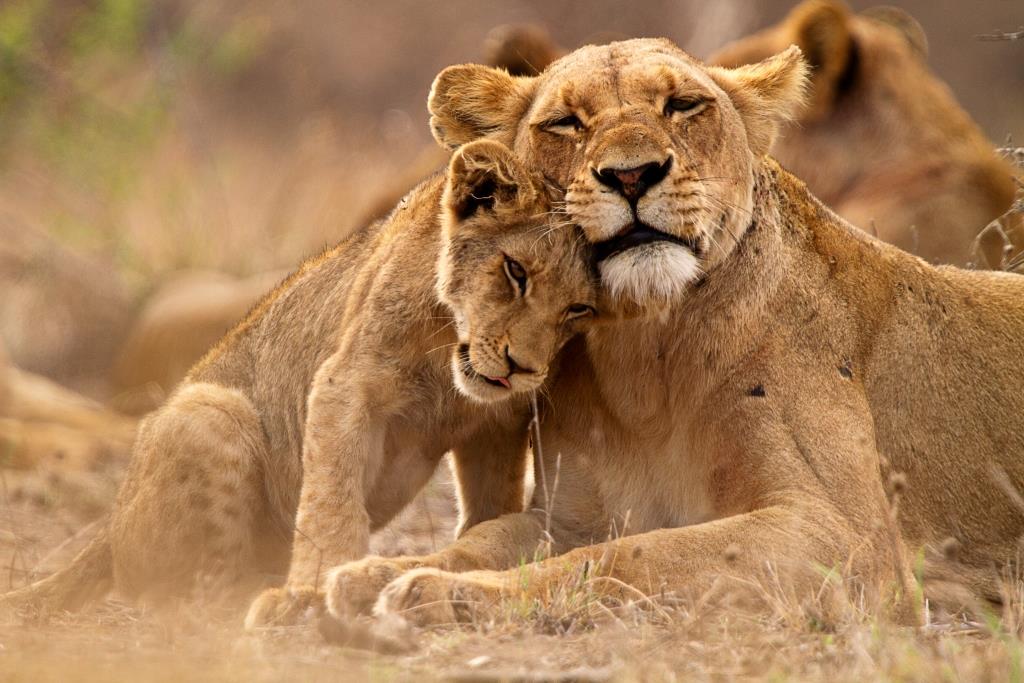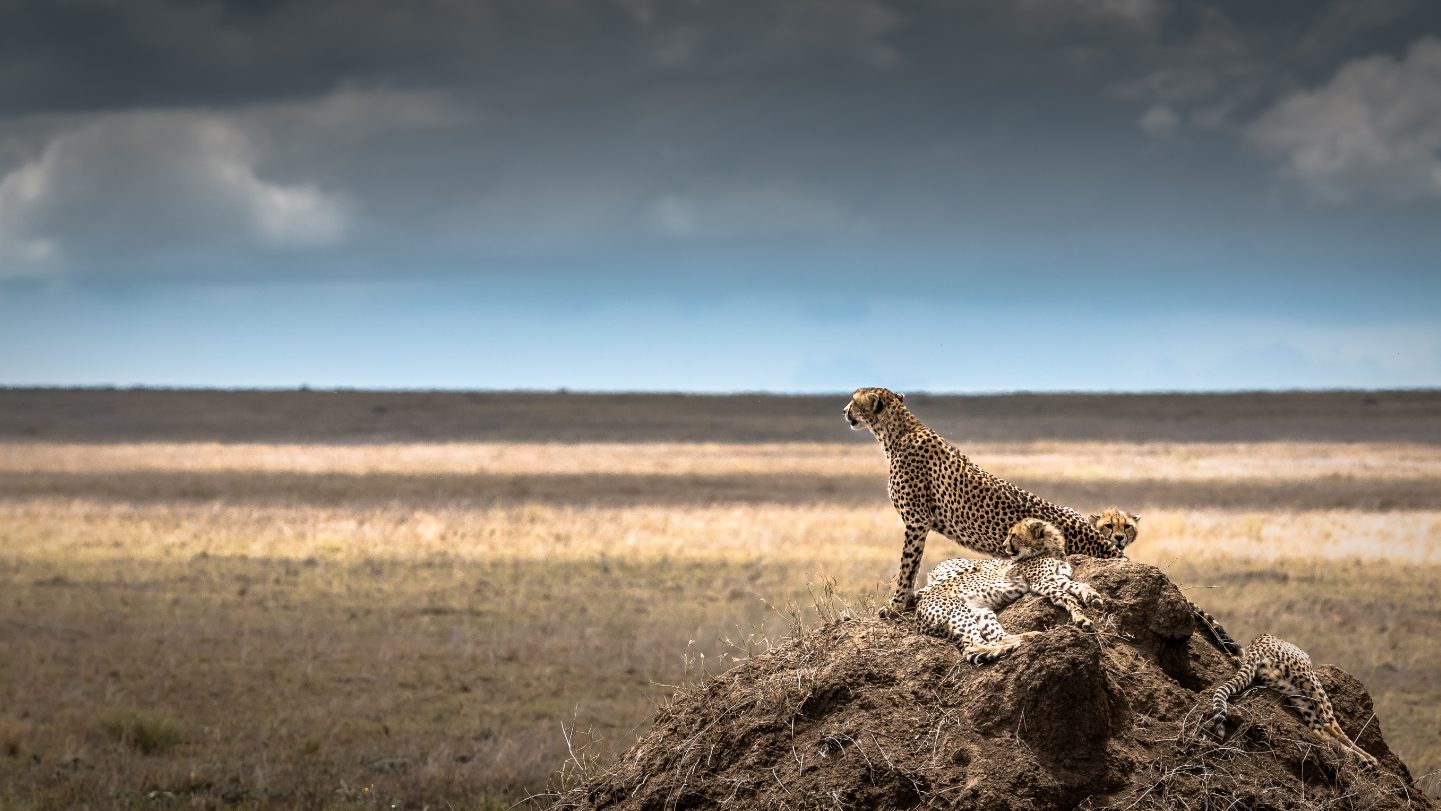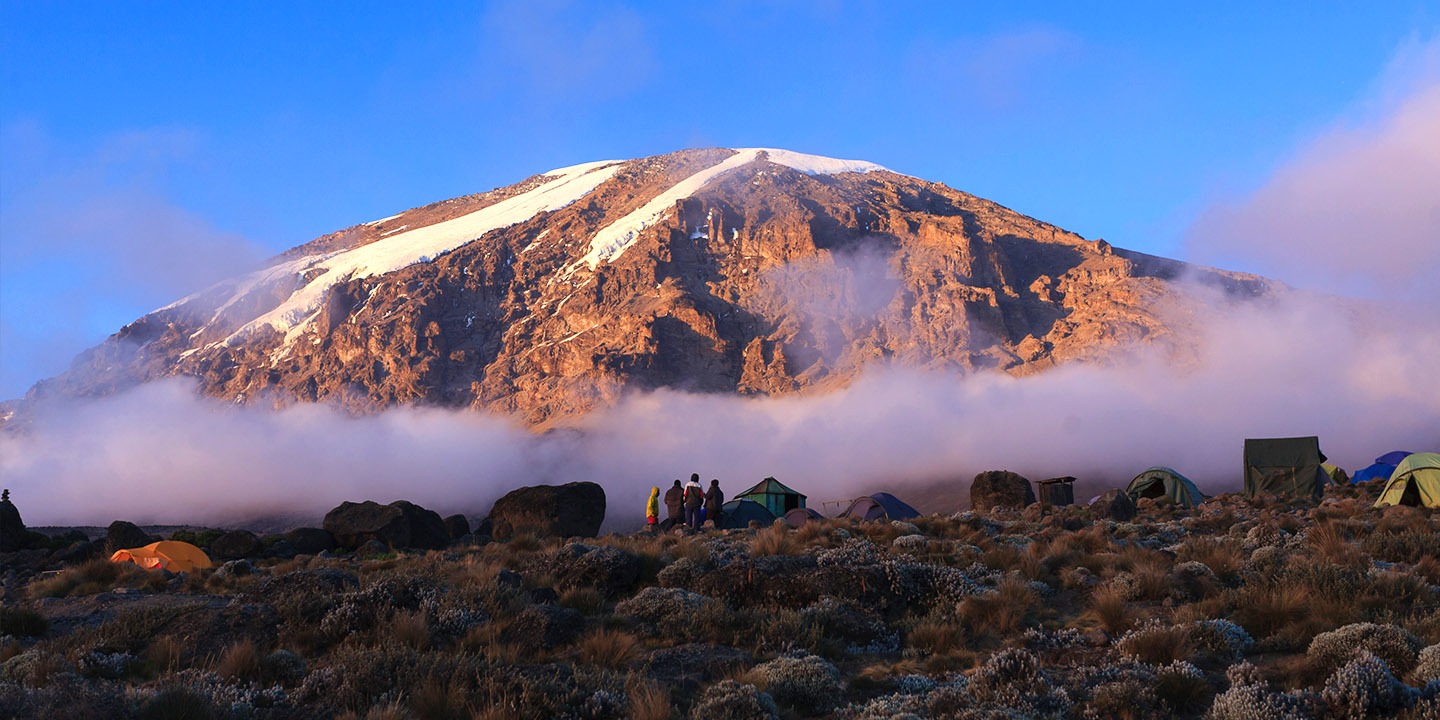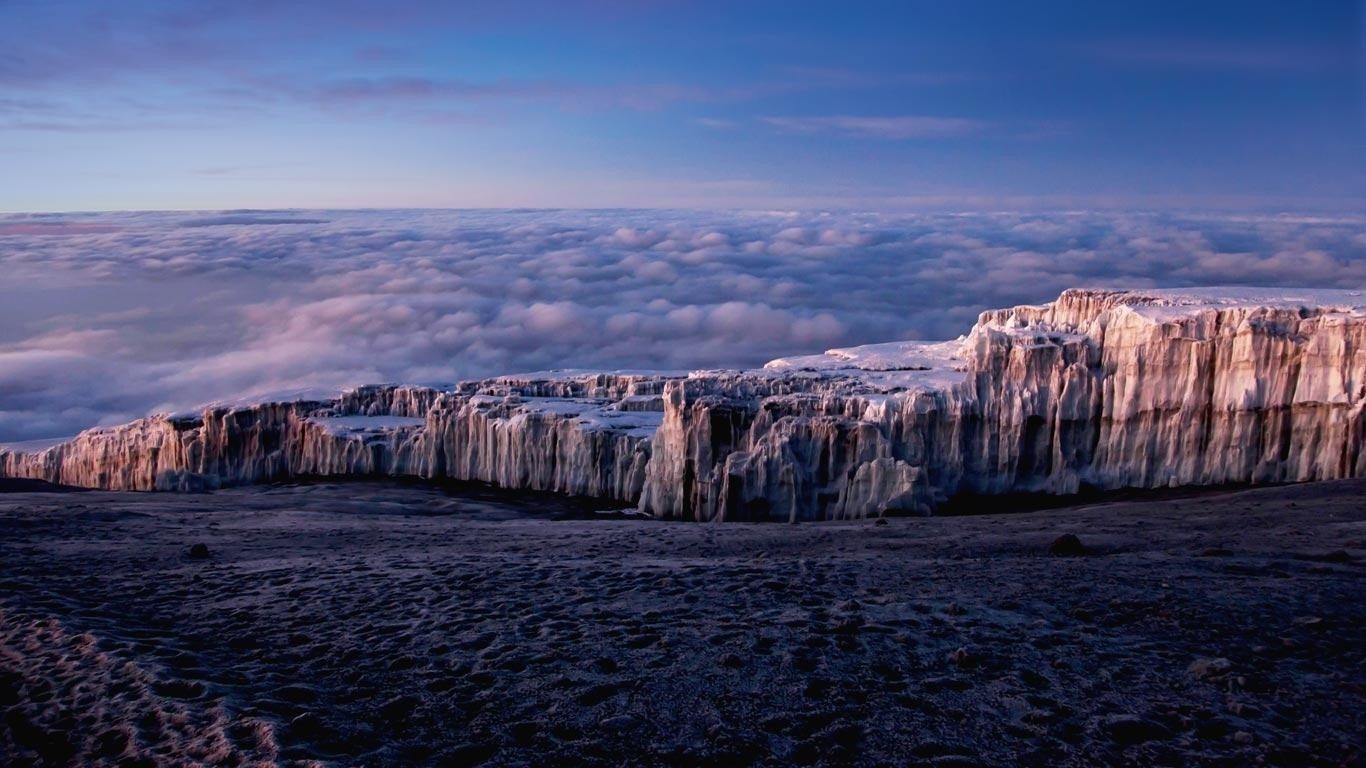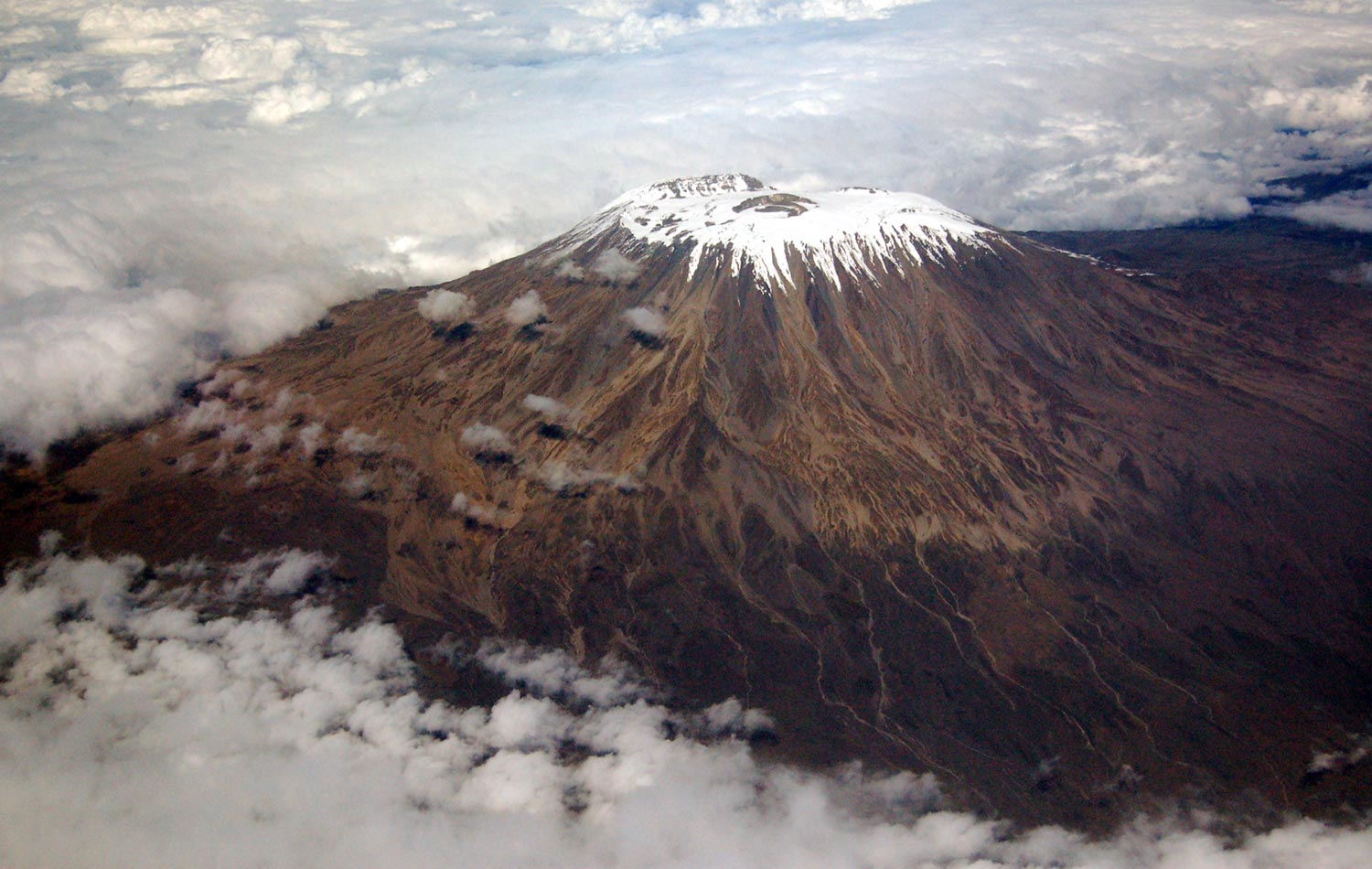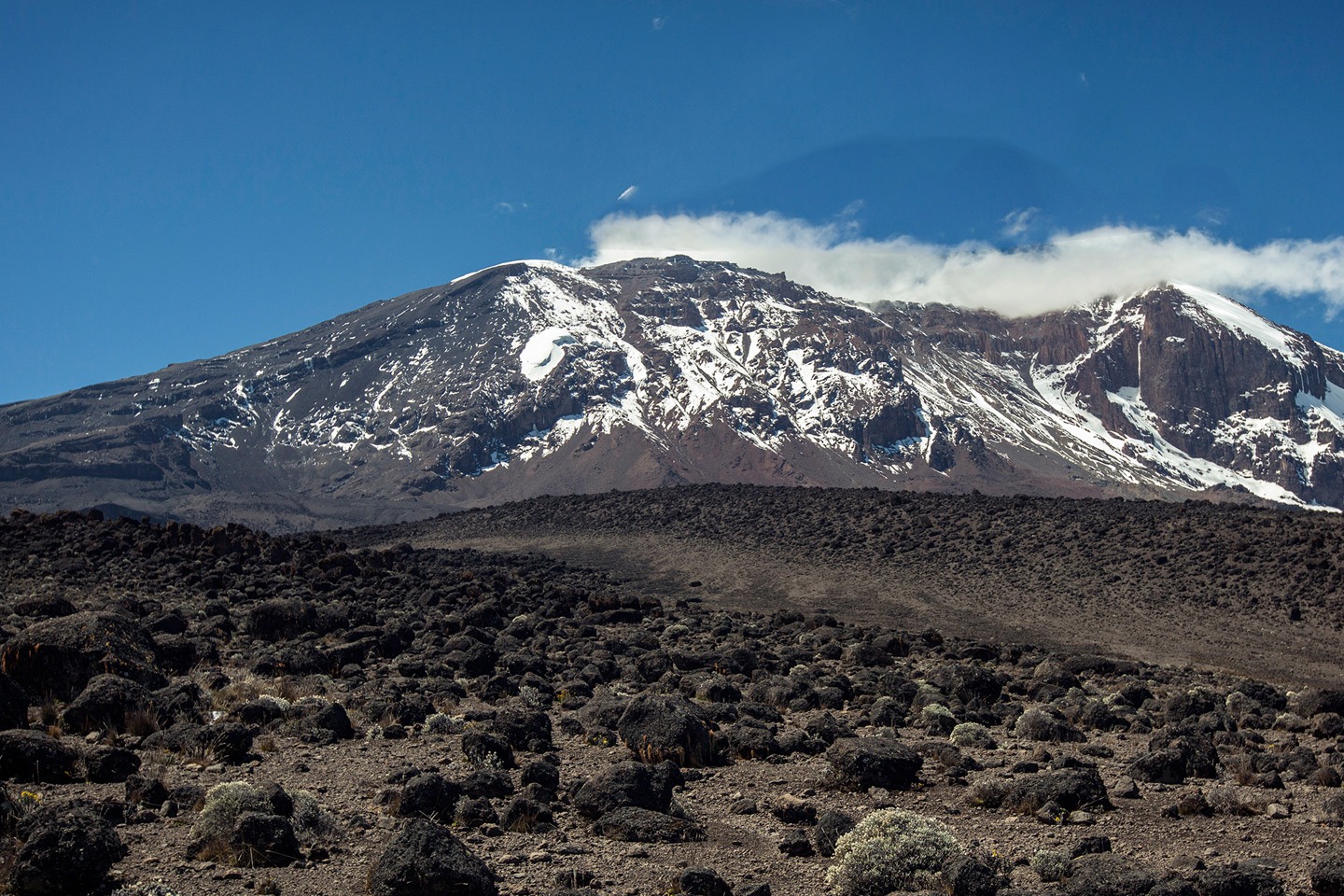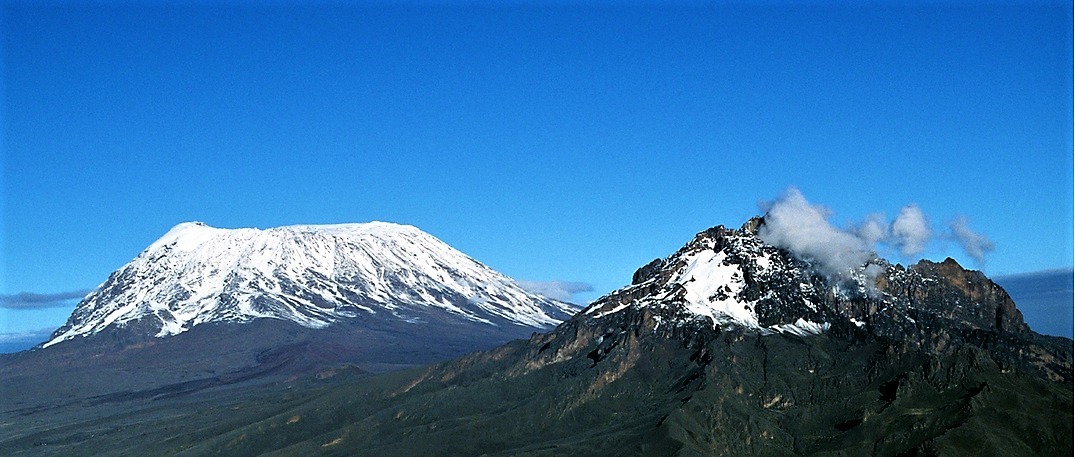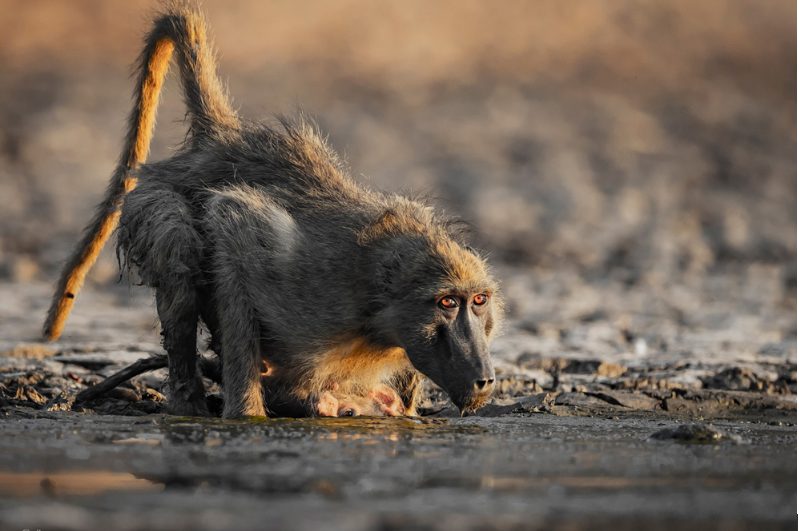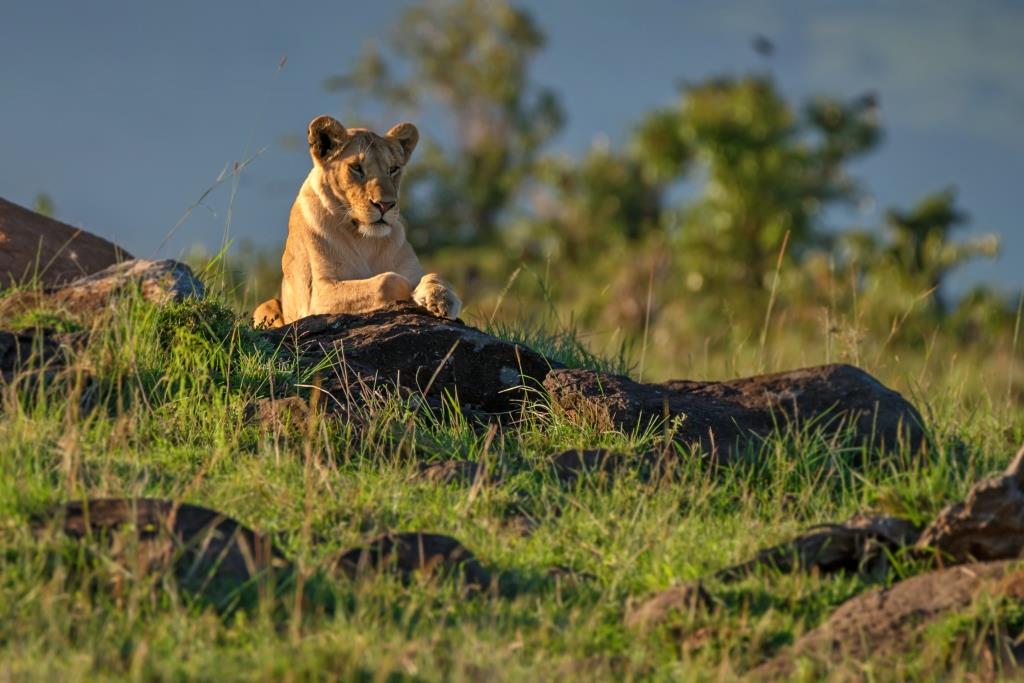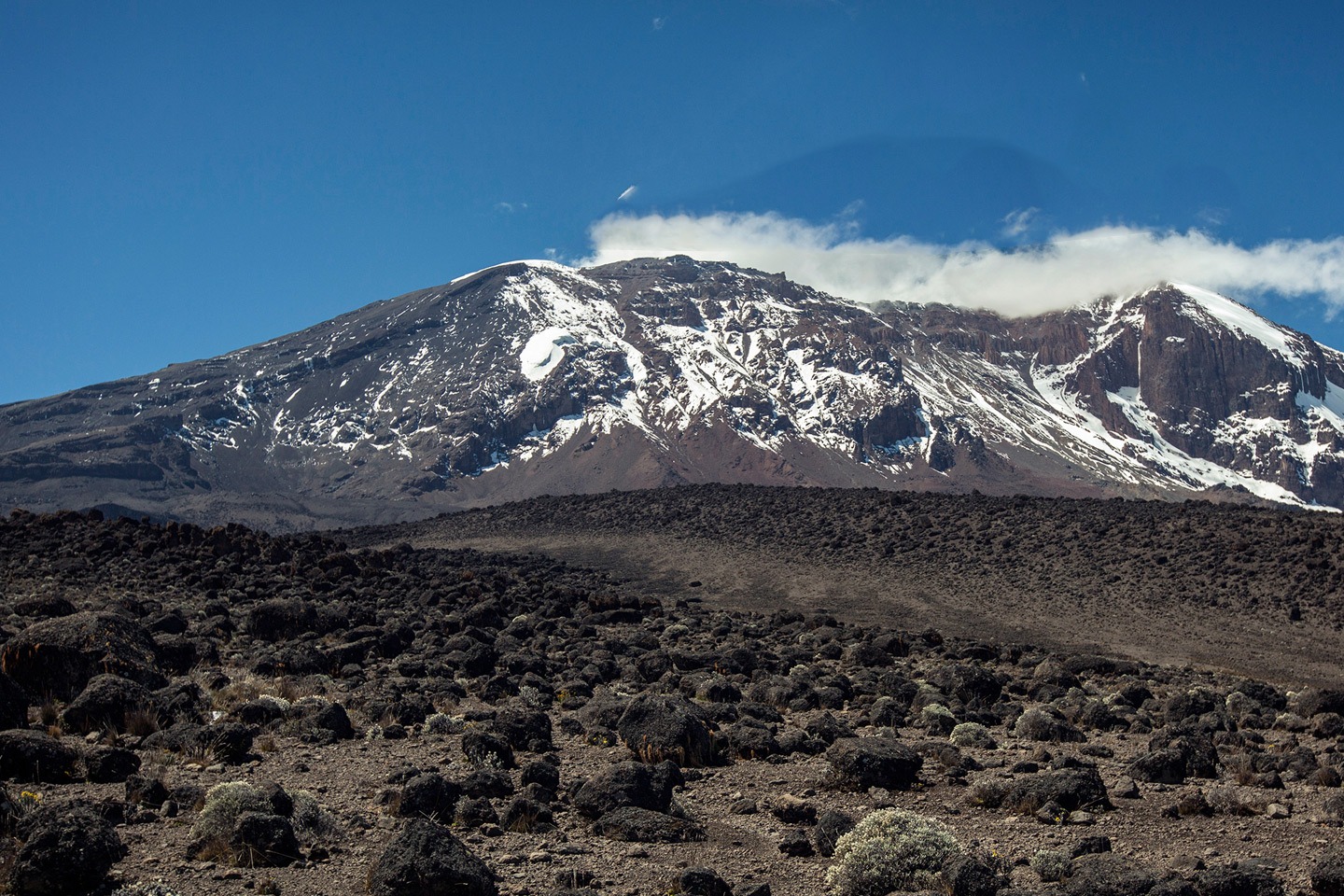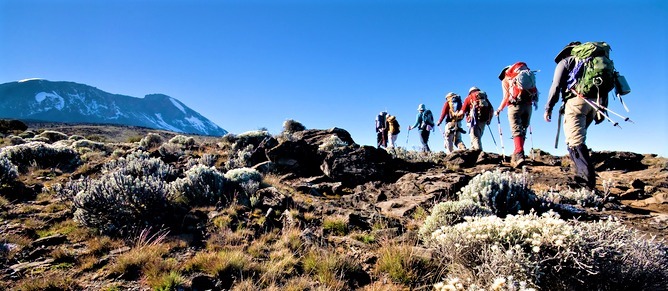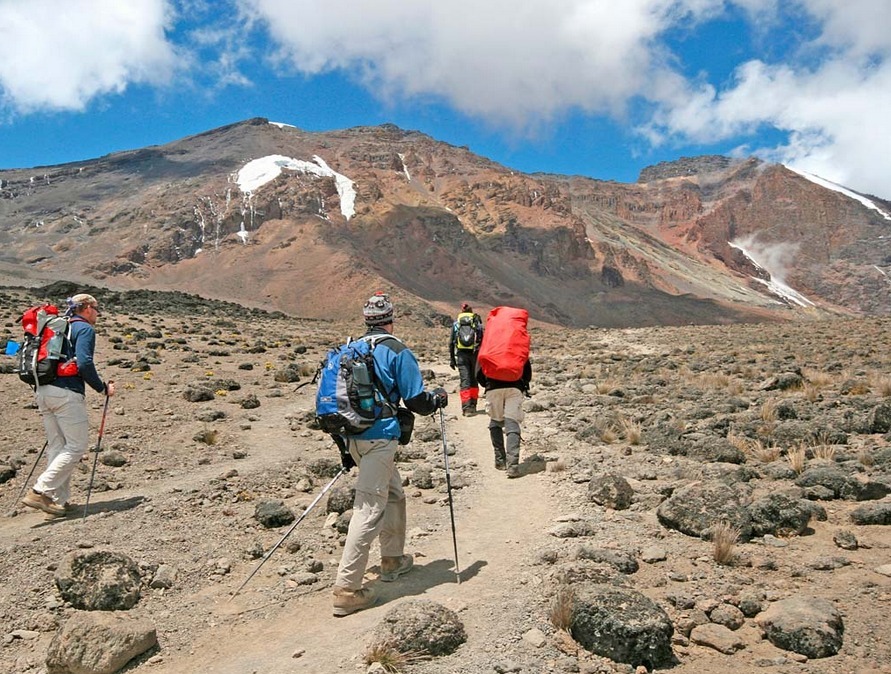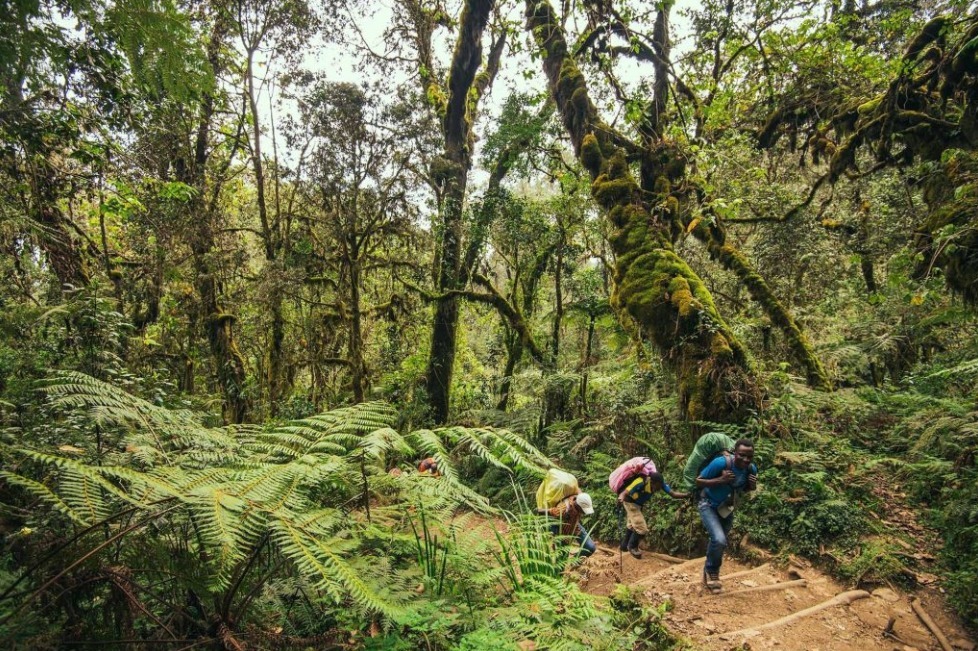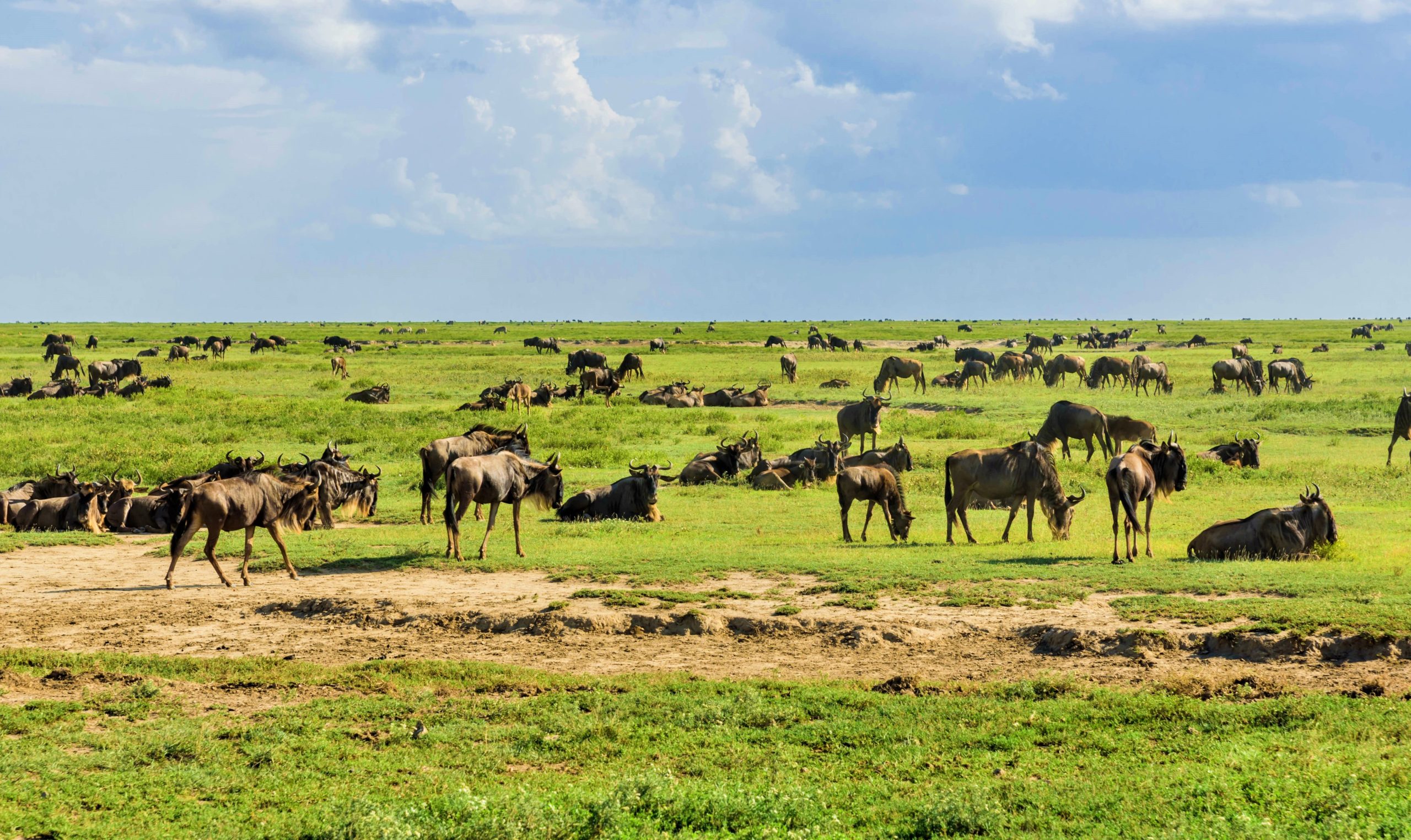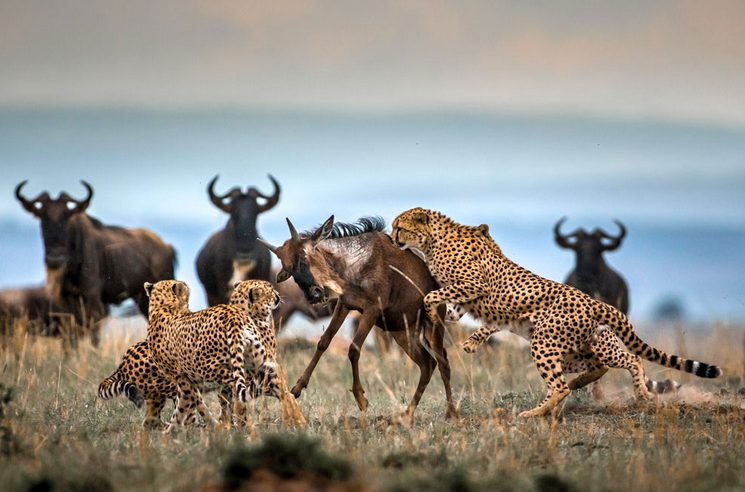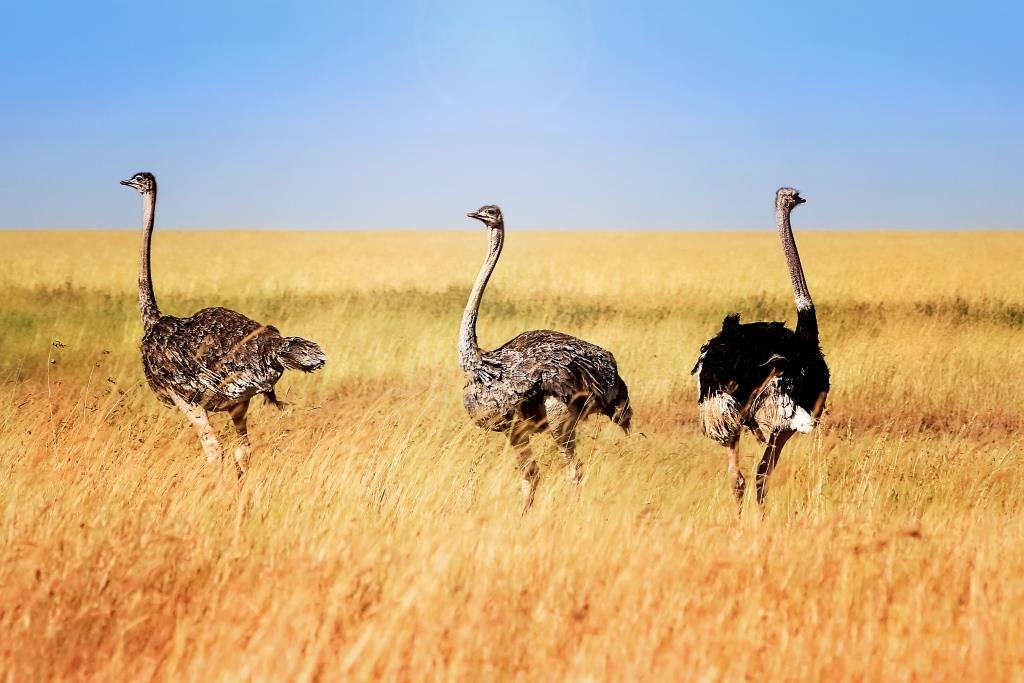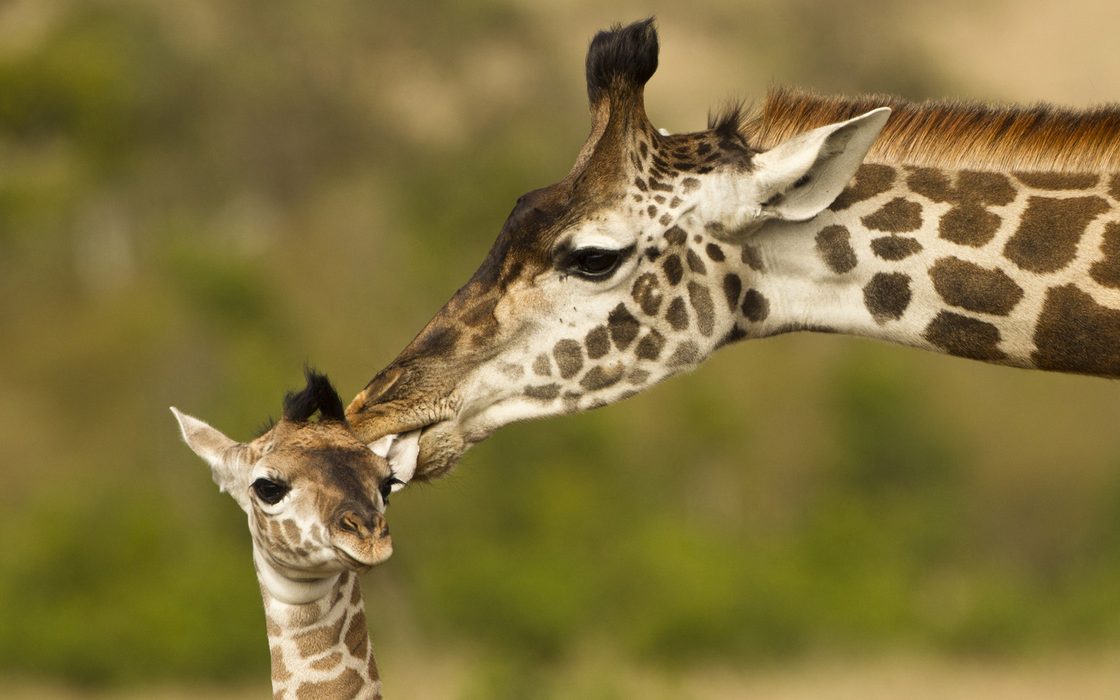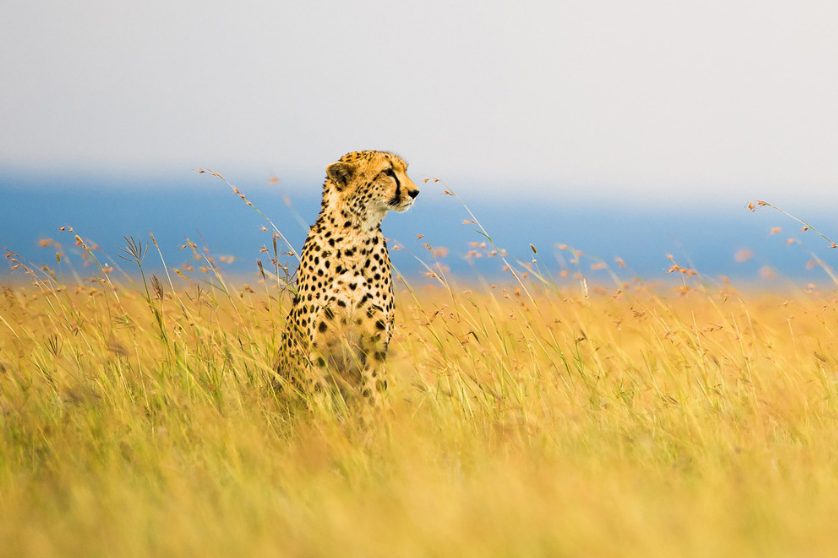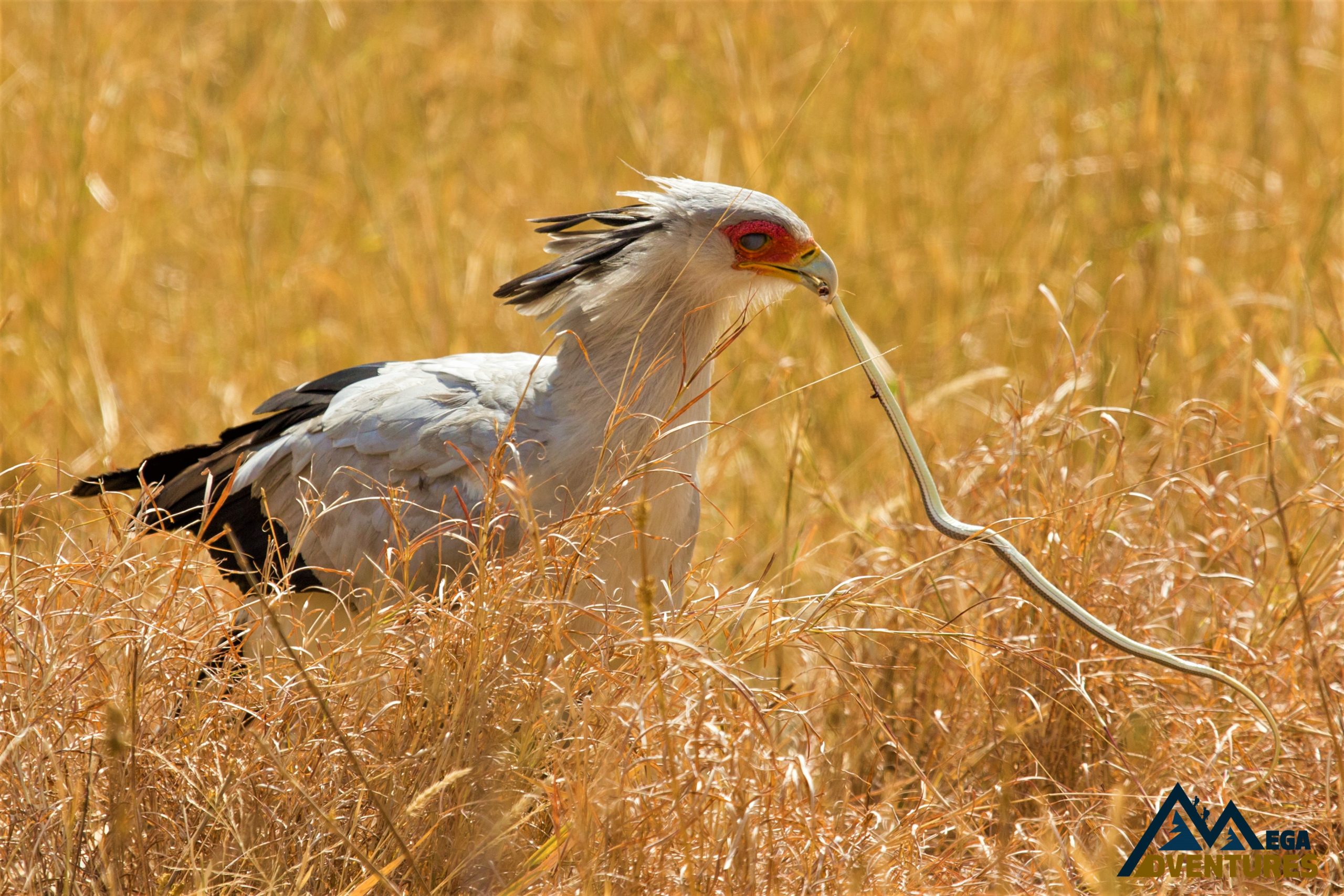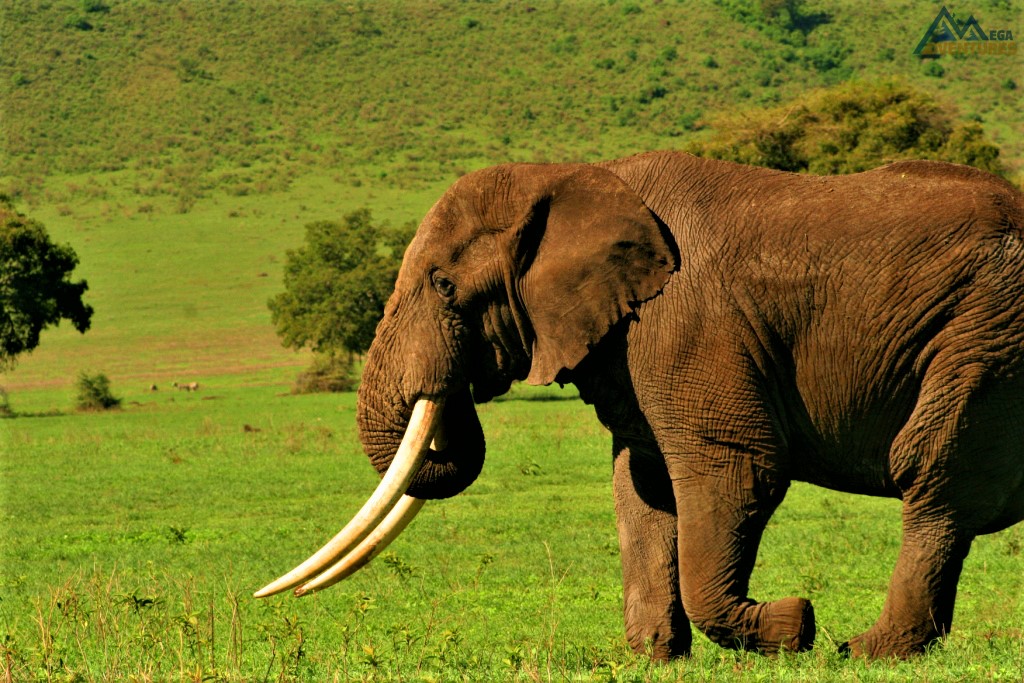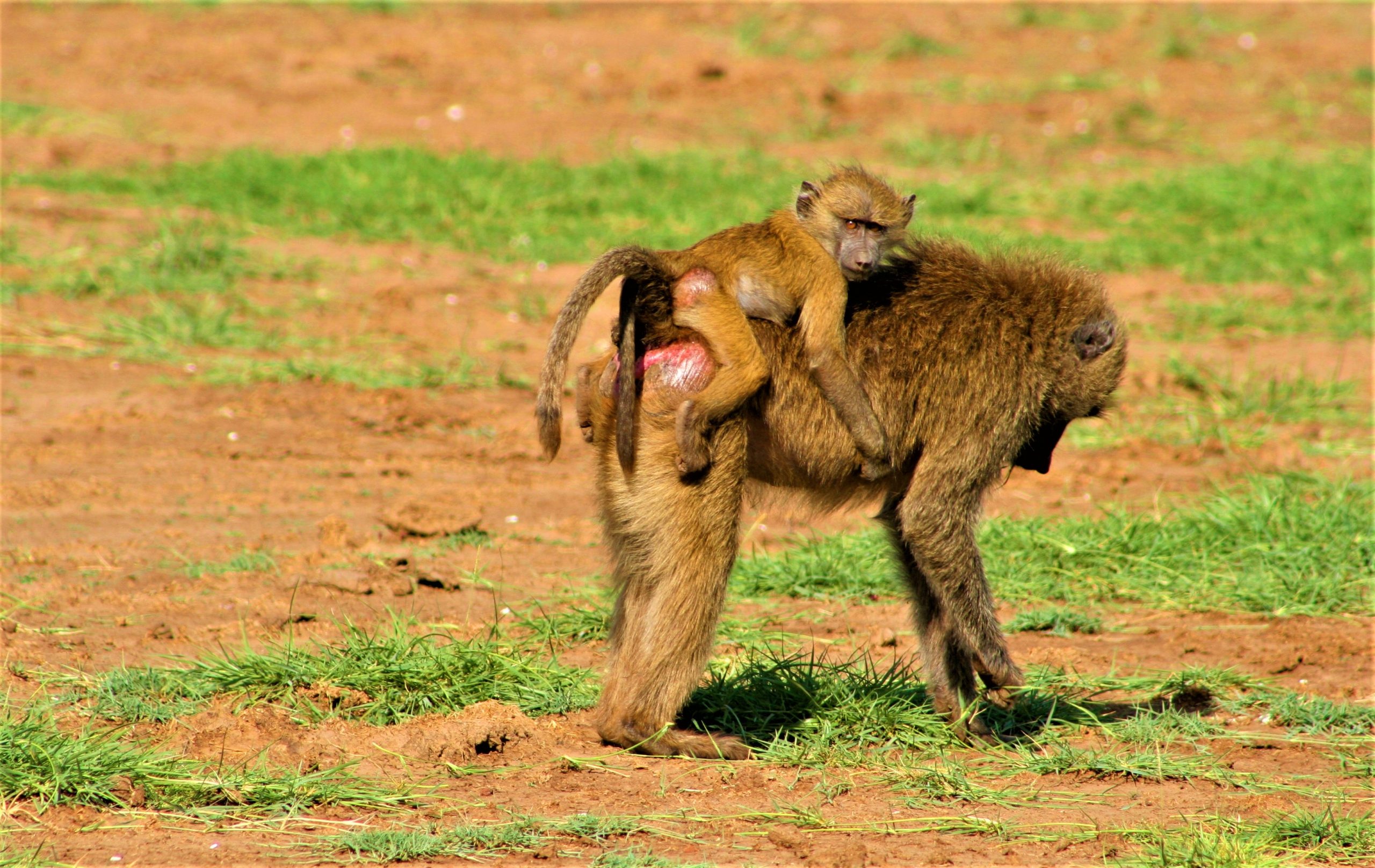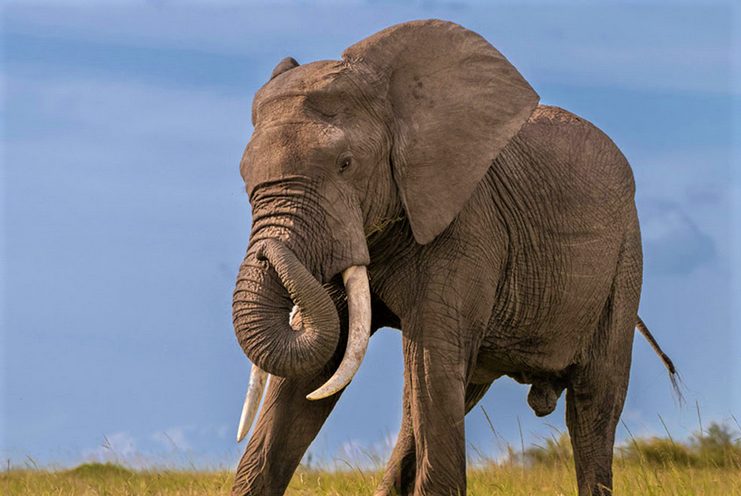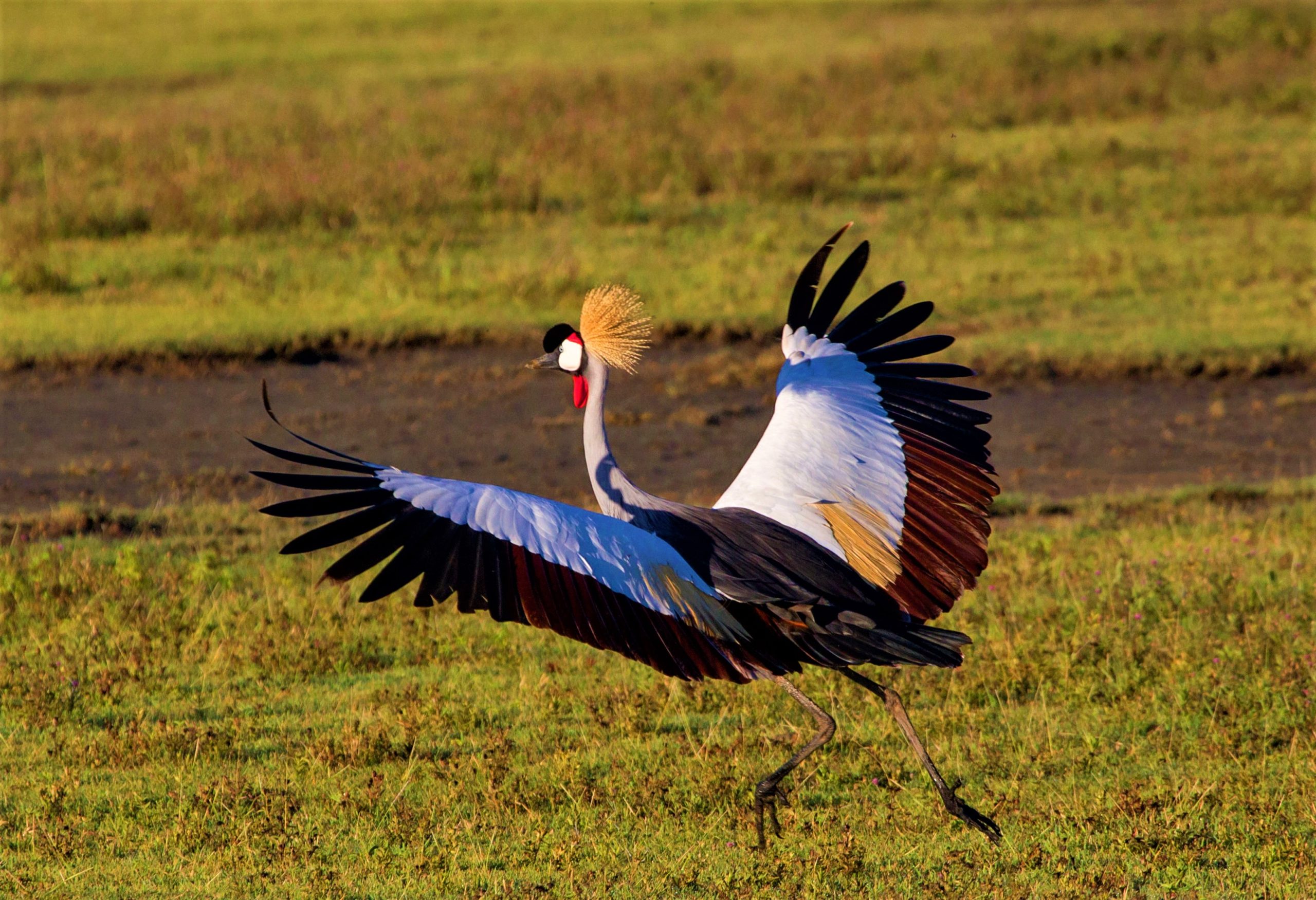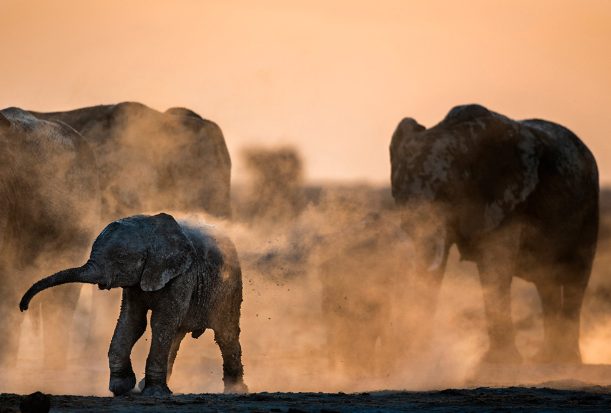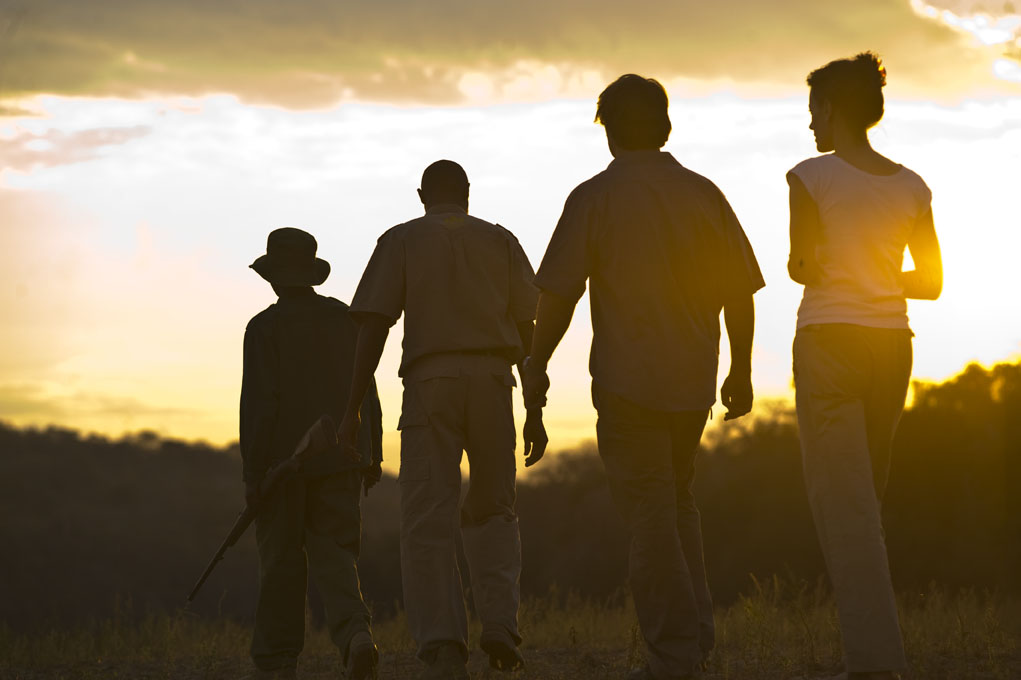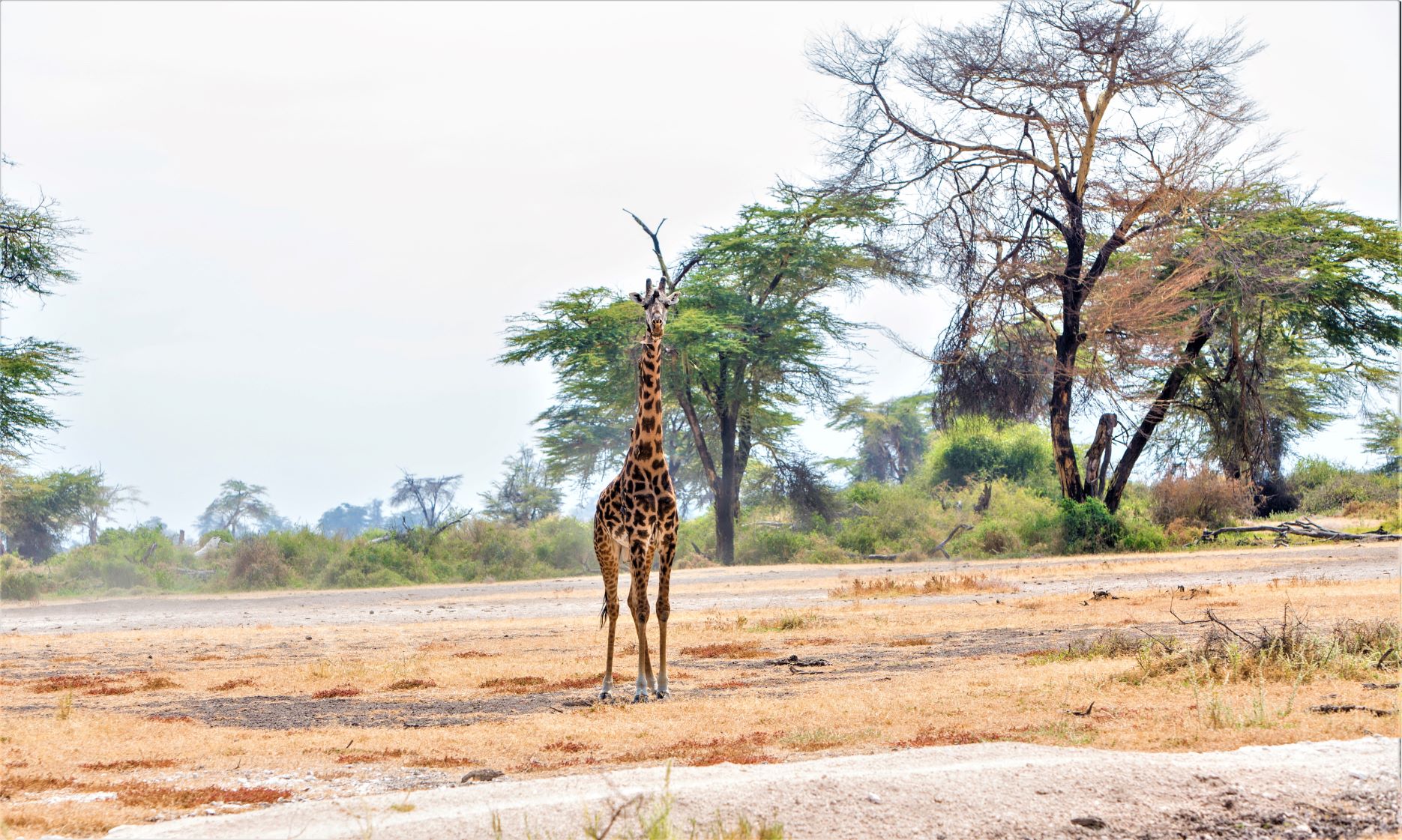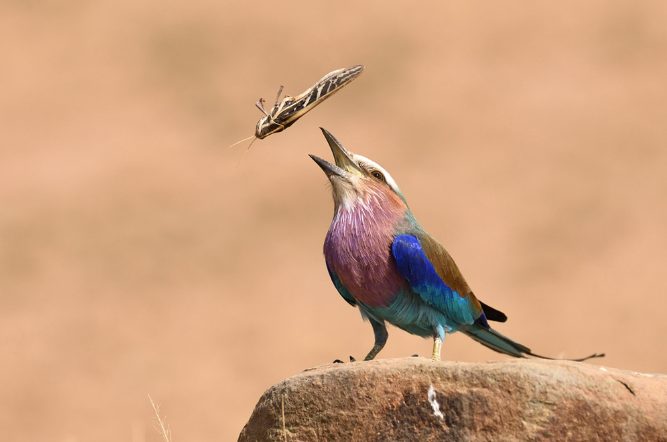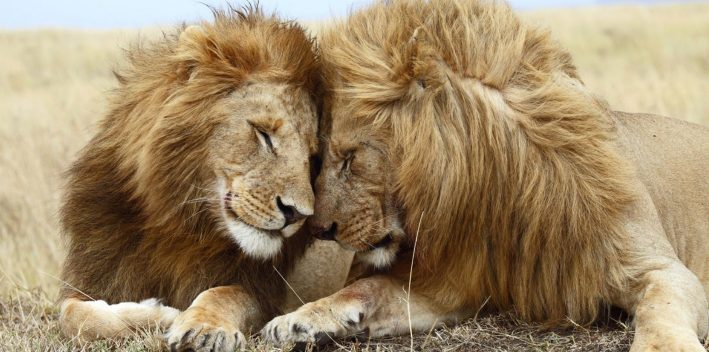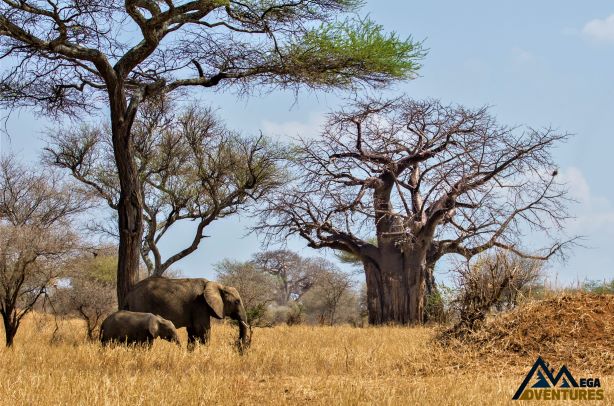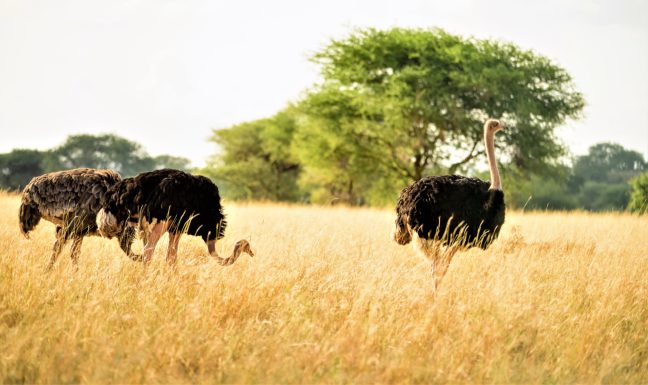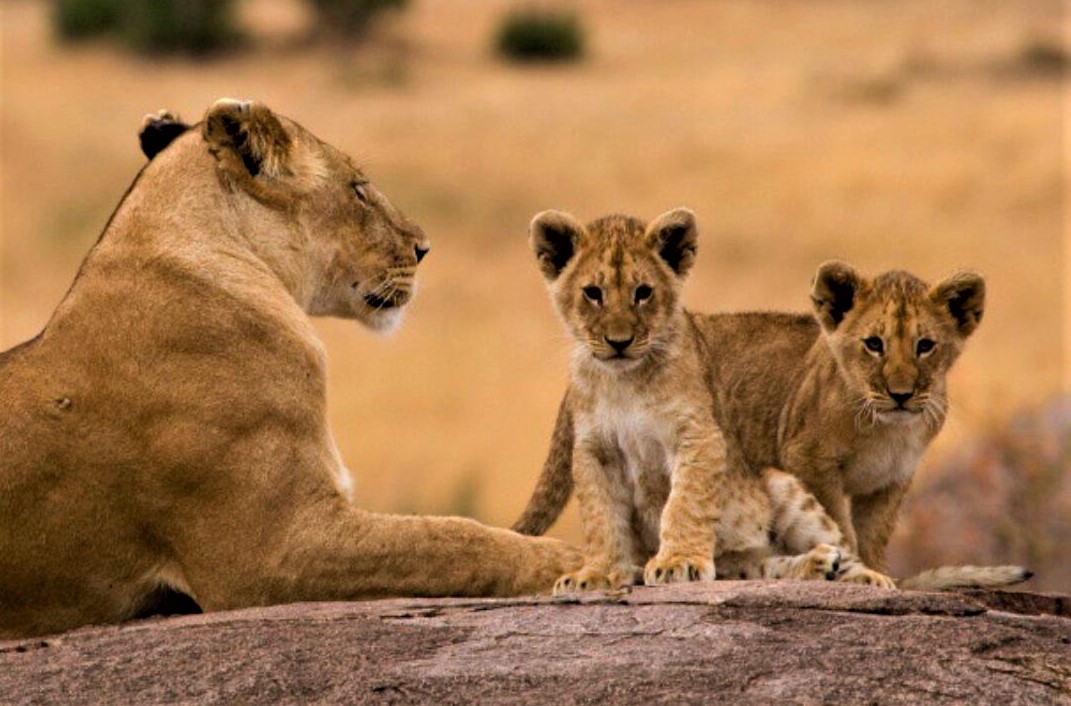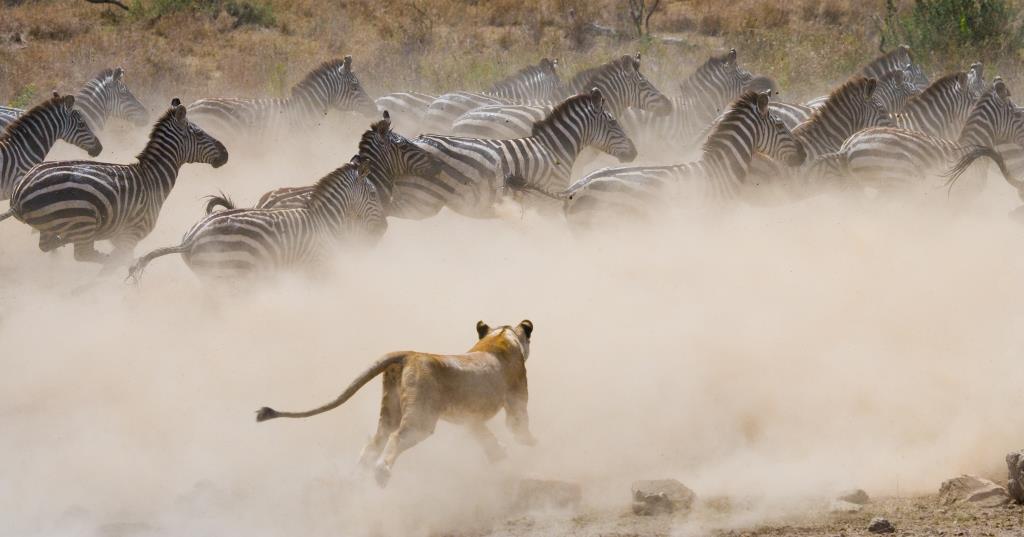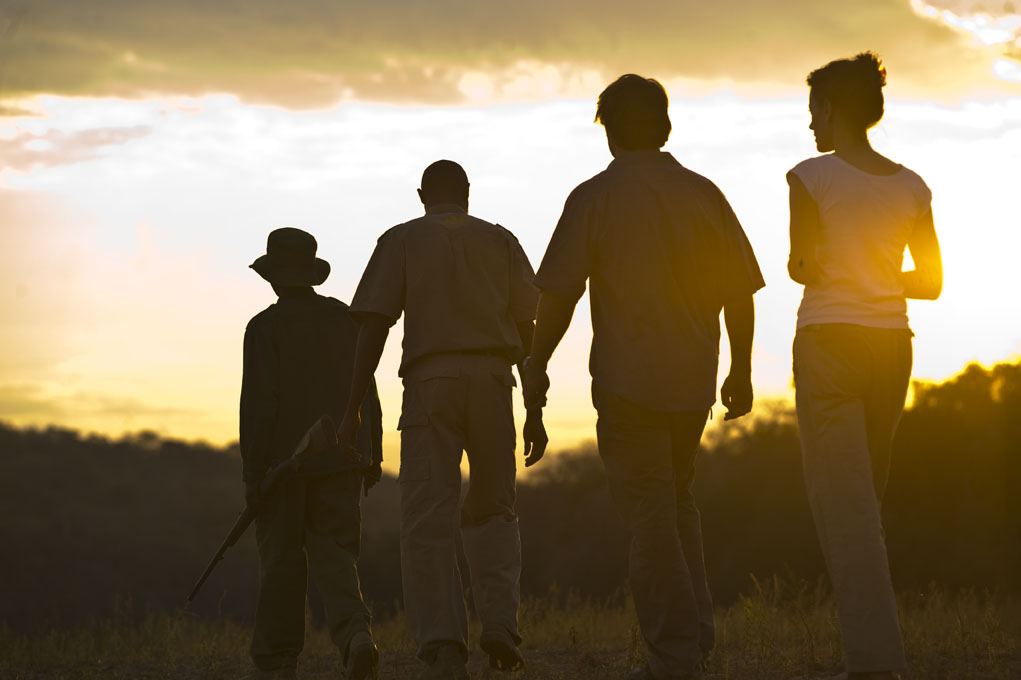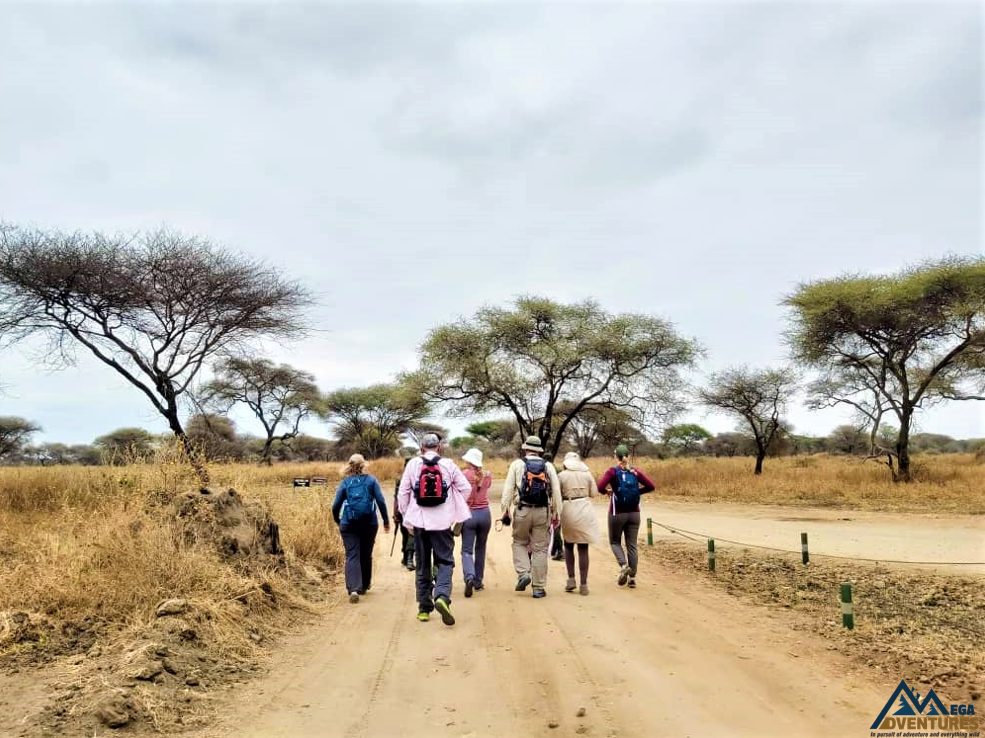Tarangire, Tanzania’s sixth largest national park covers an untamed 2850 sq. Kms. Uncrowded and unspoiled, it possesses a wild beauty and contains most of the animal species expected to be seen on a safari with the exception of Rhinos, which were wiped out by poaching in the 1980’s. The park has a range of different habitats, from grasslands and woods to the north to low hills, scrub and swampland down south. Cutting through these habitats is an evergreen corridor, the Tarangire River, the park’s main watering source for wildlife during the dry season. The park was named after this river that crosses it and empties its waters into Lake Burunge to the west. The park’s landscape and vegetation is of its own uniqueness with lightly wooded hills, dense bush and high grasses that can be found nowhere else in the northern circuit.
The park is famous for its large herds of elephants (up to 300 in a herd have been recorded) and baobabs, weird, ungainly and impressive trees that are several thousand years old and provide excellent silhouettes against the sky for sunset photos. Lions, leopards, cheetahs and its tree climbing pythons also attract a number of visitors throughout the season. Other large animals found in the park include wildebeest, zebra, buffalo, impala, Grant’s gazelle, hartebeest and eland among others. It is also the only park in Tanzania where rare antelopes such as the fringe-eared Oryx and peculiar long-necked Gerenuk are regularly observed.
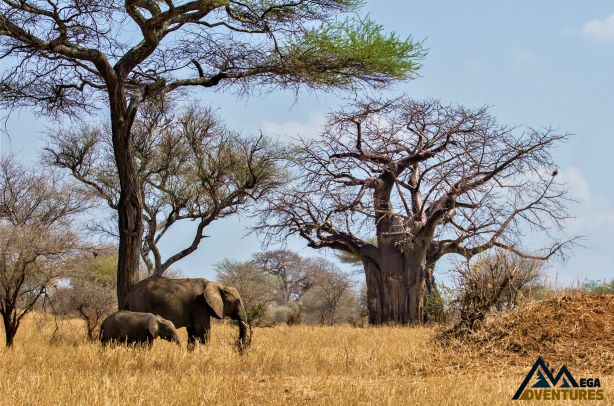
The evergreen swamps are the focus for 550 bird varieties, the most species in any park in Tanzania and about a third of all Tanzania’s species. Tarangire is also one of the world’s most important breeding grounds for Eurasian migrants. Other species of birds found in the park include yellow-collared lovebird, the Kori bustard – world’s heaviest flying bird, Ostrich and small parties of ground hornbills. The woodlands are rich in hoopoes, hornbills, brown parrots and the white bellied go away bird. Game birds such as the helmeted guinea fowl, yellow necked spurfowl and crested francolin abound. Over fifty species of raptors have been recorded, from the common Bateleur eagle, whose name means “tumbler” in French, to the Steppe eagle, a migrant from Russia and giants such as the lappet faced vulture to the tiny pygmy falcon. Here, where birdsongs start well before dawn and continue well into the night is the keen birders’ “piece of heaven on earth”!
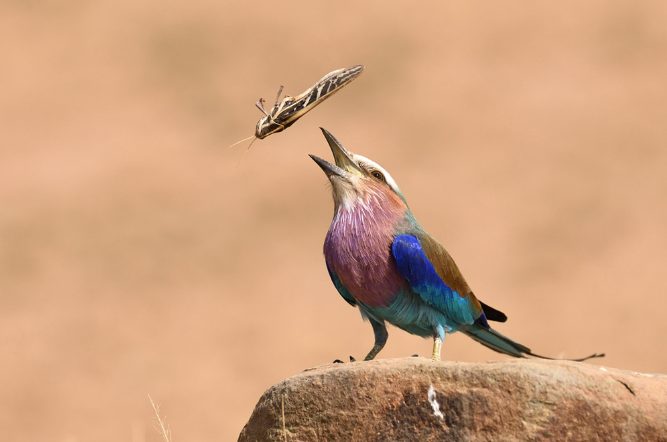
Climate:
Tarangire National Park like the Ngorongoro and Serengeti has bimodal rainfall. Short rains starting from November to December and long rains from March to May. It usually rains in the afternoon but seldom for the whole day.
The dry season is from June to October and January to February.
Temperatures during the dry season average at 26 C° in the afternoon and drop down to 14 C° during the evenings at night. Warm clothes for the evening and early mornings are recommended.
During the Wet season the temperatures are usually around 28 C° in the afternoon and around 16 C° at night.
The park is located at an altitude between 900m and 1250 meters with annual average rainfall ranging from 650 to 700 mm.
Best time to visit:
The Dry season, from late June to October, is the best time for wildlife viewing in Tarangire National Park. The Tarangire river which never dries act as a magnet to the wildlife in this ecosystem. Animals congregate around the Tarangire river making game viewing the best during the dry season. In contrast to the wet season most of the animals migrate out of the park, and wildlife viewing is considerably less.
Accessibility:
By Road: Tarangire National Park is easily accessible from Arusha city on tarmac road which is 121Kms from Tarangire National Park. It takes less than 2 hours to reach.
By Air: Chartered flight from Arusha airport or Kilimanjaro international Airport to Kuro Airstrip inside the Park.
Accommodation:
Tarangire National Park offers diverse options of accommodations inside and outside the Park. Public camping, Special camping, Tented camps, Tented lodges and Lodges .
Activities:
- Game drives
- Walking safari
- Night Game drives
- Camping
- Balloon Safari



